Forums
- Forums
- Axis And Allies Forum
- General Discussion
- Aviation News
Aviation News
Post a reply
- Go to Previous topic
- Go to Next topic
- Go to Welcome
- Go to Introduce Yourself
- Go to General Discussion
- Go to Screenshots, Images and Videos
- Go to Off topic
- Go to Works in Progress
- Go to Skinning Tips / Tutorials
- Go to Skin Requests
- Go to IJAAF Library
- Go to Luftwaffe Library
- Go to RAF Library
- Go to USAAF / USN Library
- Go to Misc Library
- Go to The Ops Room
- Go to Made in Germany
- Go to Campaigns and Missions
- Go to Works in Progress
- Go to Juri's Air-Raid Shelter
- Go to Campaigns and Missions
- Go to Works in Progress
- Go to Skinpacks
- Go to External Projects Discussion
- Go to Books & Resources
-
 Main Admin12.10.2020.
Main Admin12.10.2020.
A U.S. Air Force B-52 Stratofortress, assigned to the 2nd Bomb Wing, flies over Southwest Asia during a aerial refueling mission with KC-135 Stratotanker aircraft assigned to the 340th Expeditionary Air Refueling Squadron Dec. 10, 2020. Bomber Task Force missions or deployments showcase the Air Force?s capability to rapidly and effectively support missions around the globe and seamlessly integrate into operations. (U.S Air Force photos by Master Sgt. Joey Swafford)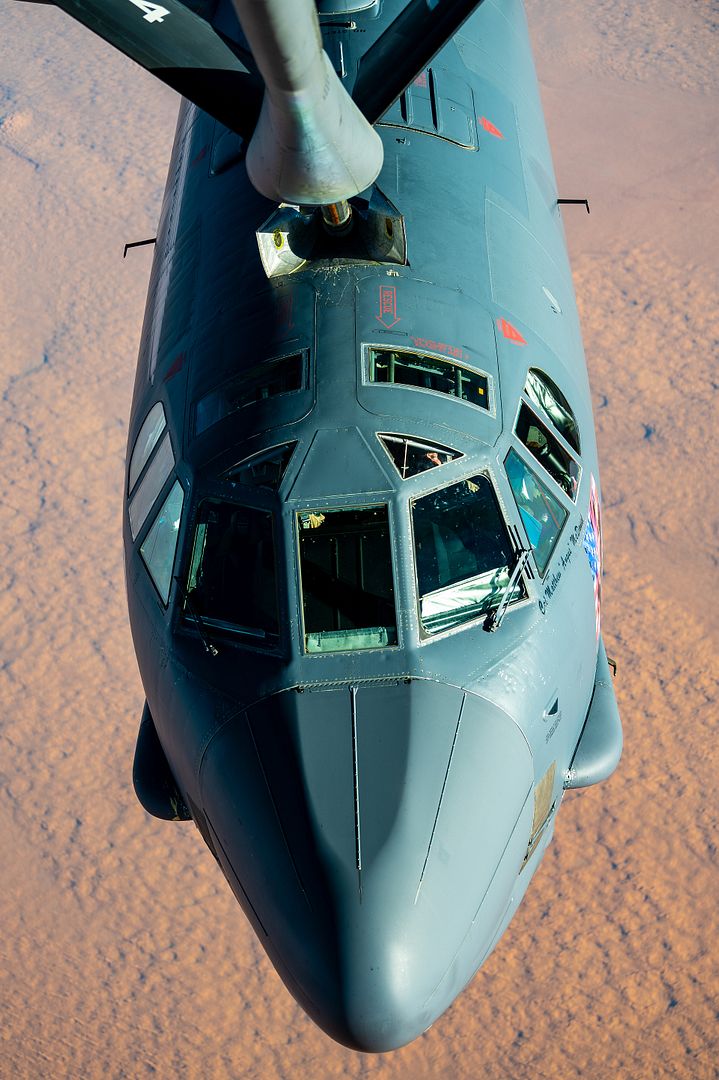
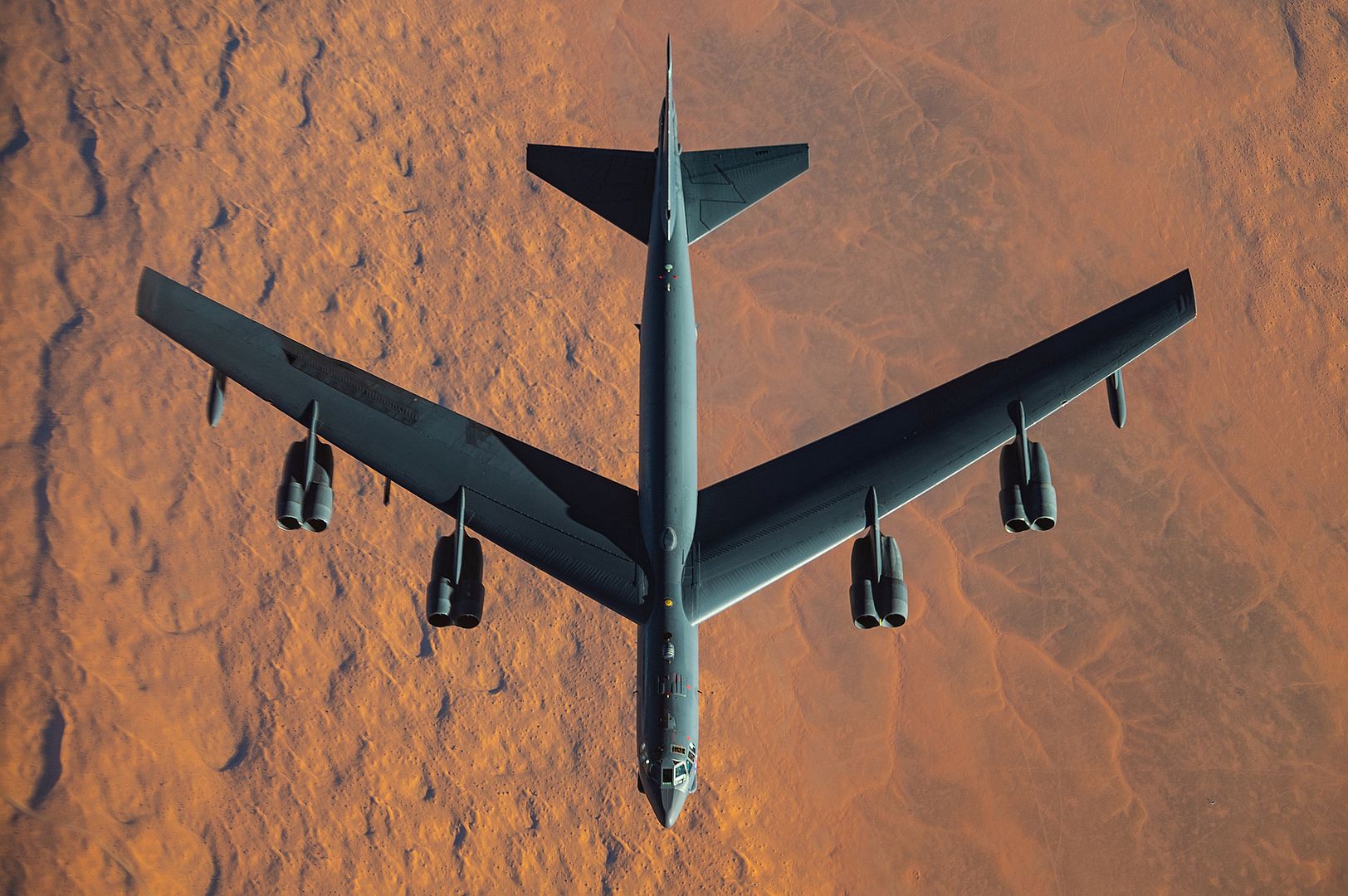
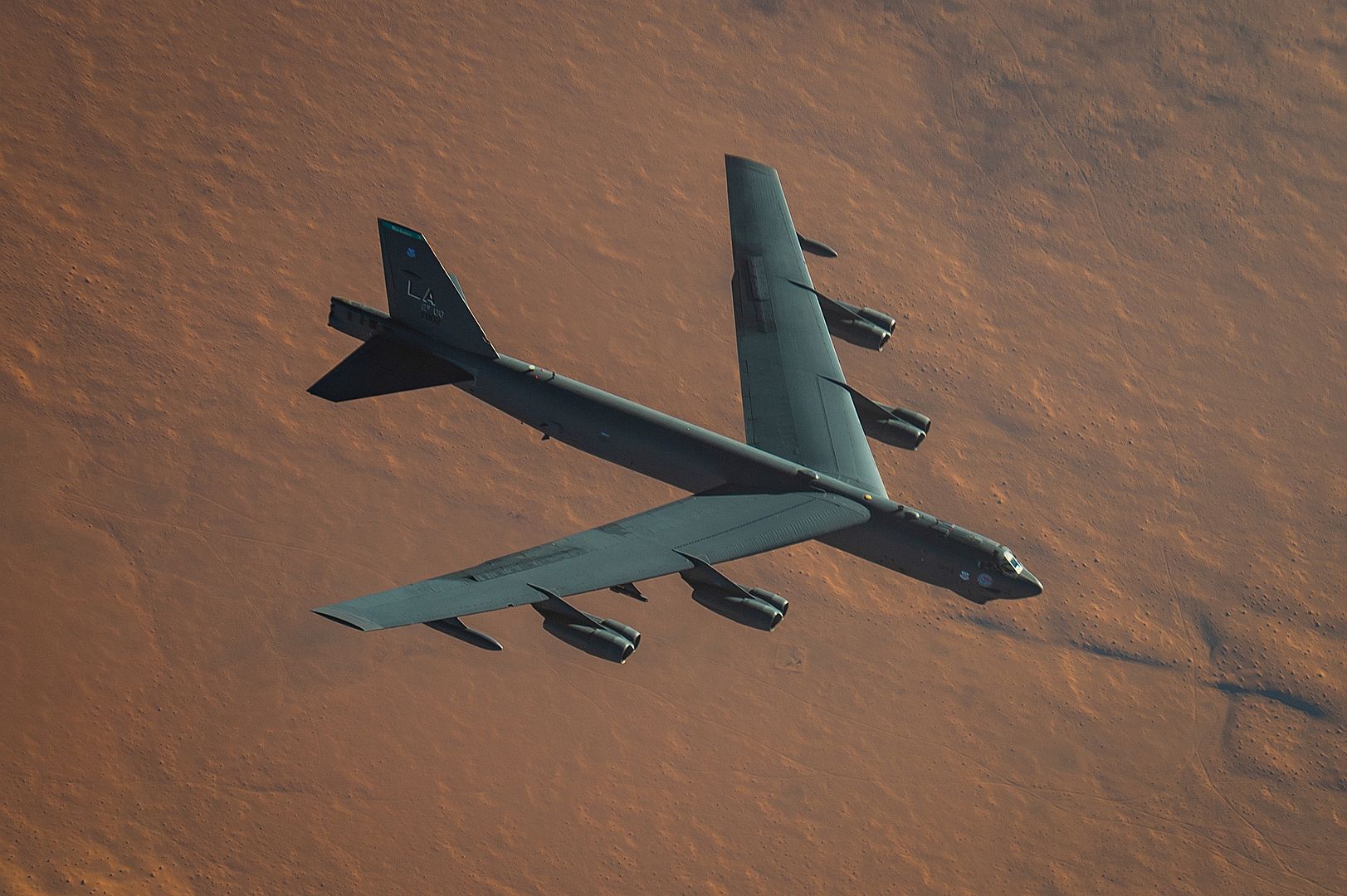
A U.S. Air Force B-52 Stratofortress, assigned to the 2nd Bomb Wing, departs after receiving fuel from a KC-135 Stratotanker, assigned to the 340th Expeditionary Air Refueling Squadron, during a multi-day Bomber Task Force mission over Southwest Asia, Dec. 10th, 2020. The short-notice, non-stop mission was designed to underscore the U.S. military's commitment to its regional partners, while also validating the ability to rapidly deploy combat power anywhere in the world, said the senior commander of U.S. forces in the Middle East. (U.S Air Force photos by Staff Sgt. Trevor T. McBride)
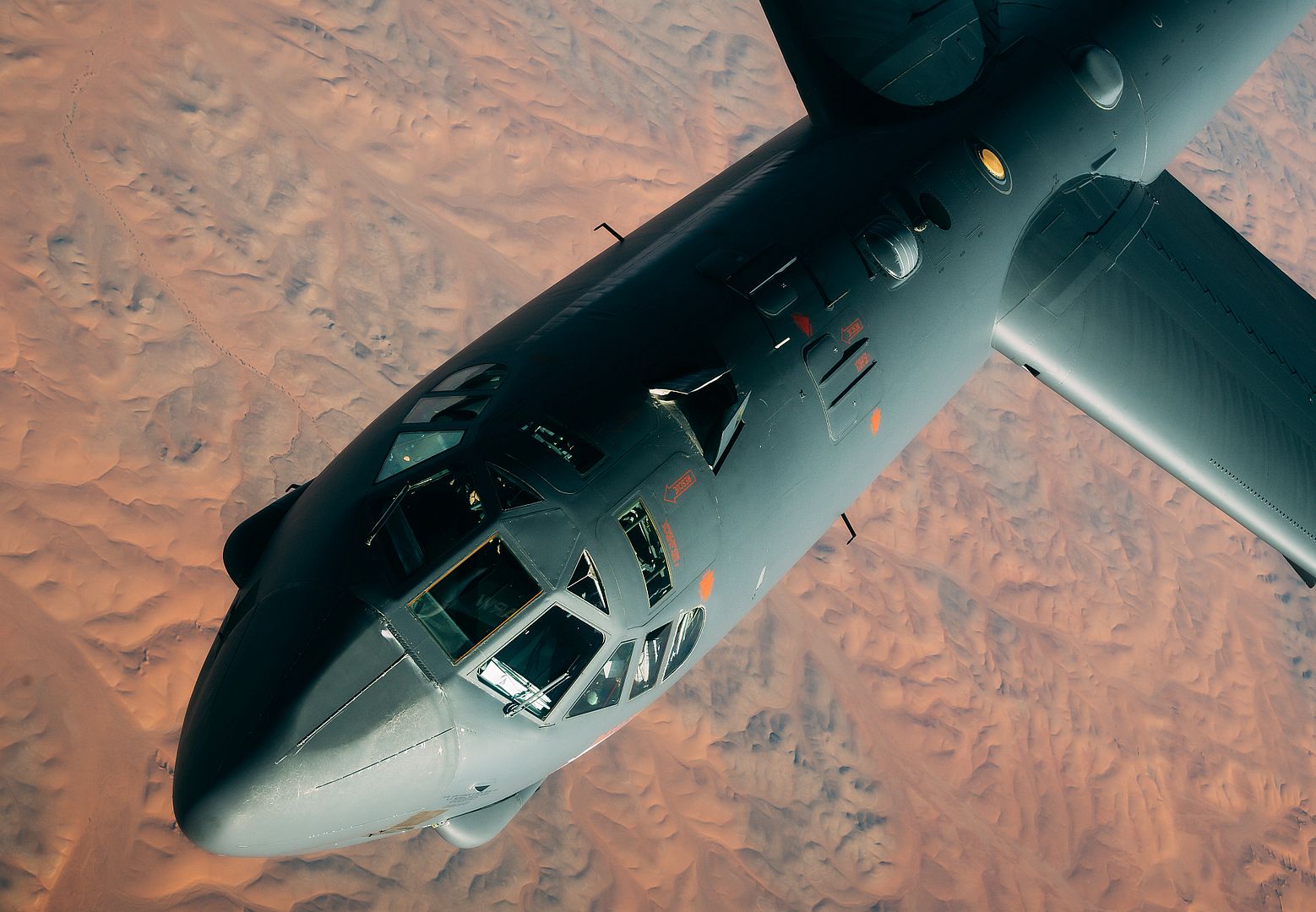
U.S. Air Force F-15C Eagles assigned to the 493rd Fighter Squadron fly en route to participate in a live missile fire exercise over the Atlantic Ocean, Dec. 8, 2020. The training employed munitions against a drone target, testing the pilot?s combat readiness in a peacetime environment to ensure full capability during a wartime setting. (U.S. Air Force photos by Staff Sgt. Rachel Maxwell)
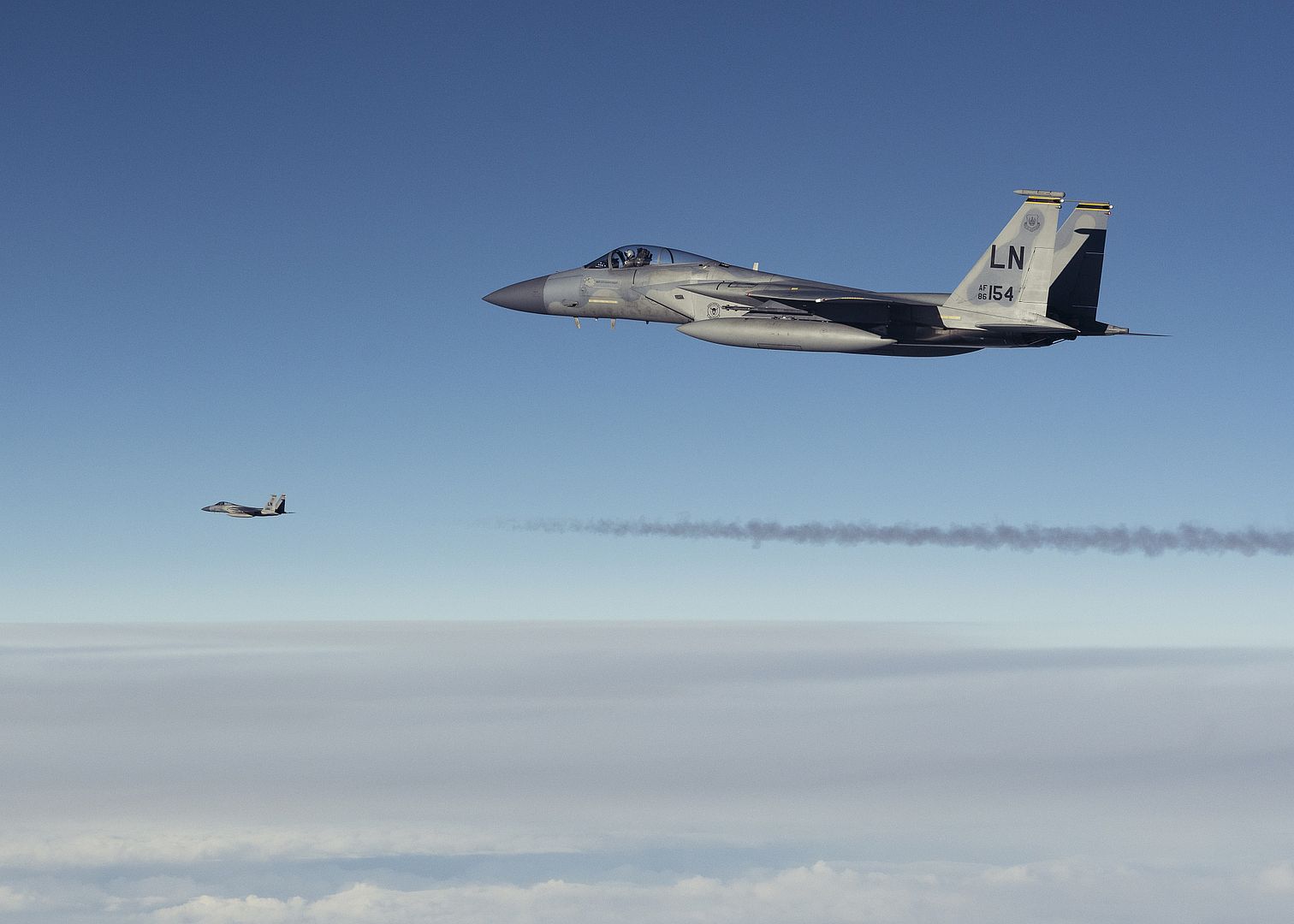
A U.S. Air Force F-15C Eagle assigned to the 493rd Fighter Squadron fires a special air training missile, NATM-9M, during a training exercise over the Atlantic Ocean, Dec. 8, 2020. The training followed a specific set of range procedures employing the munition against a drone to test and ensure combat readiness of aircrew and aircraft. (U.S. Air Force photos by Staff Sgt. Rachel Maxwell)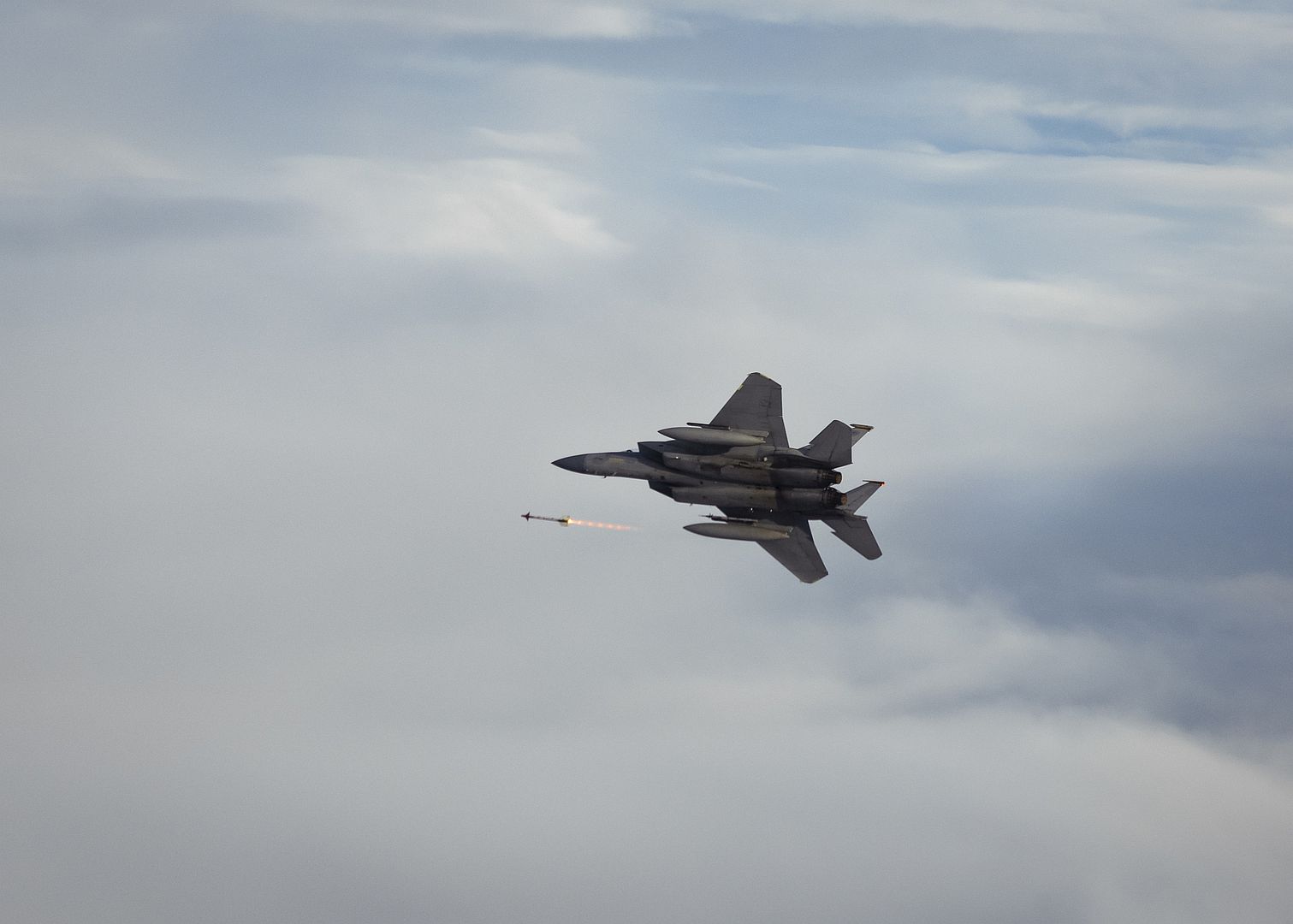
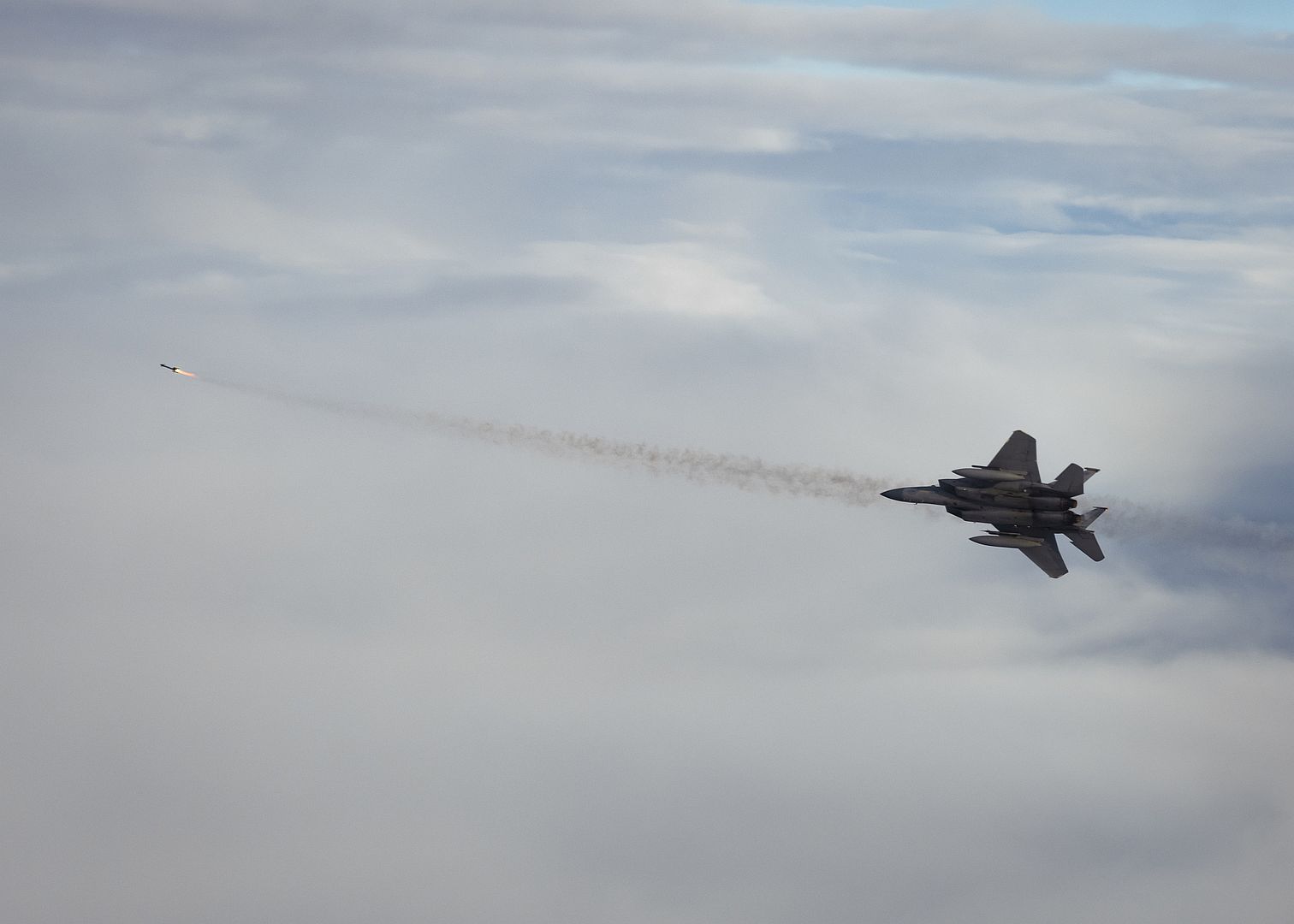
U.S. Air Force F-15C Eagles assigned to the 493rd Fighter Squadron return to Royal Air Force Lakenheath, England after participating in a live missile fire exercise over the Atlantic Ocean, Dec. 8 2020. The training met mission requirements for fighter pilots to become combat ready in a wartime environment. (U.S. Air Force photos by Staff Sgt. Rachel Maxwell)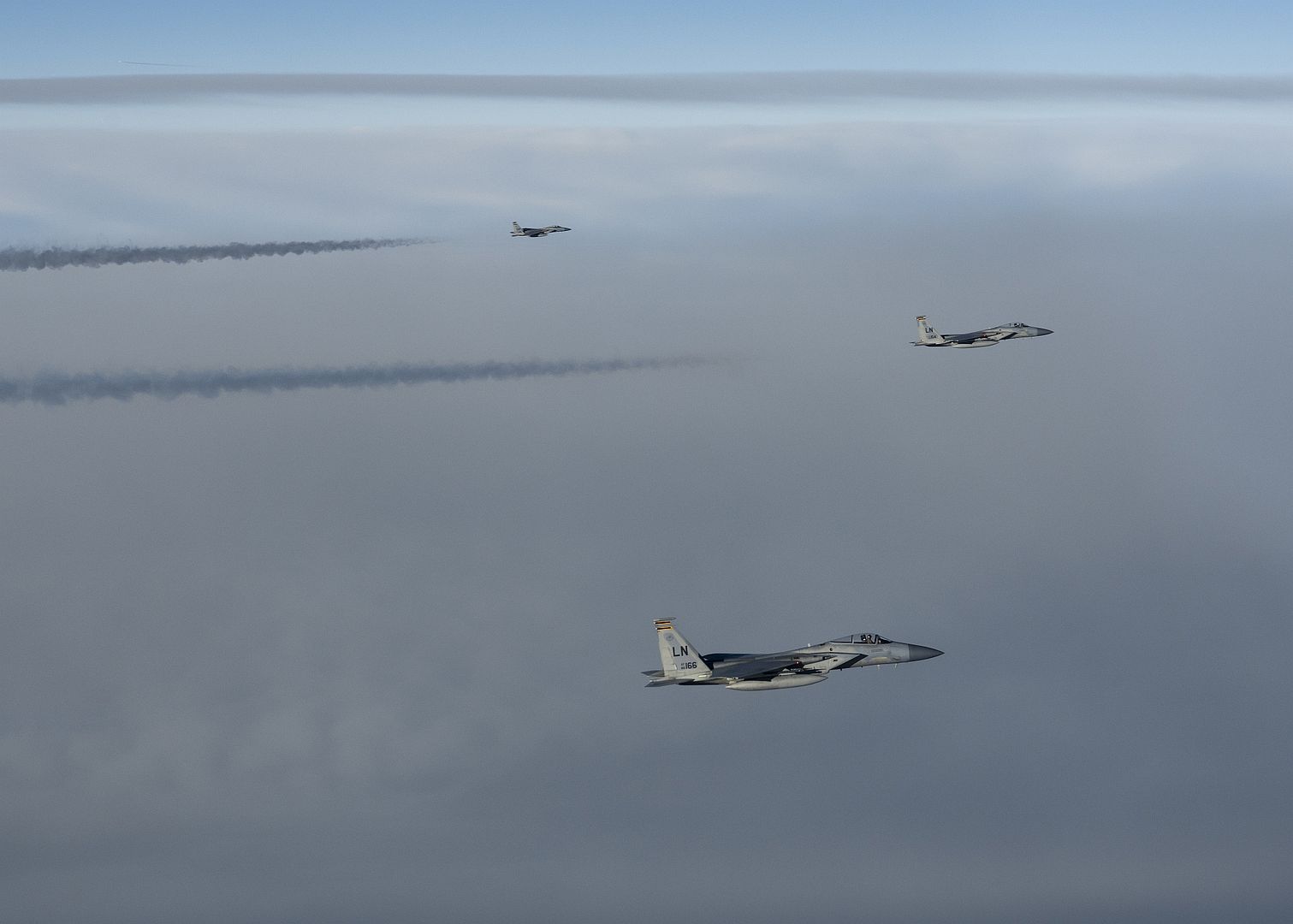
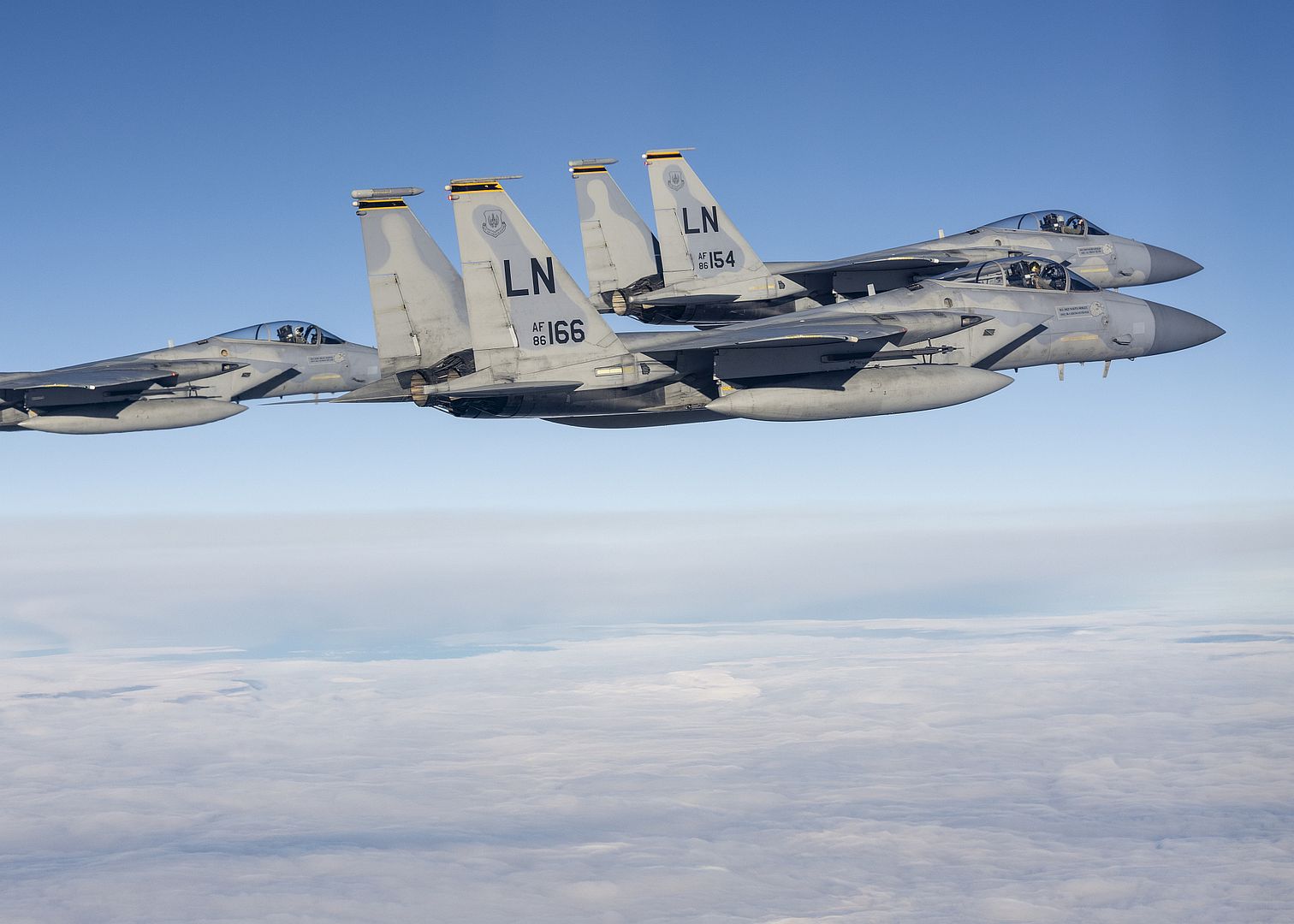
-
 Main AdminWEST POINT, NY. (Dec. 12, 2020) Two KC-46 from the 157th Air Refueling Wing and 22nd Air Refueling Wing refuel the U.S. Navy Flight Demonstration Squadron, the Blue Angels, while in transit for the 2020 Army-Navy Game. The Blue Angels are currently conducting winter training at Naval Air Station Pensacola in preparation for the 2021 show season. (U.S. Navy photos by Mass Communication Specialist 2nd Class Christopher Gordon)
Main AdminWEST POINT, NY. (Dec. 12, 2020) Two KC-46 from the 157th Air Refueling Wing and 22nd Air Refueling Wing refuel the U.S. Navy Flight Demonstration Squadron, the Blue Angels, while in transit for the 2020 Army-Navy Game. The Blue Angels are currently conducting winter training at Naval Air Station Pensacola in preparation for the 2021 show season. (U.S. Navy photos by Mass Communication Specialist 2nd Class Christopher Gordon)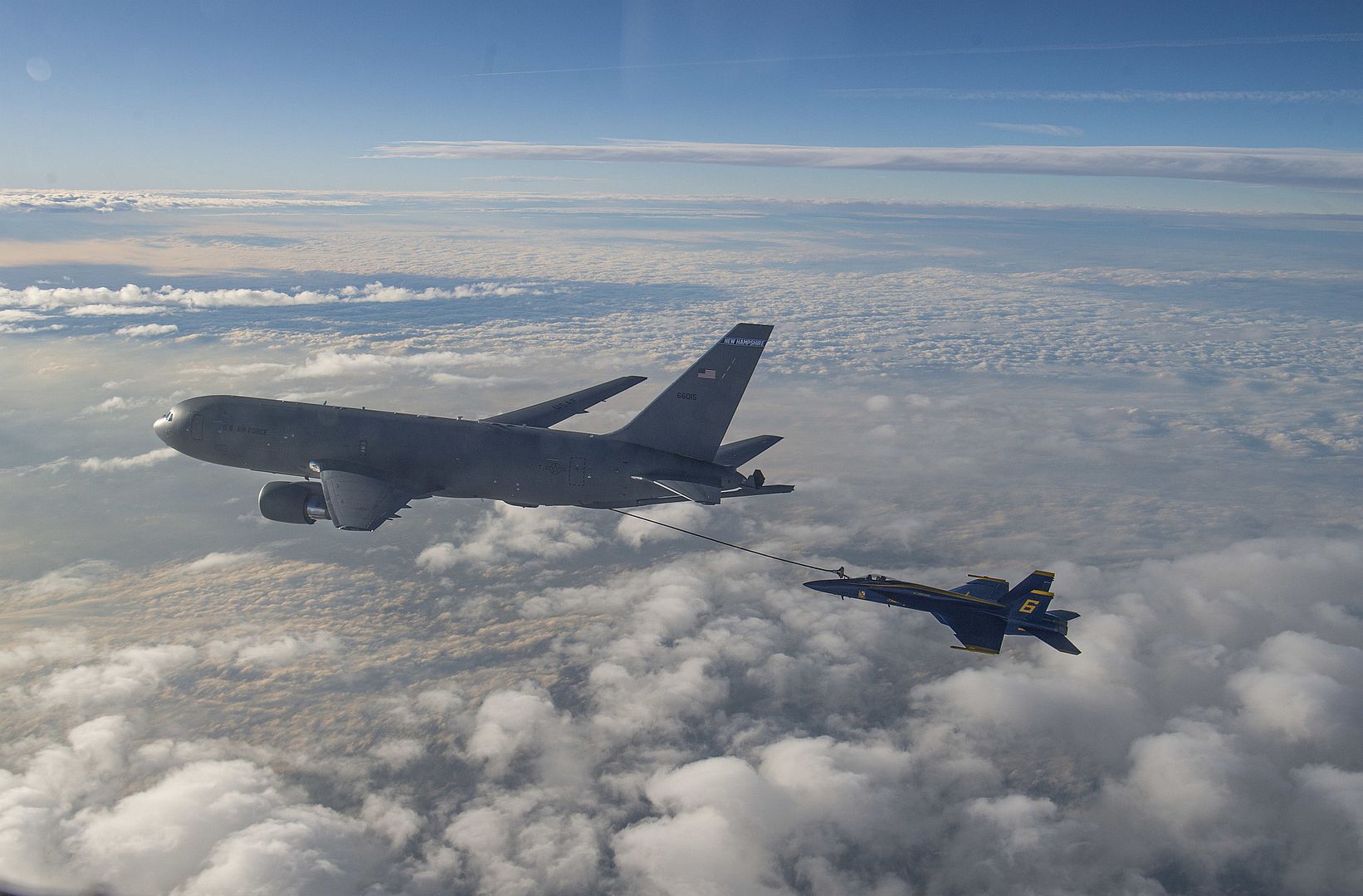
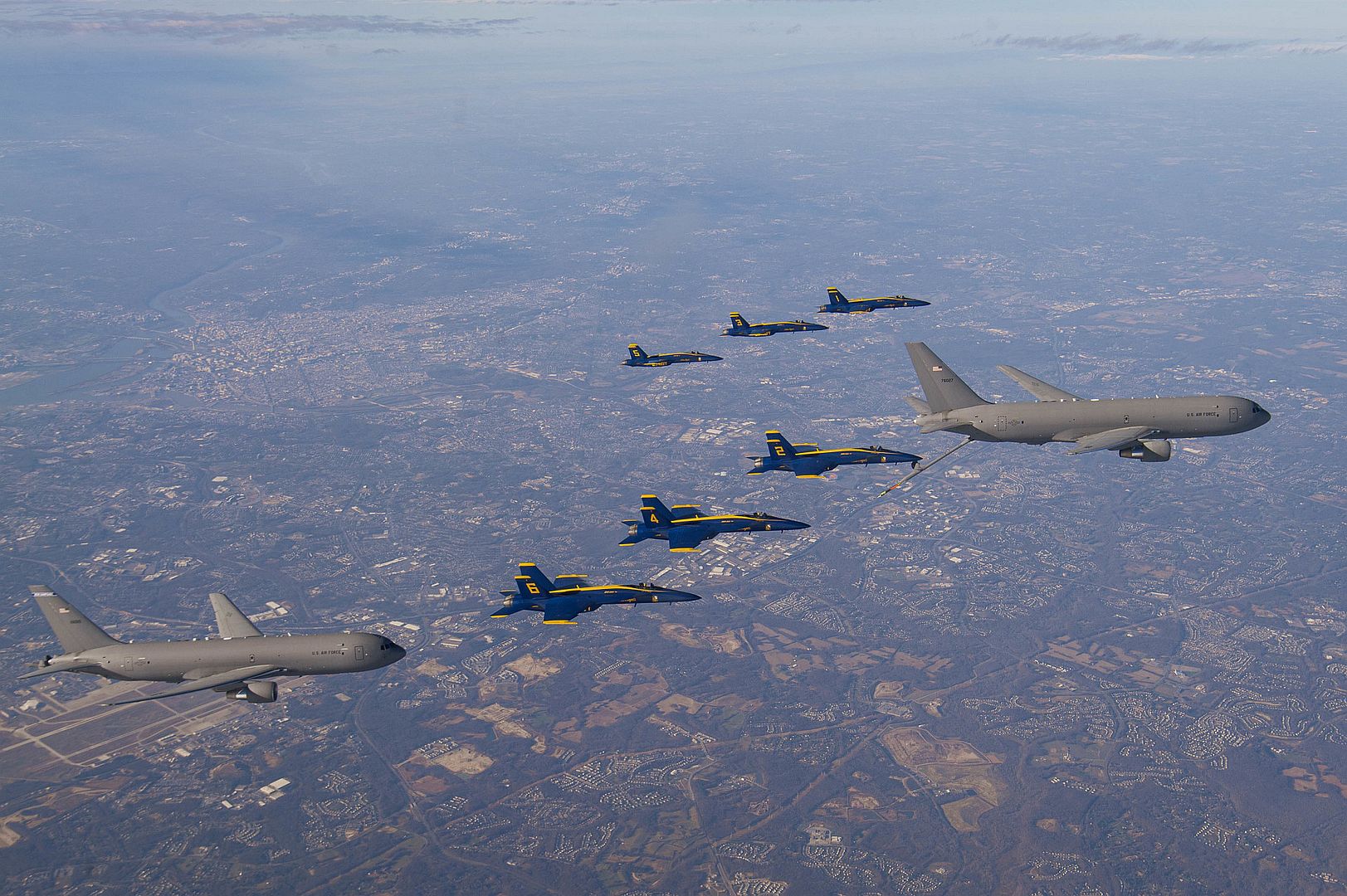
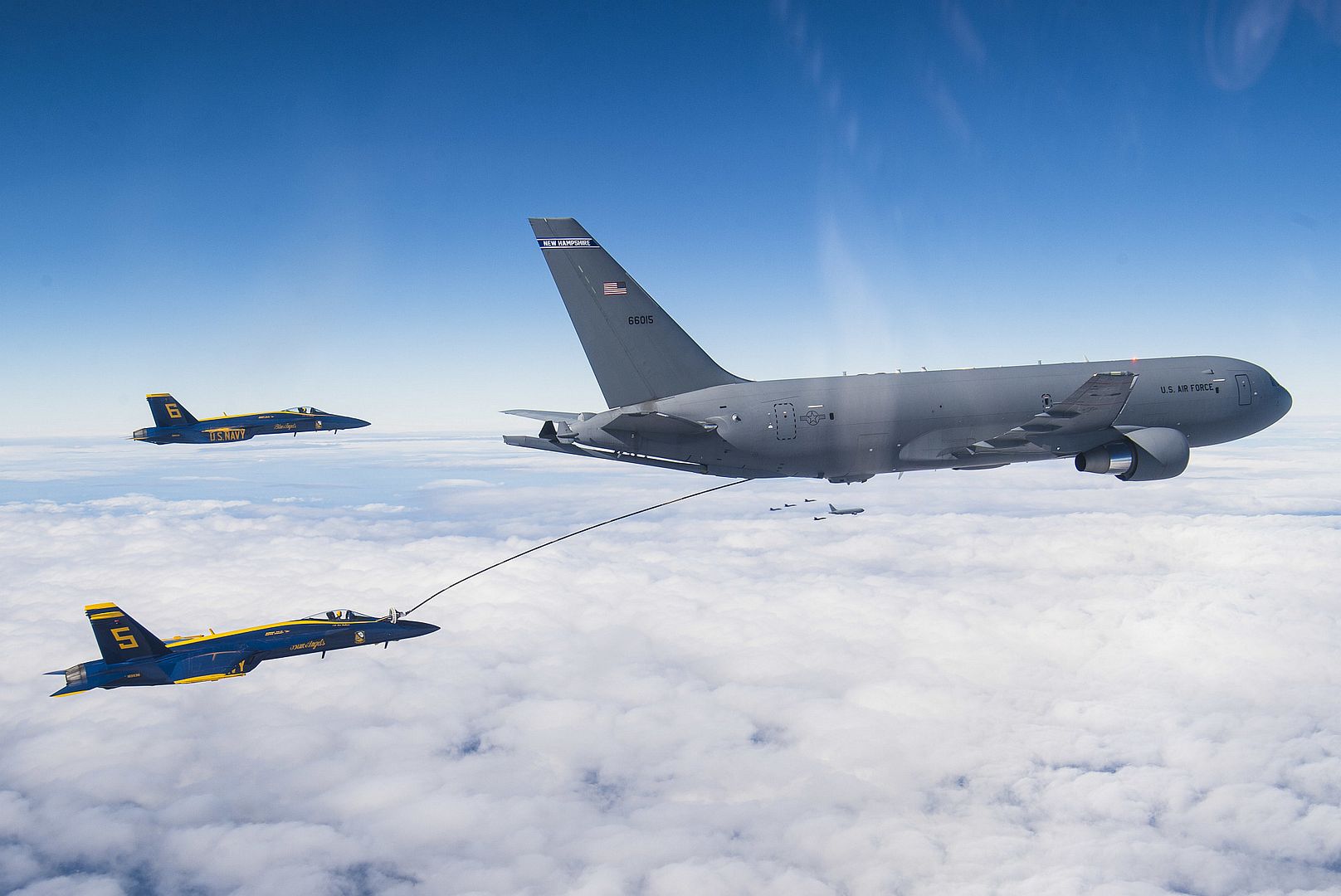
U.S. Marines with Marine Medium Tiltrotor Squadron 362, assigned to Special Purpose Marine Air-Ground Task Force - Crisis Response - Central Command, perform routine maintenance on an MV-22 Osprey at dusk in Kuwait, Dec. 12, 2020. Marines and Sailors conduct maintenance 24-hours per day to ensure the Aviation Combat Element is ready to fly at a moment?s notice. The SPMAGTF-CR-CC is a crisis response force, prepared to deploy a variety of capabilities across the region. (U.S. Marine Corps photo by Cpl. Robert Kuehn)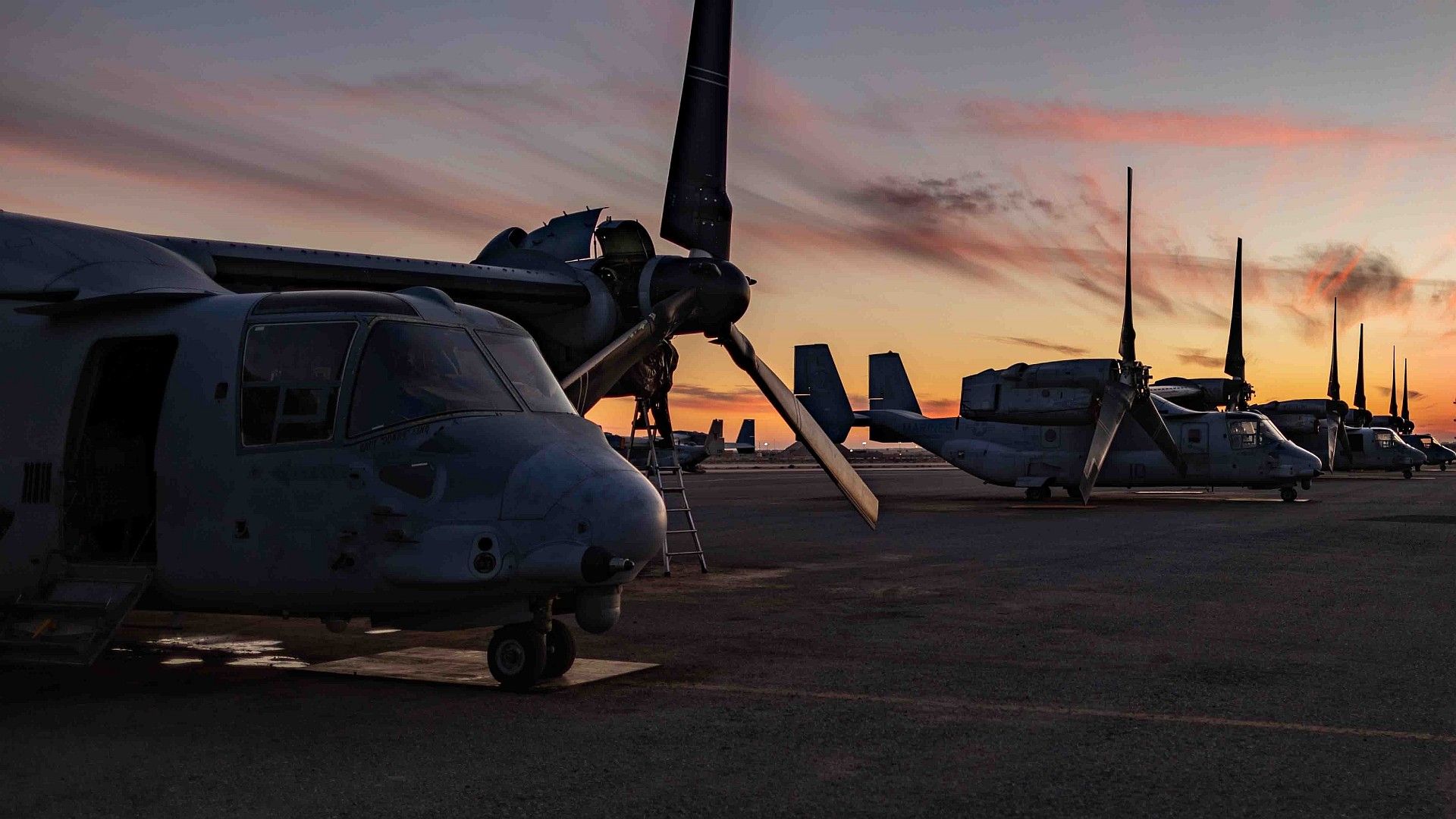
A CH-47JA Chinook helicopter assigned to the Japan Ground Self-Defense Force comes in for a landing during a casualty evacuation drill during exercise Forest Light Western Army at Camp Soumagahara, Gunma Prefecture, Japan, Dec. 12, 2020. Forest Light is an annual bilateral training exercise that strengthens the interoperability and readiness of the U.S. Marine Corps and Japan Ground Self-Defense Force to deter aggression and defeat any threat. This iteration is focused on seizing and defending key maritime terrain as an integrated force in support of naval operations in the defense of Japan. (U.S. Marine Corps photo by Sgt. Branden J. Bourque)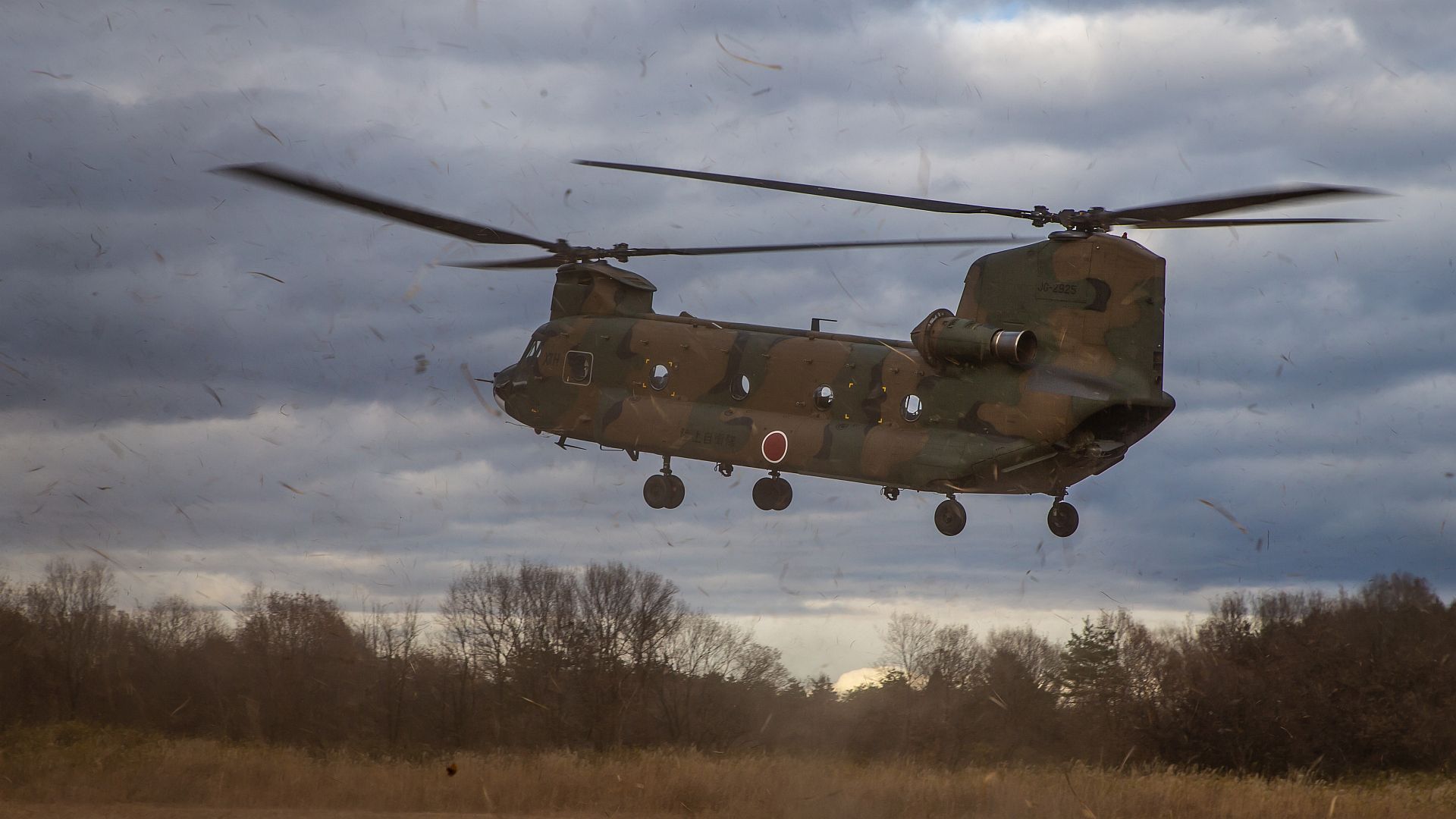
A U.S. Navy EA-18G Growler aircraft assigned to Electronic Attack Squadron 140 at Naval Air Station Whidbey Island, Washington, prepares to taxi during Weapons School Integration (WSINT) at Nellis Air Force Base, Nevada, Dec. 1, 2020. WSINT is a series of complex, large-force employment missions that serve as the capstone portion of Weapons School classes, which take place here at Nellis. (U.S. Air Force photo by Airman 1st Class Dwane R. Young)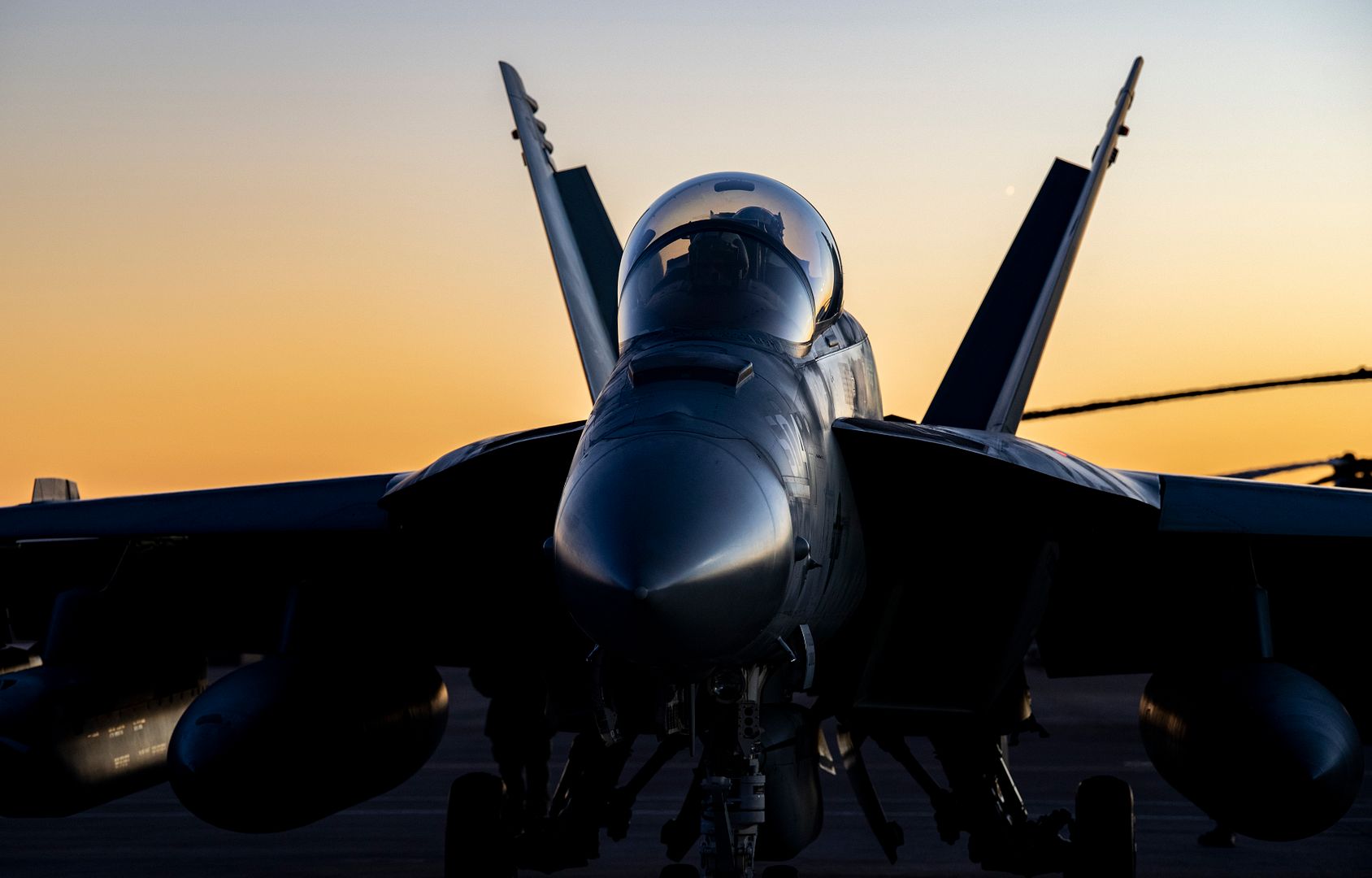
GREENVILLE, S.C., Dec. 11, 2020 ? The U.S. Air Force awarded Lockheed Martin (NYSE: LMT) a $900 million contract to provide sustainment support and depot-overflow services for F-16 aircraft.
The contract value is estimated over a total of 10 years and includes depot-level maintenance activities, predefined programmatic work, aircraft modification and unplanned drop-in maintenance. As the F-16 Fighting Falcon?s Original Equipment Manufacturer, Lockheed Martin is uniquely positioned to provide the most comprehensive knowledge of the aircraft and tailored sustainment solutions to optimize the F-16 fleet for greater capability, readiness and performance.
Work on this contract will be performed at the company?s site in Greenville, South Carolina, which is equipped and ready to support F-16 operations for years to come. Lockheed Martin?s team of F-16 experts are on-site and prepared to meet the service?s most challenging problems, partnering between Production and Sustainment operations, giving full life cycle coverage for the F-16.
The F-16 Fighting Falcon offers advanced interoperable capabilities that enhance partnerships with allies across the world. It has been proving its effectiveness for decades and continues to remain the best value among 4th generation jets for its capabilities and affordable lifecycle costs. To date, a total of 4,588 F-16s have been produced and are currently operated by 25 countries.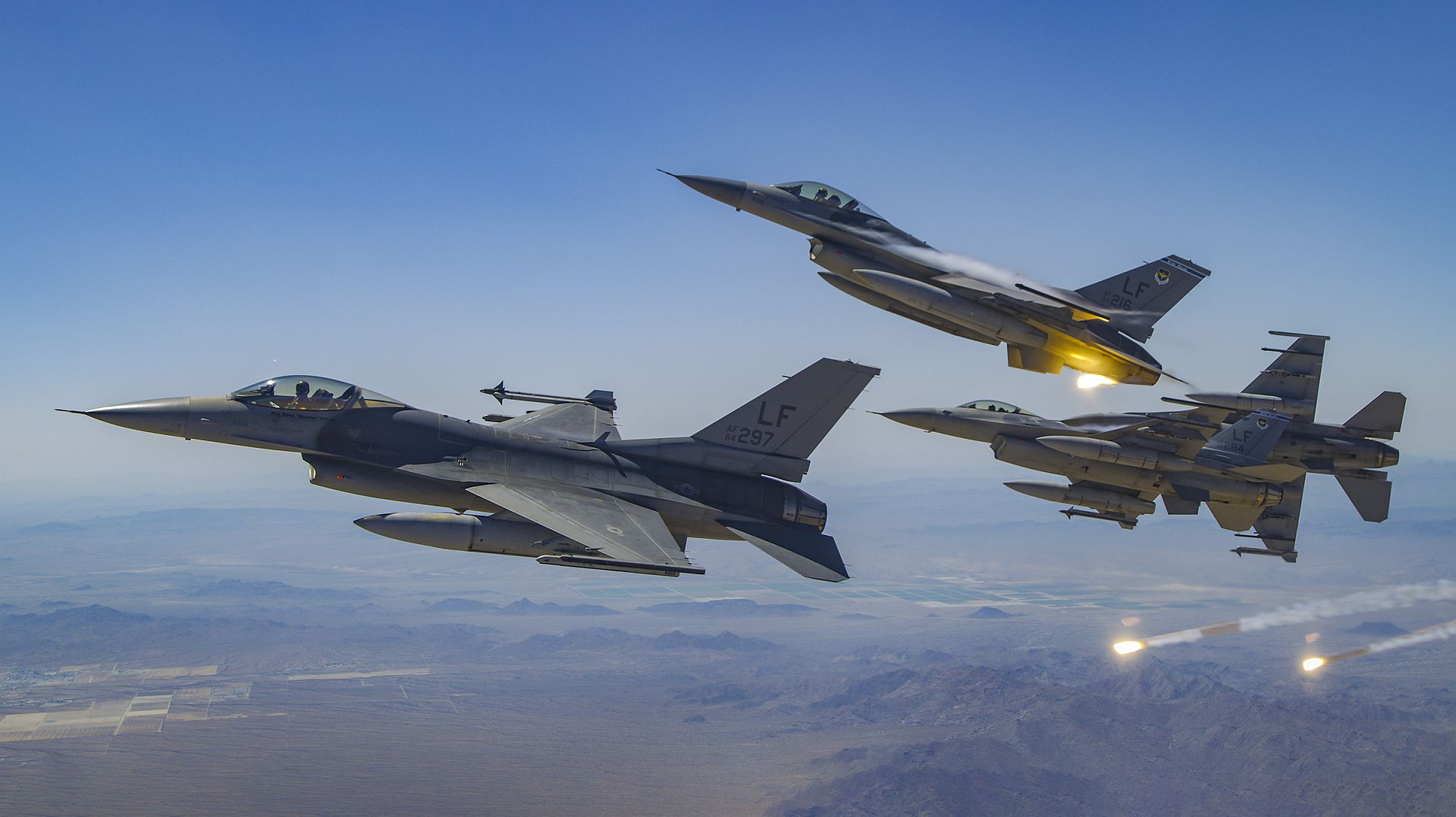
Toulouse, 10 December 2020 ? The EcoPulse? distributed propulsion hybrid aircraft demonstrator ? which is being developed by Daher, Safran and Airbus with the support of France?s CORAC civil aviation research council ? has successfully passed its Preliminary Design Review as a first key step toward validating the project?s feasibility and firming up the architecture for a first flight scheduled in 2022.
Incorporating a distributed propulsion configuration from Daher, Safran and Airbus, this shared hybrid aircraft project has the goal of helping to transform the aviation sector. EcoPulse?, which was unveiled at the 2019 Paris Air Show, is backed by the French government ? with a reaffirmation of support coming in the framework of France?s recovery plan presented last June.
By laying the framework for light aircraft by the end of the decade, it will allow the development of technologies that reduce the environmental footprint of future commercial aircraft, thus contributing to the air transportation sector?s decarbonization objectives by 2050.
After more than one year of development based on a light aircraft platform supplied by Daher, the project has reached a key milestone with the successful completion of its Preliminary Design Review (PDR), which enabled the validation and freezing of the demonstrator?s baseline configuration, as well as confirming the hybrid distributed propulsion system?s level of safety and compatibility with the aircraft.
The project is now entering the assembly and integration phase at Daher, with systems supplied by Safran and Airbus.
-
 Main AdminWASHINGTON (AFNS) --
Main AdminWASHINGTON (AFNS) --
On Dec. 9, the joint force took another step toward achieving a military Internet of Things when fifth-generation aircraft overcame long standing connectivity limitations to share actionable operational data in their native secure digital ?languages? with and through multiple sources for the first time.
This test was the latest demonstration of the transformative warfighting impact of the open architecture underpinning the Advanced Battle Management System.
The joint effort included a Marine Corps F-35B variant and the Air Force F-22 Raptor and F-35A Lightning II variant flying with an attritableONE XQ-58A Valkyrie for the first time. The primary tests took place at Yuma Proving Ground, Arizona with preparatory tests at Nellis Air Force Base, Nevada.
Lt. Col. Kate Stowe, gatewayONE program manager at the Air Force Lifecycle Management Center, set out with 18 test objectives and successfully achieved nine.
?Testing is all about pushing the limits of what?s possible, finding out where the toughest challenges are, and adapting creative solutions to overcoming difficult problem sets,? Stowe said. ?The real win of the day was seeing the gatewayONE establish a secure two-way translational data path across multiple platforms and multiple domains. That?s the stuff ABMS is all about.?
Fifth-generation fighters are typically limited to communicating with each other and to command and control centers via legacy tactical data connections, not in their native, but incompatible digital ?languages? ? Multifunctional Advanced Data Link for F-35 and Intra-Flight Data Link for the F-22. Not only can gatewayONE translate between those formats, in this test it moved data that is normally relegated to an operations center or tactical ground node, directly pushing it into the cockpit at the edge of the multi-domain battlespace for the first time.
Additionally, the test pushed the position data of each platform outside of the aircraft?s close-proximity formation through gatewayONE, which enables battle managers on the ground or in the air to better orchestrate operations. The gatewayONE payload also passed tracks or cues from ground operators to both fighters and passed a cue from the F-35A to the F-22 for the first time. These bi-directional communications pathways occurred in the platforms? native digital ?languages? and the data was displayed through the aircrafts? organic systems.
?The gatewayONE payload really showed what?s possible and helped us take a big step towards achieving (Joint All-Domain Command and Control),? said Lt. Col. Eric Wright, a 59th Test and Evaluation Squadron F-35 pilot. ?This critical capability provides additional connections between our advanced fighters and other forces and battle managers across all domains. The future is promising, and gatewayONE will allow the F-22 and F-35 to connect to and feed data sources they've never before accessed. Those future connections will bring additional battlefield awareness into the cockpit and enable integrated fires across U.S. forces.?
Additional successful tests during the week included establishing a communications pathway between the KC-46 Pegasus tanker and a ground node using commercial internet routing standards over the Tactical Targeting Network Technology waveform and the F-35B sending full-motion video to a ground controller.
?If fifth-generation platforms are going to be quarterbacks of a joint-penetrating team, we have to be able to communicate with those quarterbacks in an operationally relevant manner and enable data sharing between them, to them, and from them. For years people said it couldn?t be done. Today the team turned another page toward making the impossible possible,? said Preston Dunlap, Air and Space Force?s chief architect. ?In just 12 months, the team has opened the door to a world where we can put the power of an operations center into the cockpit at the tactical edge.?
The Dec. 9 flight test included the attritableONE platform, also known as the XQ-58 Valkyrie, a lower-cost, unmanned, aerial vehicle. The rocket-launched Valkyrie successfully conducted a semi-autonomous flight alongside the F-22 and F-35s for the first time. The gatewayONE payload was integrated into the Valkyrie for its maiden voyage with the fifth-generation fighters to conduct an initial test of gateway capabilities from an attritable platform; however, shortly after takeoff, the communications payloads lost connectivity and those test objectives were unable to be accomplished.
The acquisition team ? comprised of Air Force Research Laboratory and Air Force Life Cycle Management Center personnel working in conjunction with Eglin Air Force Base, Florida?s 46th Test Squadron ? came together to make this test a success and empower the platforms involved with capability desired by the warfighter and operator.
This integrated test follows a series of gatewayONE ground tests that began during the inaugural Department of the Air Force architecture on-ramp last year in December.
ABMS is the Air Force and Space Force?s priority program to develop the military?s first Internet of Things and is the services? primary contribution to Joint All-Domain Command and Control, a Defense Department-led effort to securely connect all elements of the U.S. military?every sensor and shooter?across land, air, sea, space and cyberspace.
(U.S. Air Force photos by Staff Sgt. Joshua King and by Tech. Sgt. James Cason)
A B-52H Stratofortress taxis down the flight line at Barksdale Air Force Base, La., Dec.14, 2020. Exercises like these demonstrate how the 2nd Bomb Wings deployable B-52s can reach the corners of the globe at a moment?s notice providing combat support ?anytime, anywhere.? (U.S. Air Force photo by Airman 1st Class Jonathan E. Ramos)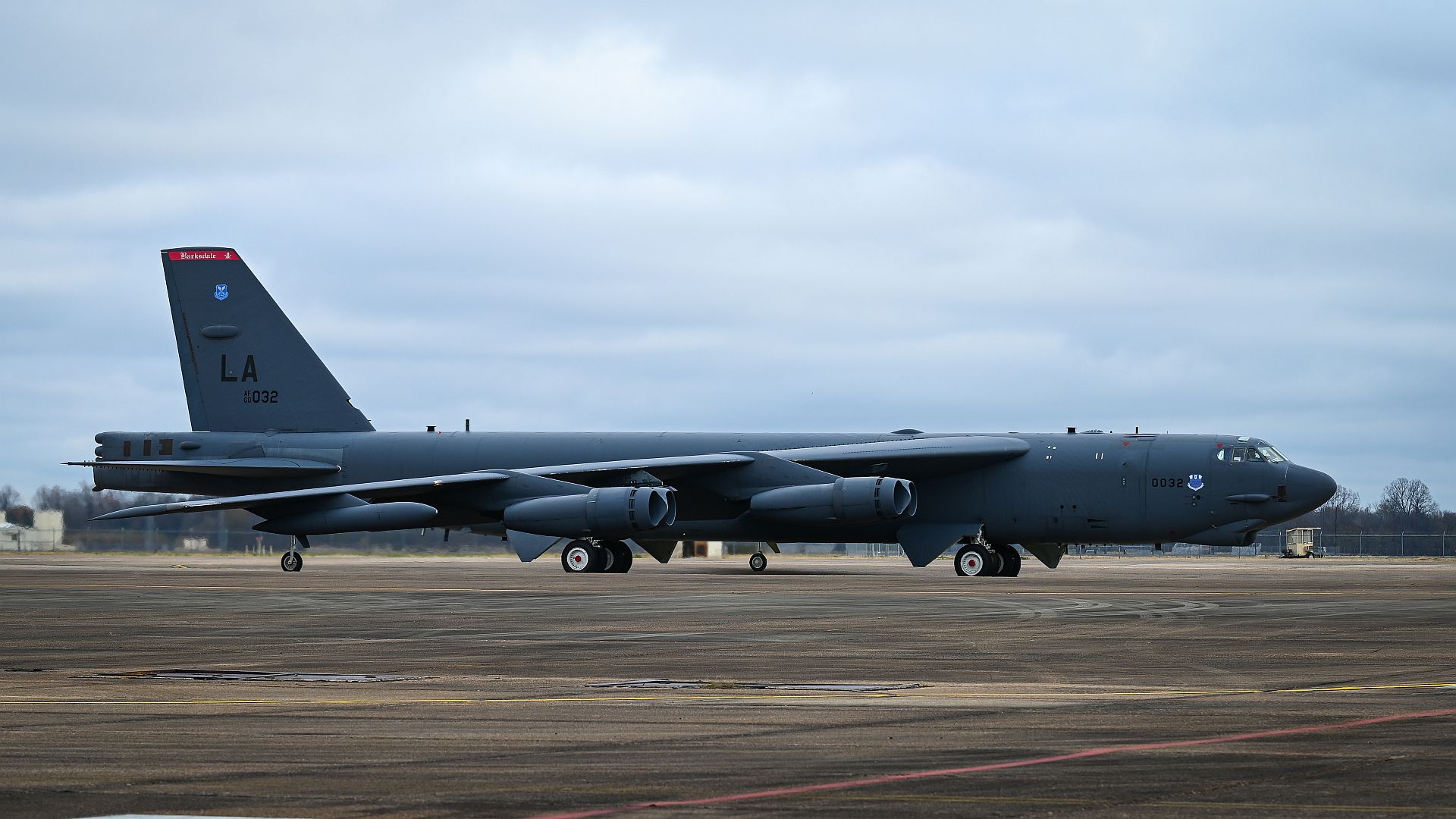
An F-15C Eagle assigned to the 493rd Fighter Squadron sits on the flightline prior to take off at Royal Air Force Lakenheath, England, Dec. 9, 2020. The 48th Fighter Wing conducts daily flying operations in order to ensure the Liberty Wing can deliver unique air combat capabilities when called upon by its NATO allies. (U.S. Air Force photos by Airman 1st Class Jessi Monte)
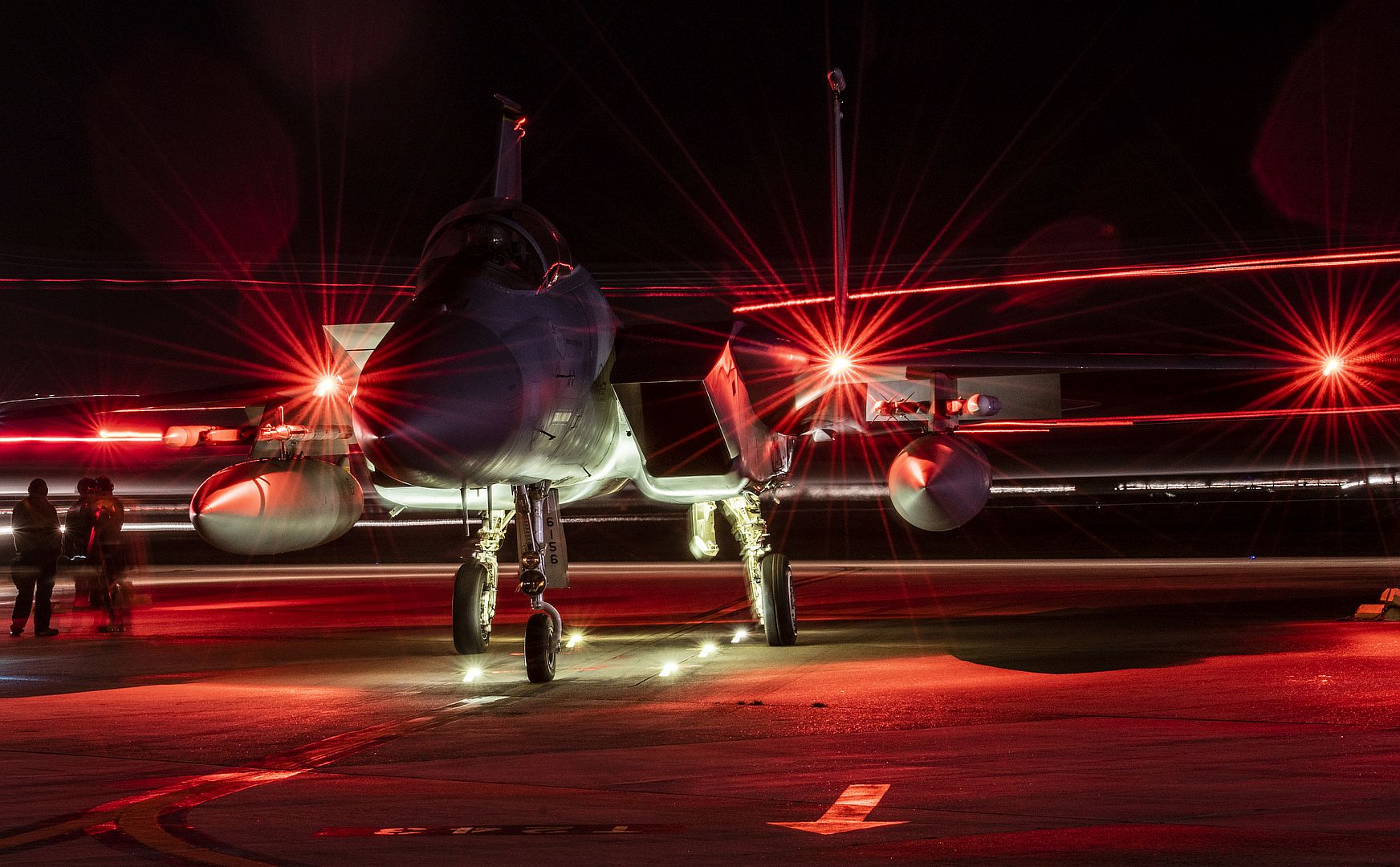
SOUTH CHINA SEA (Dec. 11, 2020) A U.S. Marine Corps AH-1Z Viper helicopter assigned to Marine Medium Tiltrotor Squadron (VMM) 164 (Reinforced), 15th Marine Expeditionary Unit, banks while turning in flight during Cooperation Afloat Readiness and Training (CARAT) Singapore. This year marks the 26th iteration of CARAT, a multinational exercise designed to enhance U.S. and partner navies' abilities to operate together in response to traditional and non-traditional maritime security challenges in the Indo-Pacific region. (U.S. Marine Corps photo by Lance Cpl. Brendan Mullin)
Palmdale, Calif., Dec. 14, 2020 ? Lockheed Martin (NYSE: LMT) successfully conducted a flight test mission featuring distributed processing onboard the U-2 Dragon Lady via Kubernetes containerization technology. The demonstration is a critical steppingstone toward creating a DevSecOps environment to enable the delivery of enhanced software capability to airborne assets in real-time.
?The U-2 Kubernetes demonstration from mid-November not only advances the deployment pipeline for in-flight software upgrades but also operationally extends the computational resources for mission execution,? said Jeff Babione, vice president and general manager, Lockheed Martin Skunk Works?. ?This additional capability makes it possible for the warfighter to quickly adapt to changing threat environments without costly or time-consuming system upgrades.?
To accelerate software delivery from months to hours, the Lockheed Martin team leveraged a Kubernetes cloud configuration. This configuration, which was previously demonstrated during the OpenAirKube demo in late August, was flown on the U-2 via an Enterprise Open System Architecture Mission Computer (EMC2). The EMC2 is representative of the Open Mission Systems (OMS) mission computer currently being developed for the U-2 program of record.
The U-2 flew a Kubernetes cloud that connected in-flight to a ground node, extending the U-2?s network-of-networks connectivity. Air Force OMS-compliant datalink gateway software services onboard the U-2 and in the ground node within the Kubernetes cloud disseminated sensor data, dynamically bridging datalinks across assets. This distributed processing approach allows the cloud computing technology to scale up for advanced mission processing based on the unique needs of the battlespace.
A combat proven platform that?s supporting important missions today, the U-2S continues to provide new capabilities to transform the future battlespace by enabling rapid development, testing, demonstration, and fielding to the warfighter.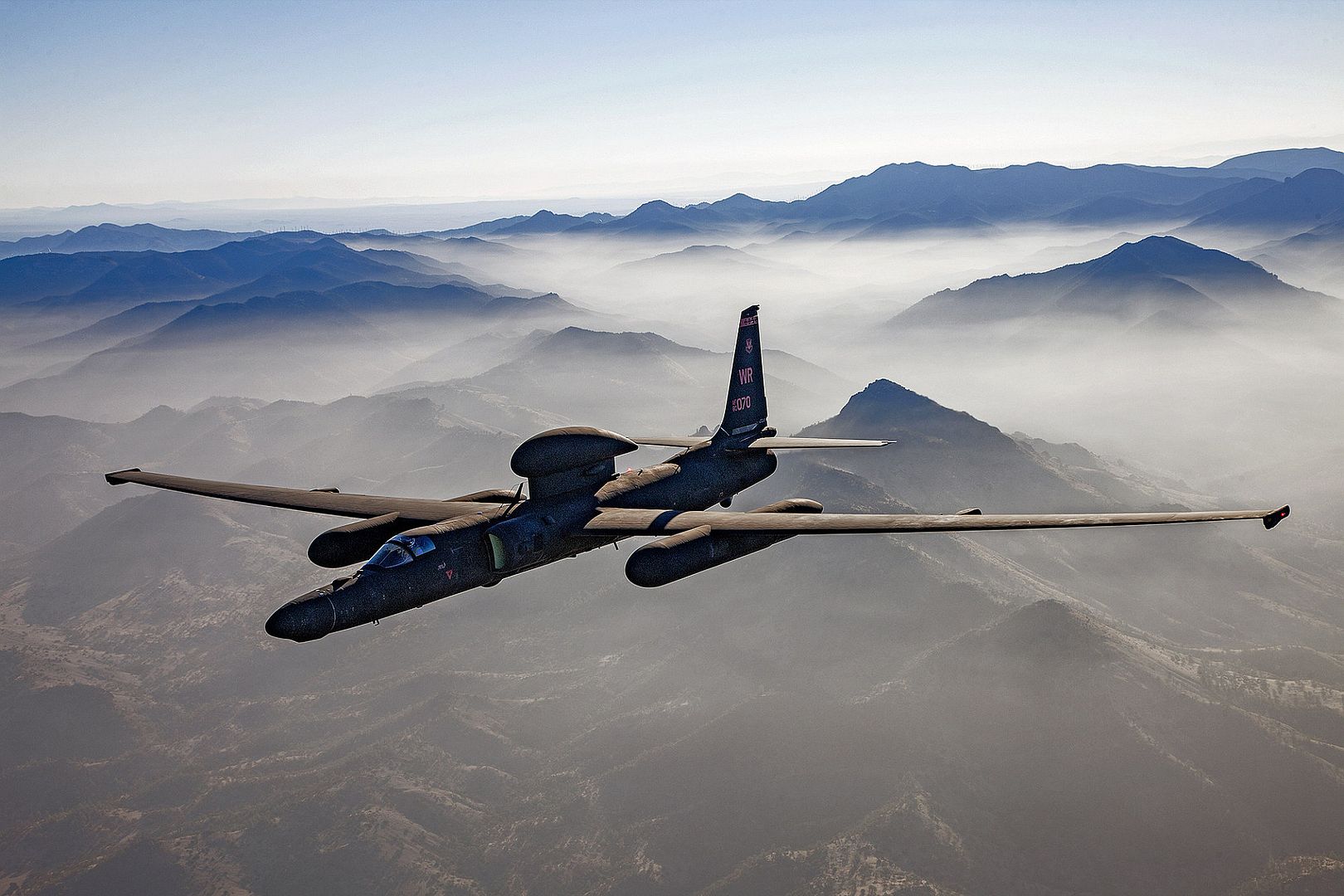
SEATTLE, Dec. 15, 2020 ? China Airlines today unveiled the first of six Boeing 777 Freighters, officially becoming the 20th operator of the world?s largest and longest range twin-aisle freighter. The 777 Freighter joins the airline amid growing demand for dedicated freighters as operators grapple with the impacts from the COVID-19 pandemic.
?Air cargo demand has risen in light of the global pandemic and has played a critical role in maintaining profitability for our airline despite the downturn in passenger traffic,? said China Airlines Chairman Hsieh Su-Chien. ?The efficiency and capability of the 777 Freighter enables us to modernize our freighter fleet, while also allowing us to increase capacity and open into new markets. We look forward to delivering world-class service to our customers.?
China Airlines aims to increase its cargo capacity by 15% in 2021 and is planning to launch the 777 Freighter on routes connecting Taipei with North America ? a key market with strong demand and escalating yields. An operator of all-Boeing freighter fleet, China Airlines debuted its new 777 Freighter during a ceremony in Taipei to mark the carrier?s 61st anniversary. The airline is set to take five more 777 Freighters as part of an order announced at the 2019 Paris Air Show.
The 777 Freighter is the world?s largest, longest range and most capable twin-engine freighter. The airplane has a range of 9,200 km (4,970 nautical miles) and can carry a maximum payload of 102,010 kg (224,900 lbs). The airplane will allow China Airlines to make fewer stops and reduce associated landing fees on long-haul routes, resulting in the lowest trip cost of any large freighter.
The 747 and 777 freighters, both of which make up China Airlines? world-class freighter fleet, are capable of carrying tall and outsized cargo loads on 3-meter (10-foot) tall pallets. This common main-deck pallet height capability enables interchangeable pallets, adding to the versatility of both models.
?With the global air cargo fleet expected to grow by more than 60% over the next 20 years, the unmatched efficiency of the 777 Freighter will significantly boost China Airlines? air cargo capabilities and enable them to scale their world-class cargo operations,? said Ihssane Mounir, senior vice president of Commercial Sales and Marketing for Boeing. ?We are honored to strengthen our partnership with China Airlines as they continue to build one of the world?s most dynamic freighter fleets.?
In addition to commercial airplanes, Boeing provides China Airlines with total life cycle support services to streamline parts provisioning and flight and maintenance operations. The entire China Airlines fleet uses Jeppesen FliteDeck Pro, which provides access to digital navigation charts and interactive maps to optimize performance and enhance situational awareness.
China Airlines also recently signed an agreement for Airplane Health Management (AHM), which tracks real-time airplane information, providing data and decision support tools that allow technicians to quickly and correctly resolve maintenance issues. This allows airlines to take proactive actions based on AHM-generated alerts, reducing disruptions to operations and the costs associated with unscheduled maintenance. With the agreement, China Airlines joins more than 100 global customers using the AHM solution.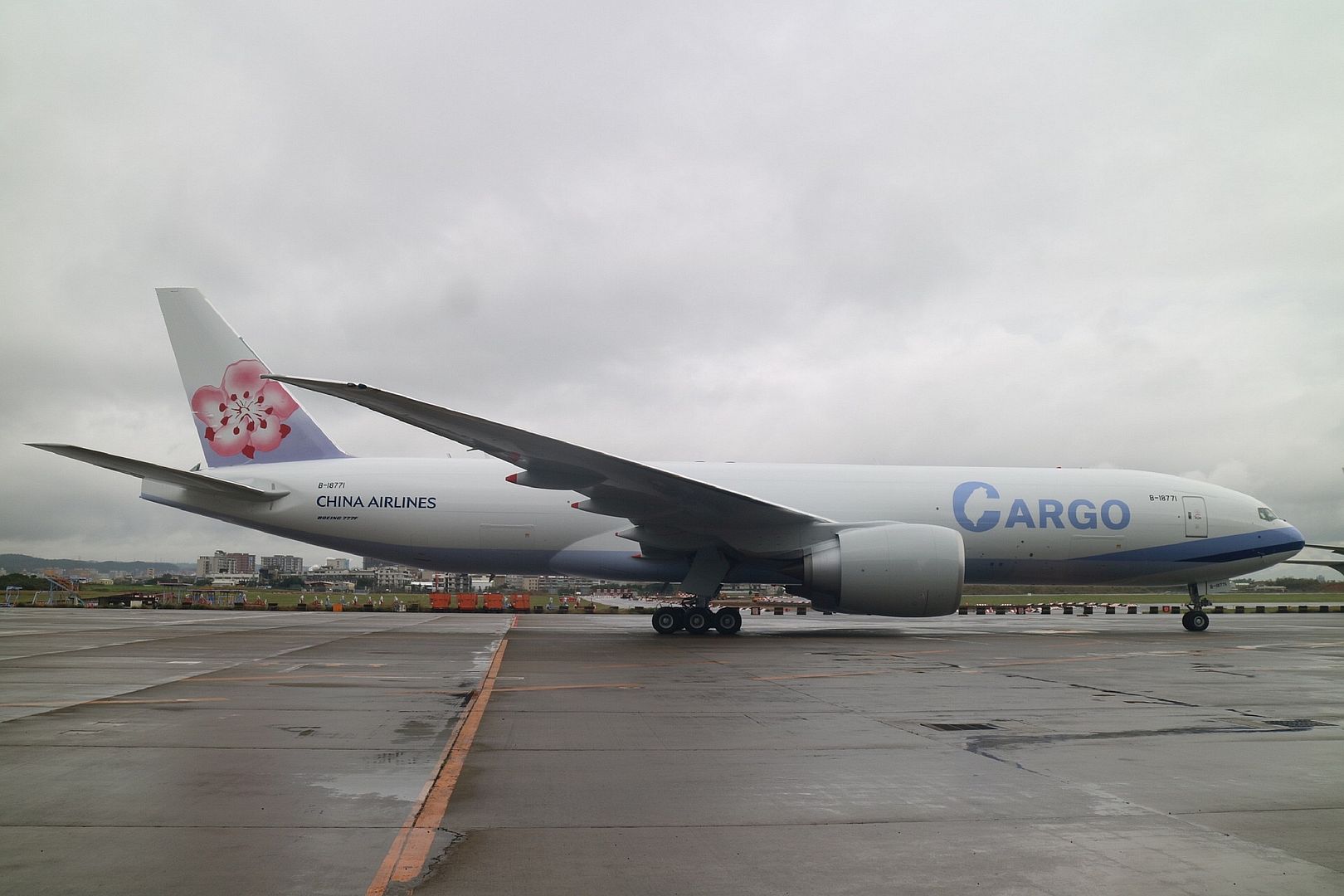
Mirabel, QC (December 14, 2020) ? Today, Bell Textron Inc., a Textron Inc. (NYSE: TXT) company, showcased its Electrically Distributed Anti-Torque (EDAT) aircraft during A?ro-Montreal?s 2020 Innovation Forum at Bell?s facility in Mirabel, Quebec.
?For nearly 35 years, our Mirabel team has designed and built commercial helicopters in Canada, and today we are extremely proud to present our first electrically distributed aircraft to the world,? said Steeve Lavoie, president of Bell Textron Canada Ltd. ?The EDAT represents what is possible with a shared private-public focus on innovation and green technology, and such investments reinforce Canada?s position as a global aerospace leader.?
Funded in part by Canada?s Ministry of Innovation, Science and Industry, Bell?s EDAT system is composed of four small fans within a tail rotor shroud in an offset two-by-two pattern. Each of the rotors contains four blades which are powered by four separate motors with the electrical energy provided through generators driven by turbine engines, effectively reducing noise and offering lower operational and maintenance costs compared to an aircraft with a conventional tail rotor.
?Our Government is proud to support investment in Canadian innovations. New developments in areas like vertical lift powers Canadian leadership as the market shifts toward more sustainable and efficient transportation. These innovations will increase aircraft energy efficiency and reduce sound pollution.? said the Honourable Navdeep Bains, Minister of Innovation, Science and Economic Development.
?Today?s milestone for EDAT is a great source of pride for all Canadians and shows that Bell is a leader within the dynamic Canadian aerospace industry. Our Government is proud to invest in projects like this that propel innovation and sustainability in our country.?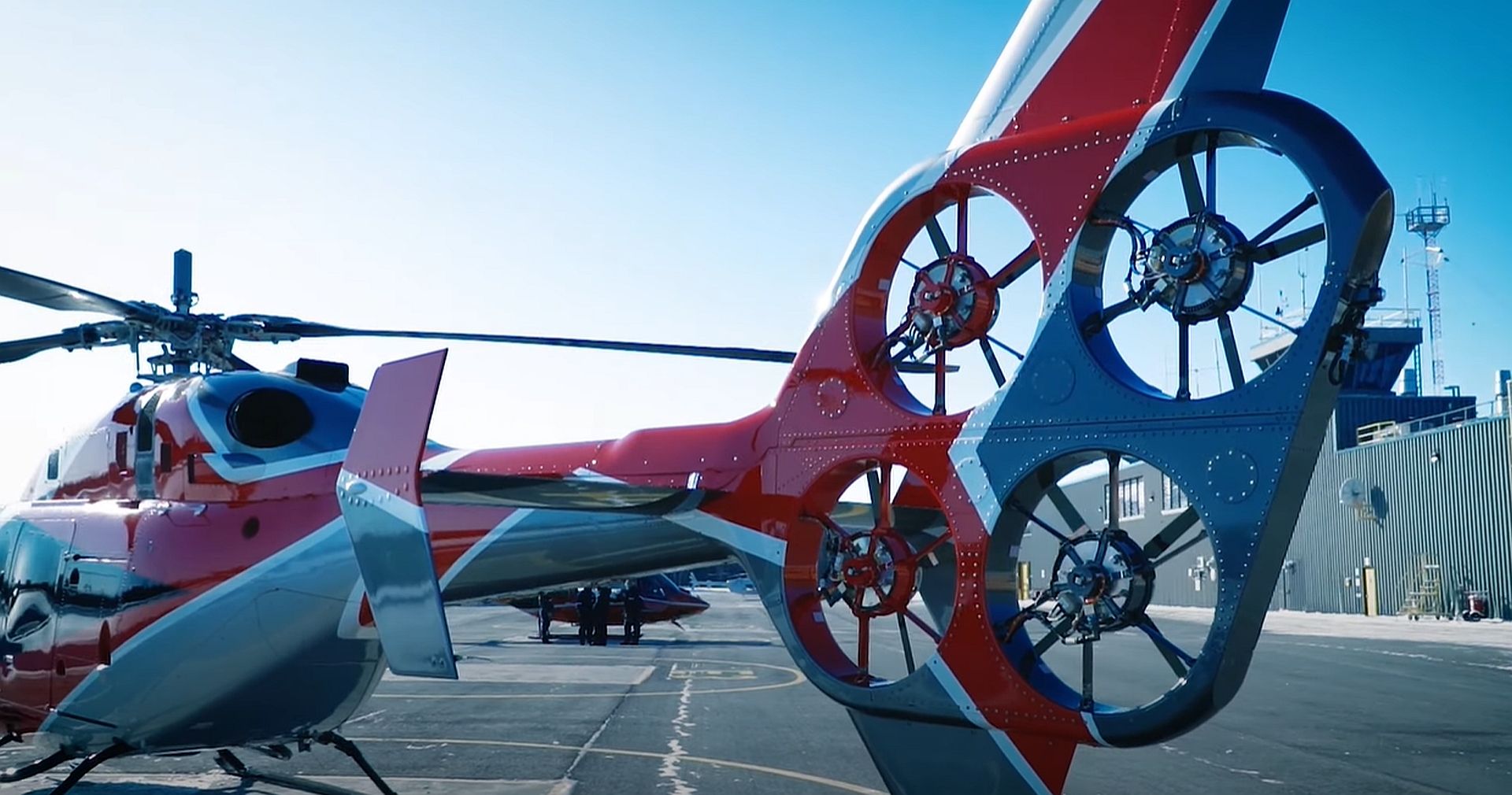
?Montreal, Quebec, is one of the world's three aeronautics hubs; it sets the objective of becoming the most innovative cluster of aerospace companies in the world,? said Suzanne Beno?t, President of A?ro Montr?al. ?By offering the first electrically powered aircraft, Bell is helping to make this ambition a reality and setting the tone for the development of greener technologies. It is through innovations like this one that we will succeed tomorrow in building an industry that is more environmentally friendly and in maintaining our position as a leader in aerospace.?
Throughout the year, Bell?s EDAT innovation has garnered interest as the first technology of its kind in the rotorcraft industry, challenging the norms for aircraft noise output, safety and electrical distribution, and was recently recognized by Popular Science as the winner of its ?Best of What?s New Award? in the Aerospace category for 2020.
Development of Bell?s EDAT technology, flight test activities and envelope expansion are currently taking place at Bell?s facility in Mirabel, Quebec. The team is dedicated to incorporating greener technologies, including electric and hybrid-electric capabilities, to meet the expanding needs of customers and will continue to gather data to further measure the EDAT?s full potential and viable application to future commercial platforms.
-
 Main AdminA KC-135 Stratotanker from MacDill Air Force Base, Fla., takes off from Barksdale Air Force Base, La., Dec. 14, 2020. Exercises like these demonstrate how the 2nd Bomb Wing?s deployable B-52H Stratofortresses can reach the corners of the globe at a moment?s notice providing combat support ?anytime, anywhere.? (U.S. Air Force photo by Senior Airman Lillian Miller)
Main AdminA KC-135 Stratotanker from MacDill Air Force Base, Fla., takes off from Barksdale Air Force Base, La., Dec. 14, 2020. Exercises like these demonstrate how the 2nd Bomb Wing?s deployable B-52H Stratofortresses can reach the corners of the globe at a moment?s notice providing combat support ?anytime, anywhere.? (U.S. Air Force photo by Senior Airman Lillian Miller)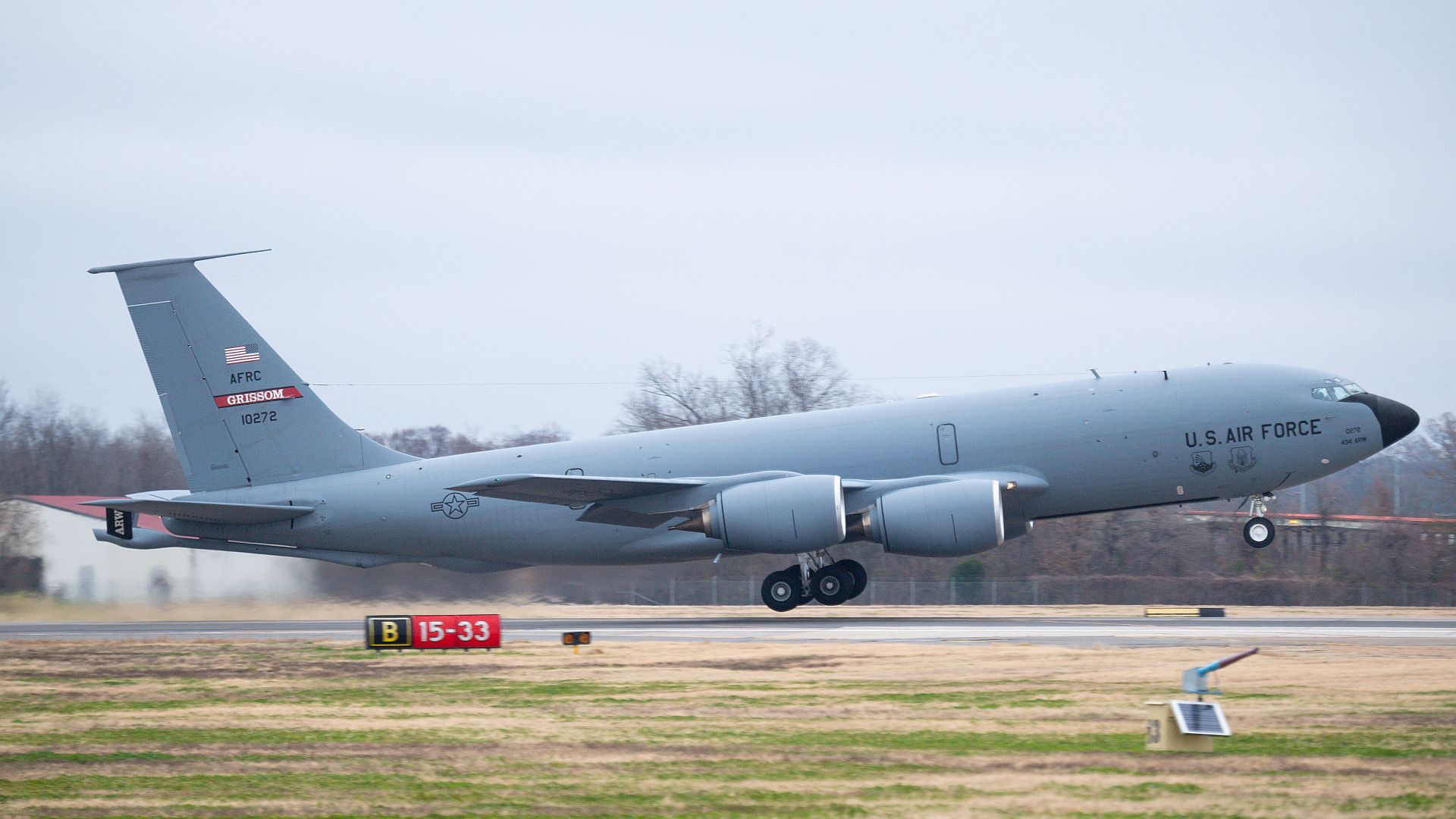
A U.S. Air Force F-16 Fighting Falcon from the 555th Fighter Squadron soars above Aviano Air Base, Italy, Dec. 15, 2020. The 555th FS provides combat airpower on demand to U.S. and NATO Combatant Commanders as well as the National Command Authority in order to meet National Security objectives. The 555th FS continues to fly sorties to ensure they remain mission ready throughout the COVID-19 pandemic. (U.S. Air Force photos by Airman 1st Class Ericka A. Woolever)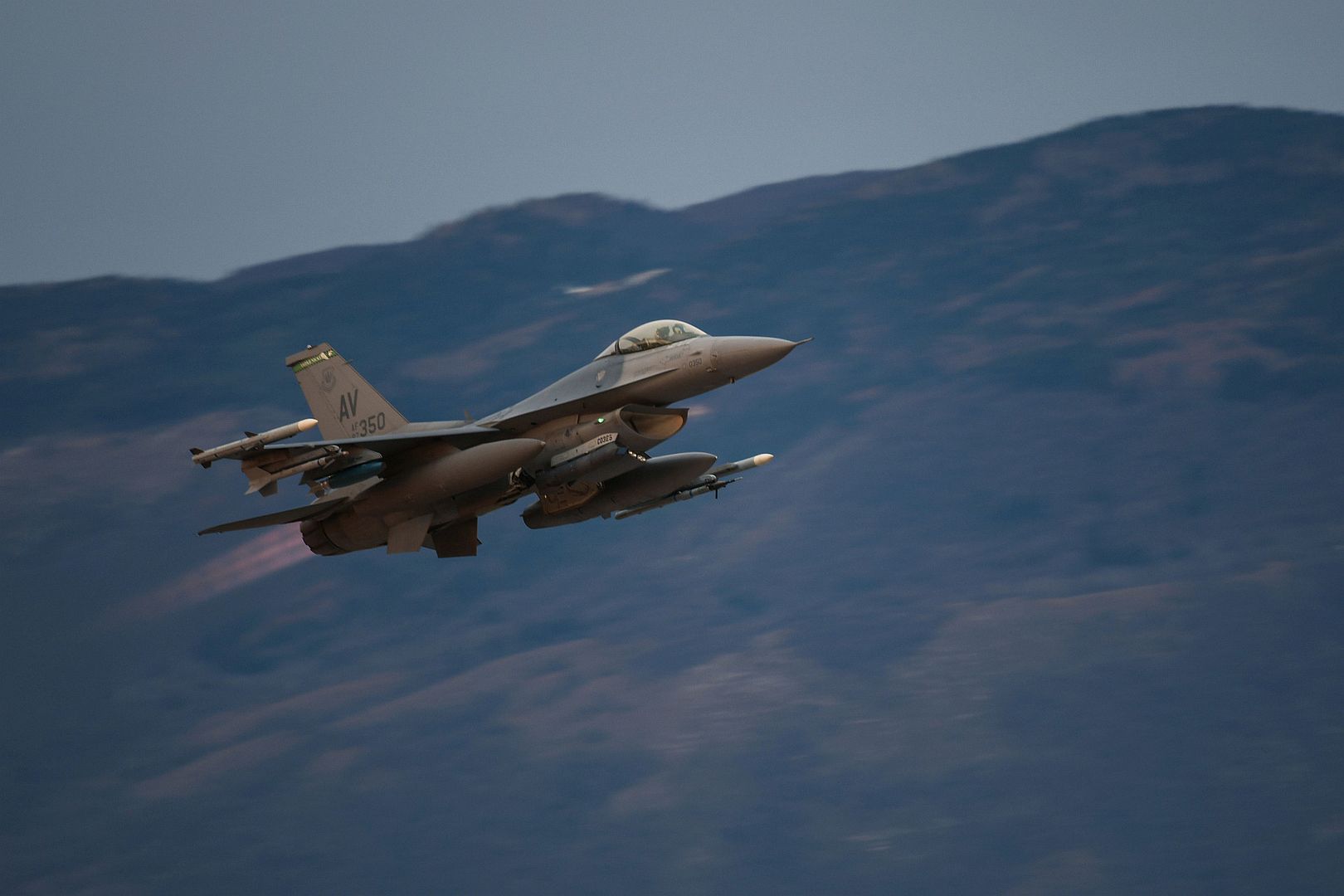
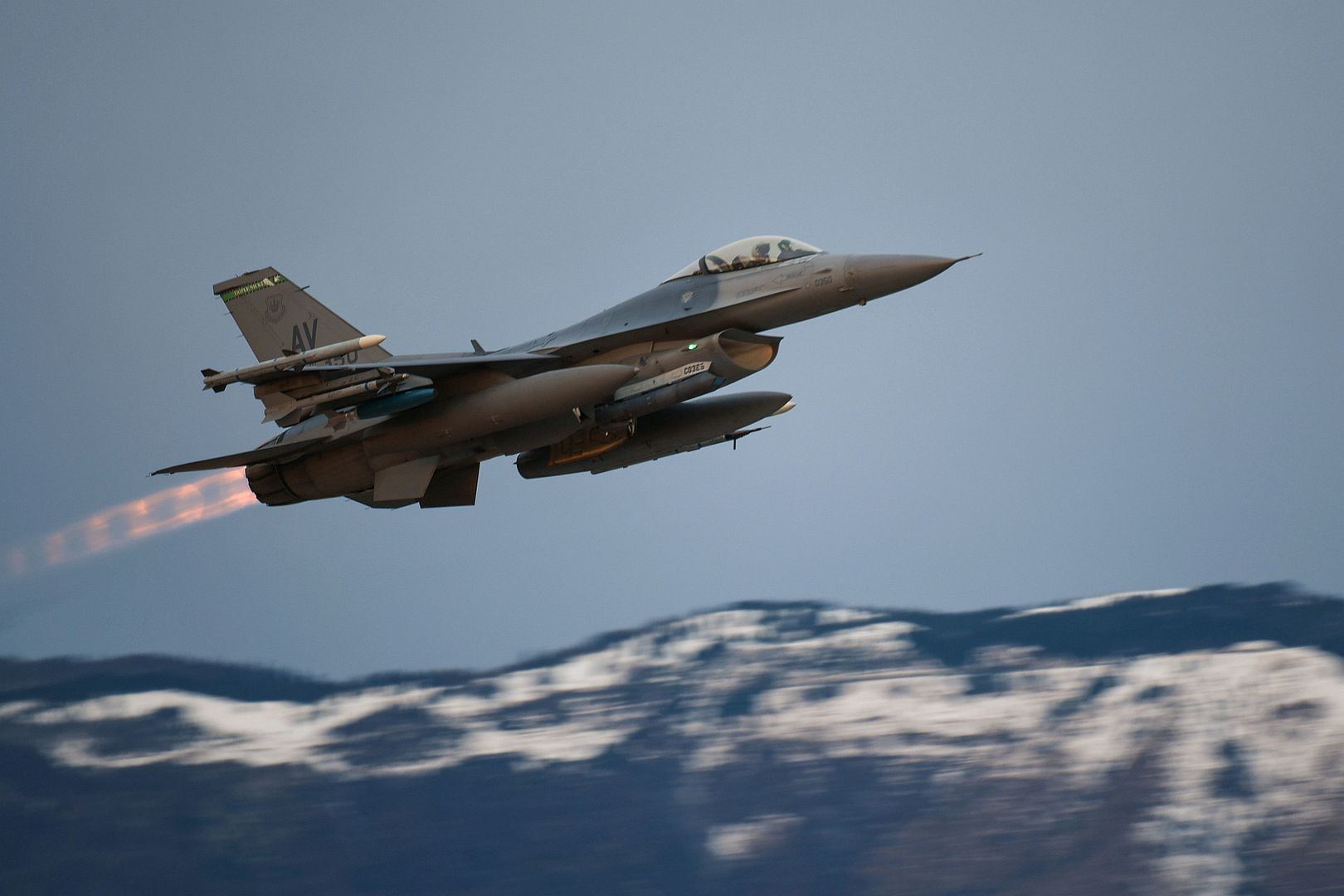
ATLANTIC OCEAN (Dec. 11, 2020) A T-45C Goshawk attached to Training Air Wing 1 prepares to launch from the aircraft carrier USS Gerald R. Ford (CVN 78) during flight operations, Dec. 11, 2020. Gerald R. Ford is underway in the Atlantic Ocean conducting carrier qualifications. (U.S. Navy photo by Mass Communication Specialist 3rd Class Brett Walker)
Rome 16 December 2020.
A groundbreaking ceremony for the new International Flight Training School was celebrated today at the Italian Air Force?s base in Decimomannu (Sardinia ? Italy). Italian Defence Undersecretary Hon. Giulio Calvisi, the Sardinian Region?s Governor Hon. Christian Solinas, Italian Chief of Defence Staff Gen. Enzo Vecciarelli, Italian Air Force Chief of Staff Gen. Alberto Rosso, Leonardo Chairman Luciano Carta, Leonardo CEO Alessandro Profumo and Marco Zoff, Leonardo Aircraft MD, were among the attendees.
The International Flight Training School (IFTS) is the result of a strategic collaboration between the Italian Air Force and Leonardo, which is aimed at the establishment of an advanced flight-training centre. This initiative will become an international benchmark for military pilots? training, particularly in the advanced phase of training future fighter pilots.
Luciano Carta, Chairman of Leonardo, said: "The International Flight Training School brings a very high level of technological innovation and cutting-edge training skills, which will contribute to enhancing the role of the Italian Air Force and our Company in an increasingly complex and competitive international context. For this reason, Leonardo will provide skills, technology, and innovation to support the creation of the most important training centre for military aviation, a source of pride for Italy, for Europe and for our strategic allies.?
Alessandro Profumo, CEO of Leonardo, said: ?The International Flight Training School is able to meet the growing demands of the Italian Air Force and partner countries for pilot training. It is a virtuous example of a synergic collaboration between the military and industry, which, in turn, generates an important return for the whole country. We?ve combined the Air Force?s established know-how and Leonardo?s excellence in military pilot integrated training systems with maximised cost-effectiveness, whilst strengthening the international role played by Leonardo as a Training Service Provider.?
?Today?s event, though simple and unfortunately with a limited number of authorities attending due to Covid-19, is an important step in an ambitious international initiative not only for the Italian Air Force and Leonardo but also for the entire nation?, said Italian Air Force Chief of Staff Gen. Alberto Rosso. ?The work to build the facilities which will host a state-of-the-art advanced flight training school starts at this Airbase today. Here is where Italian military pilots, and those pilots from countries who have recognised the quality and effectiveness of our integrated training system, will be trained. An integrated training system developed for those who will fly 4th and 5th generation fighters?. Gen. Rosso continued: ?The Italian Air Force and Leonardo share expertise and technologies to create, in the most cost-effective way, modern professionals, able to operate and manage increasingly technological and complex aircraft. Competences, quality and long-established experience of both the Air Force and our national industry in the training sector are the best calling card for this excellent training offer.?
?This is an important project with no less than 20-years of operation ahead, considering the military and industrial efforts devoted to IFTS. The partnership between the Italian Air Force, thanks to its longstanding and solid flight training expertise, and Leonardo as a leader in integrated training, provides evidence of a clear synergy between two Italian excellences. A collaboration which, on the one hand, will lead to an increase in the training offer with important local benefits in terms of job opportunities. On the other hand, there is the possibility for Leonardo to attract further foreign investments, strengthening the role and world leadership in this sector? said Defence Undersecretary Giulio Calvisi.
With the building of the new IFTS campus headquartered at the Decimomannu Airbase, a true flight training academy will be established. It will be able to host students, technicians, as well as leisure and sports areas, a cafeteria, and maintenance and logistics infrastructures to guarantee the readiness of a 22 M-346 (designated the T-346A by the Italian Air Force) airplane fleet. An entire building will be home to the Ground Based Training System (GBTS), with classrooms and the installation of a modern training system based on the latest generation simulation system. The construction of the IFTS facility will generate positive returns for the local economy and supply chain. Once the construction is complete, the IFTS will achieve operational readiness starting in 2022, creating significant job opportunities locally.
With the new Leonardo M-345 arriving soon at the Italian Air Force?s 61st Wing Airbase in Lecce Galatina to replace gradually the T-339A and FT-339C fleets, the M-346-based training syllabus advanced phase will be moved progressively to the Decimomannu Airbase.
The Leonardo M-346 is the cornerstone of the Air Force training unit, where many pilots have been trained, not only from Italy but also from a number of other countries including: the USA, Spain, France, Austria, The Netherlands, Poland, Singapore, Argentina, Greece and Kuwait.
-
 Main AdminTRAVIS AIR FORCE BASE, Calif. (AFNS) --
Main AdminTRAVIS AIR FORCE BASE, Calif. (AFNS) --
The 60th Security Forces Squadron, in collaboration with Easy Aerial, a leading provider of autonomous drone-based monitoring solutions, launched the first automated drone-based perimeter security system for the Air Force, Dec. 11.
The small unarmed aircraft initiative redefines on-base perimeter security systems to potentially advance warfighting capabilities, enhance strategic deterrence and foster full-spectrum readiness across the Air Force.
?Easy Aerial?s unmanned aerial systems are a game-changer,? said Master Sgt. Joshua Hicks, 60th SFS small unmanned aircraft system instructor. ?This jointly developed technology will provide unparalleled security and safety for our Airmen and critical assets.?
Upon receiving a security trigger, such as a fence alarm, fire alarm or other distress call, the Smart Air Force Monitoring System can be programmed to automatically deploy from its base station and autonomously navigate to the triggered site to provide complete, unparalleled situational awareness. After mission completion, the small unarmed aircraft autonomously returns to its base station, where it recharges and waits for its next mission.
The small unarmed aircraft initiative is part of the Small Business Innovation Research Phase II program, which adheres to Air Force perimeter security and situational awareness operational requirements.
?This was a joint effort as we worked closely together from start to finish, resulting in a customized solution for the Air Force that meets all of their operational desires and requirements,? said Ivan Stamatovski, Easy Aerial chief technology officer.
Hicks stressed the technology could save lives, time and money.
While the sight of seeing small unarmed aircraft fly around Travis Air Force Base may seem suspicious to some, Hicks said, there is no need for alarm as the drones will enhance mission effectiveness.
?The sUAS has the capability to assist civil engineering for fire response, maintenance for tail inspections ? and that is just the beginning,? he said. ?The impact this program is going to have on the Air Force will be seen in many different capacities.?
When Gen. Jacqueline Van Ovost, commander of Air Mobility Command, announced her priorities for AMC in October, she stressed the importance of expanding capabilities to project the force, defend installations and networks while maintaining the joint force.
?Key to that methodology and mission success is innovation; seeing things as they can be, not how they are,? Van Ovost said.
This is truly a pioneering moment for the Air Force and the Department of Defense championed by Travis AFB, Hicks added.
(U.S. Air Force photo by Nicholas Pilch)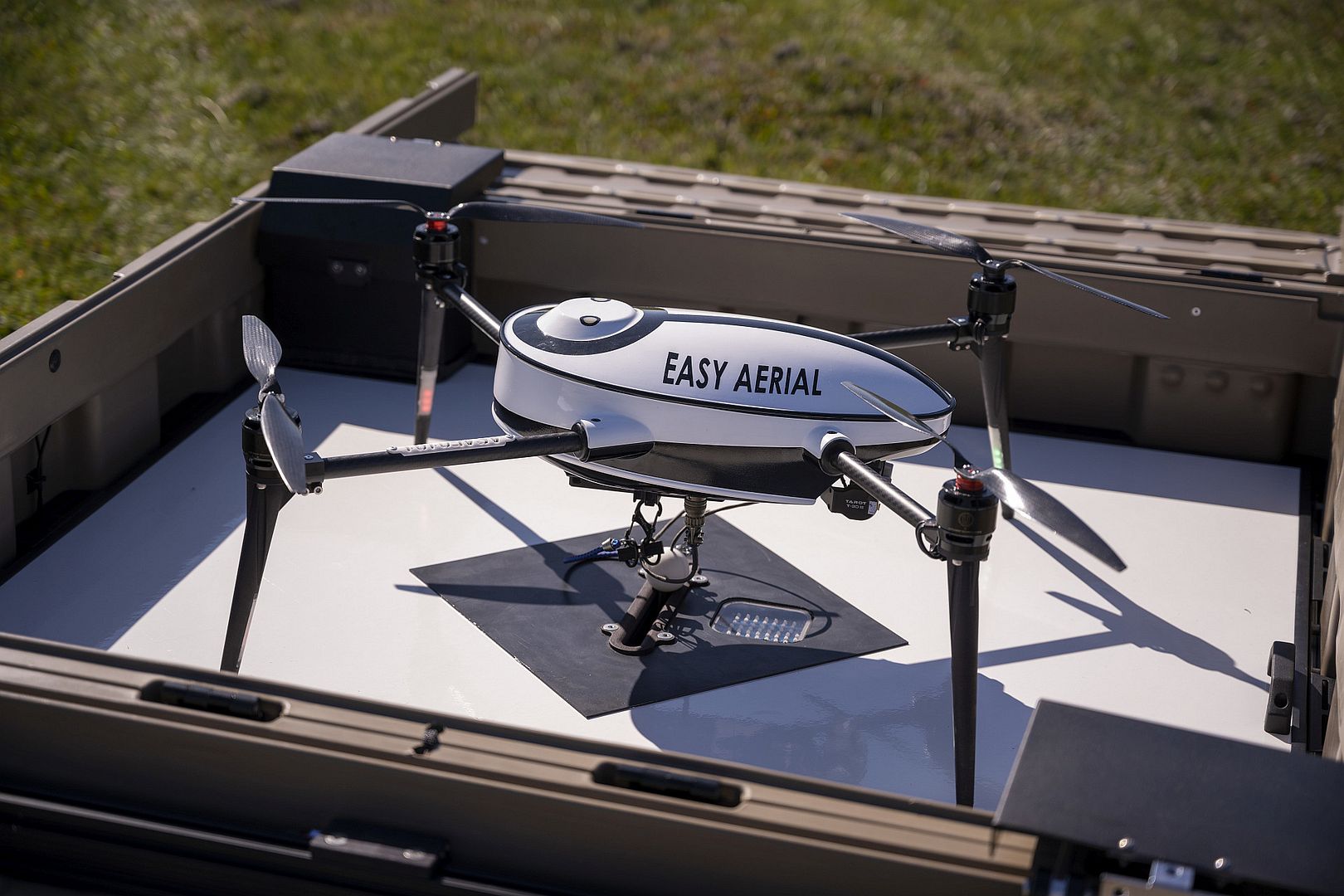
A U.S. Air Force F-16 Fighting Falcon pilot, assigned to the 77th Expeditionary Fighter Squadron, prepares to depart after receiving fuel from a KC-135R Stratotanker, assigned to the 50th Expeditionary Aircraft Refueling Squadron, over Southwest Asia Dec. 15, 2020. The F-16 Fighting Falcon is a compact, multi-role fighter aircraft that delivers airpower to the U.S. Central Command area of responsibility. (U.S. Air Force photos by Staff Sgt. Taylor Harrison)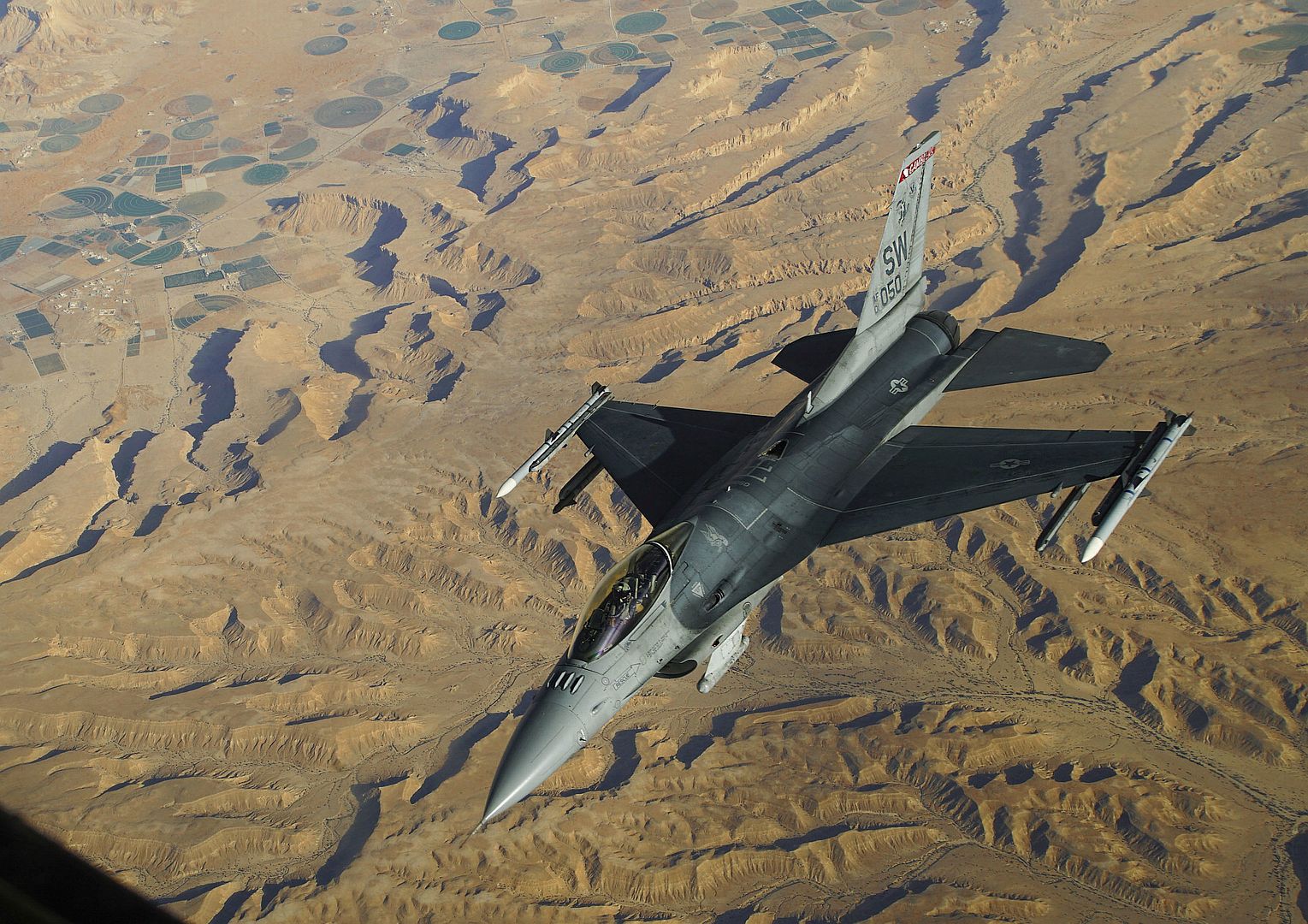
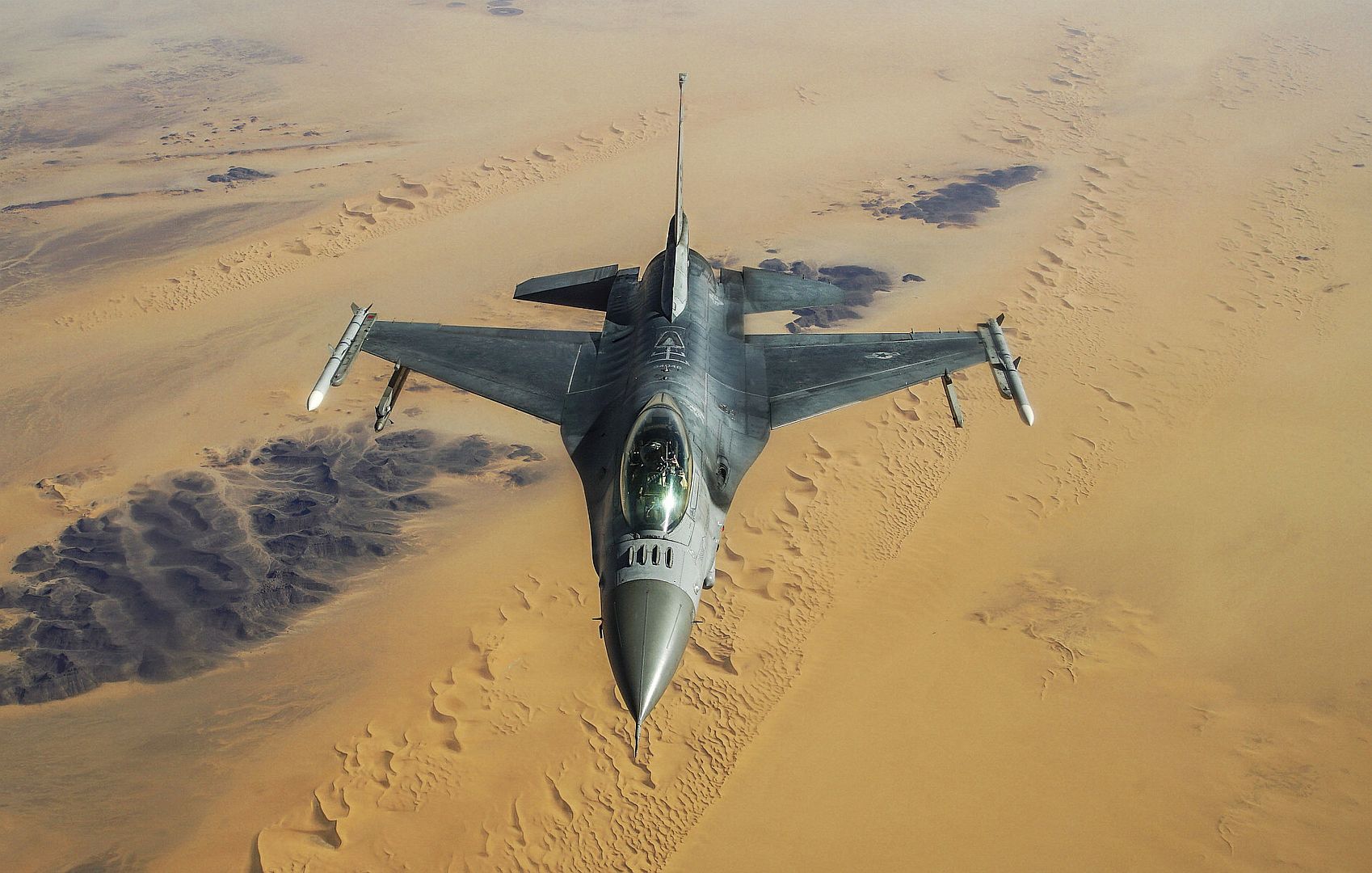
Two U.S. Air Force F-16 Fighting Falcons, assigned to the 77th Expeditionary Fighter Squadron, fly in formation with two Royal Saudi Air Force F-15E Strike Eagles, after receiving fuel from a KC-135R Stratotanker, assigned to
the 50th Expeditionary Aircraft Refueling Squadron, during a routine exercise over Southwest Asia, Dec. 15, 2020. Air Forces Central continues to build and strengthen regional partners by training alongside one another, integrating capabilities and increasing interoperability to project agile combat employment from established and austere locations throughout the U.S. Central Command area of responsibility. (U.S. Air Force photos by Staff Sgt. Taylor Harrison)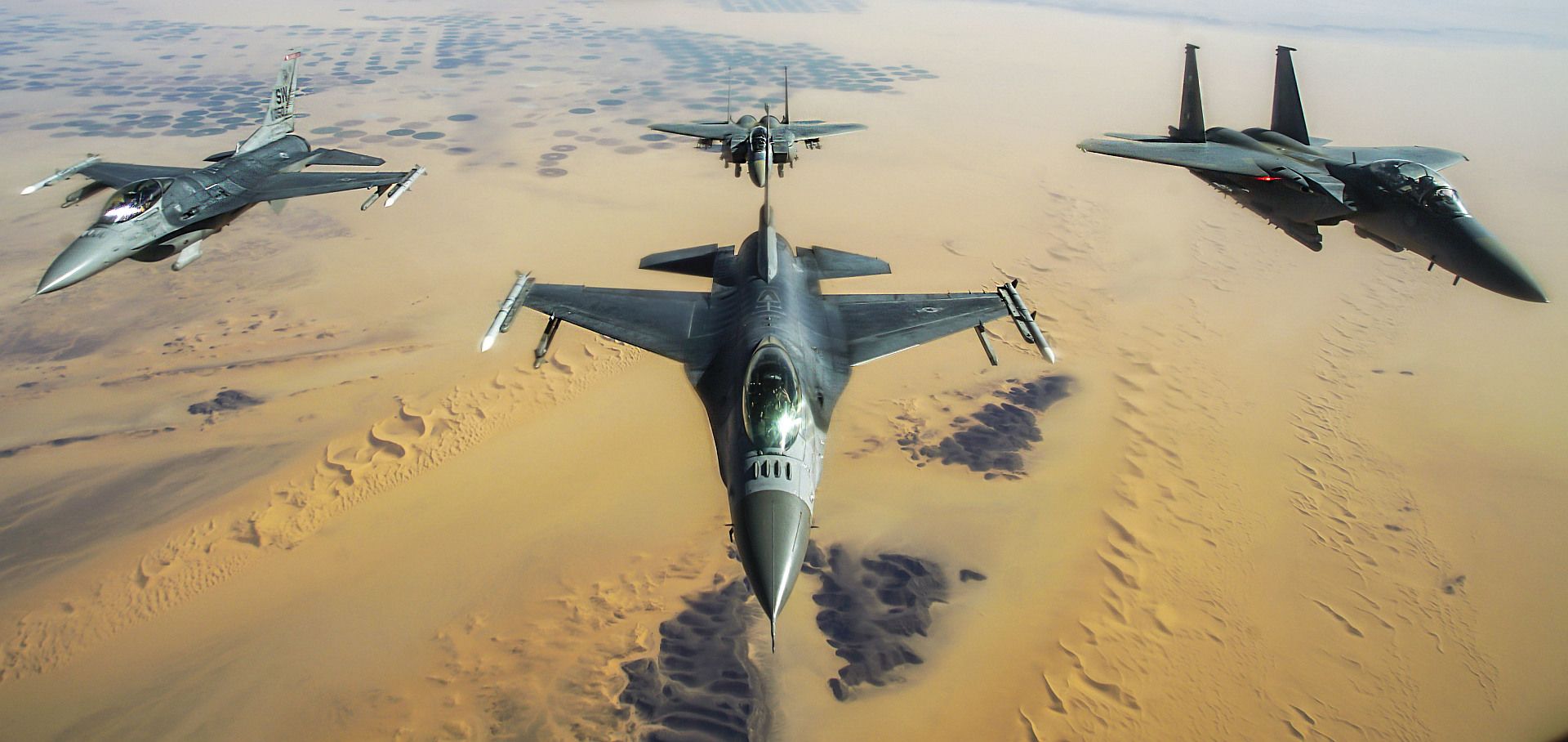
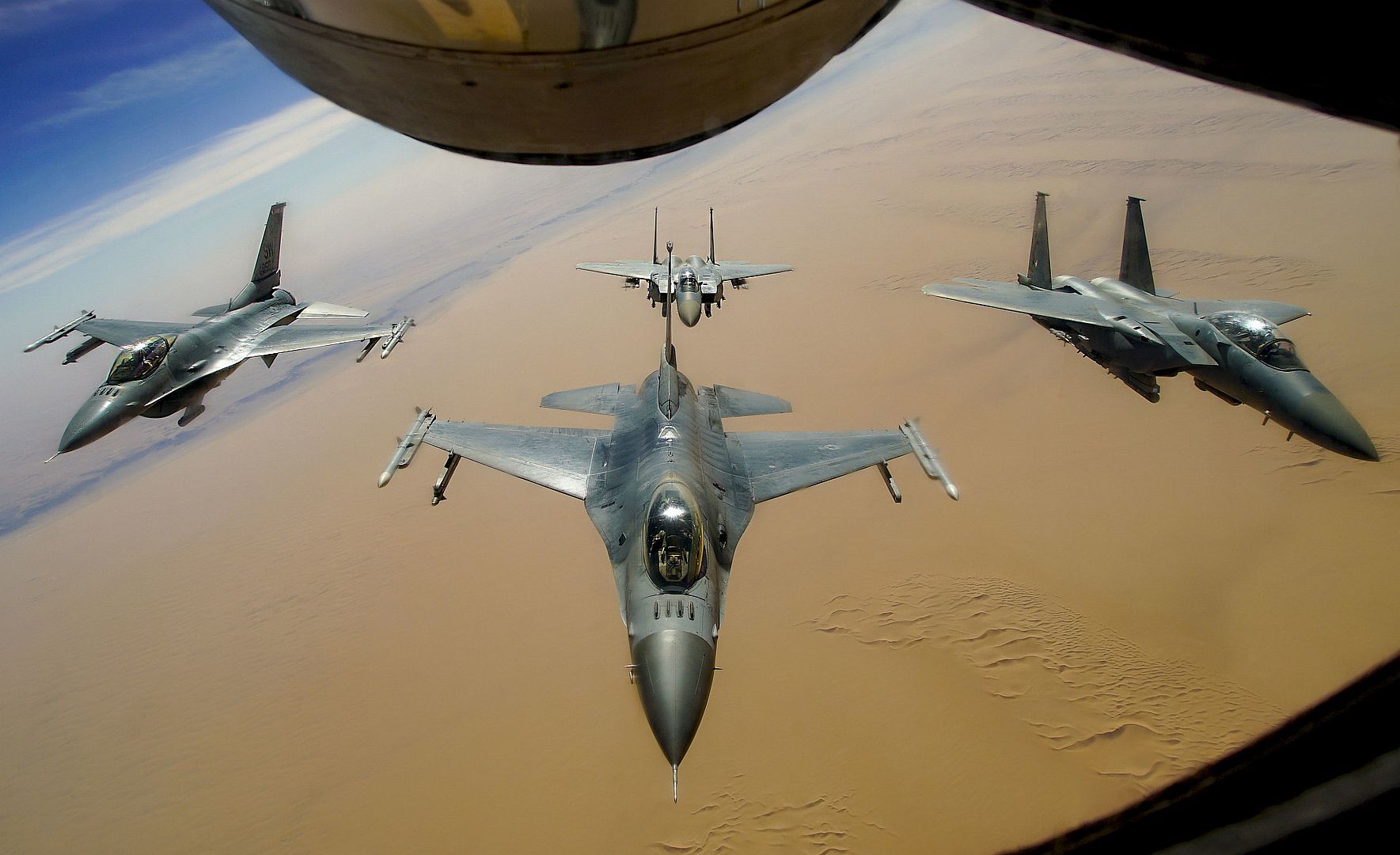
An F-35A Lightning II pilot taxis on the runway Dec. 16, 2020, at Eielson Air Force Base, Alaska. The F-35A is the Air Force?s newest fifth-generation multi-role aircraft. The 354th Fighter Wing is slated to receive 54 jets by the end of 2021. (U.S. Air Force photos by Airman 1st Class Jose Miguel T. Tamondong)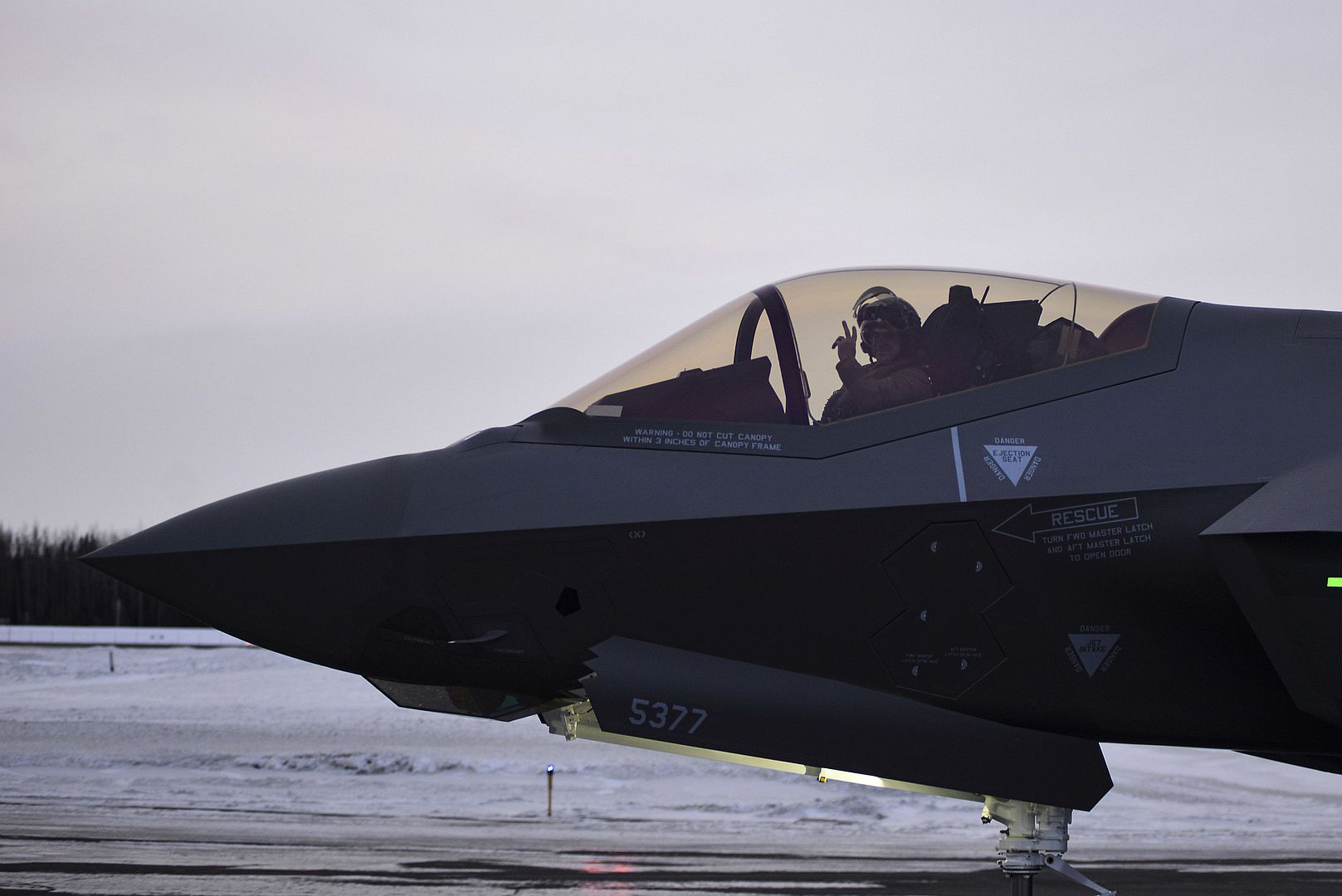
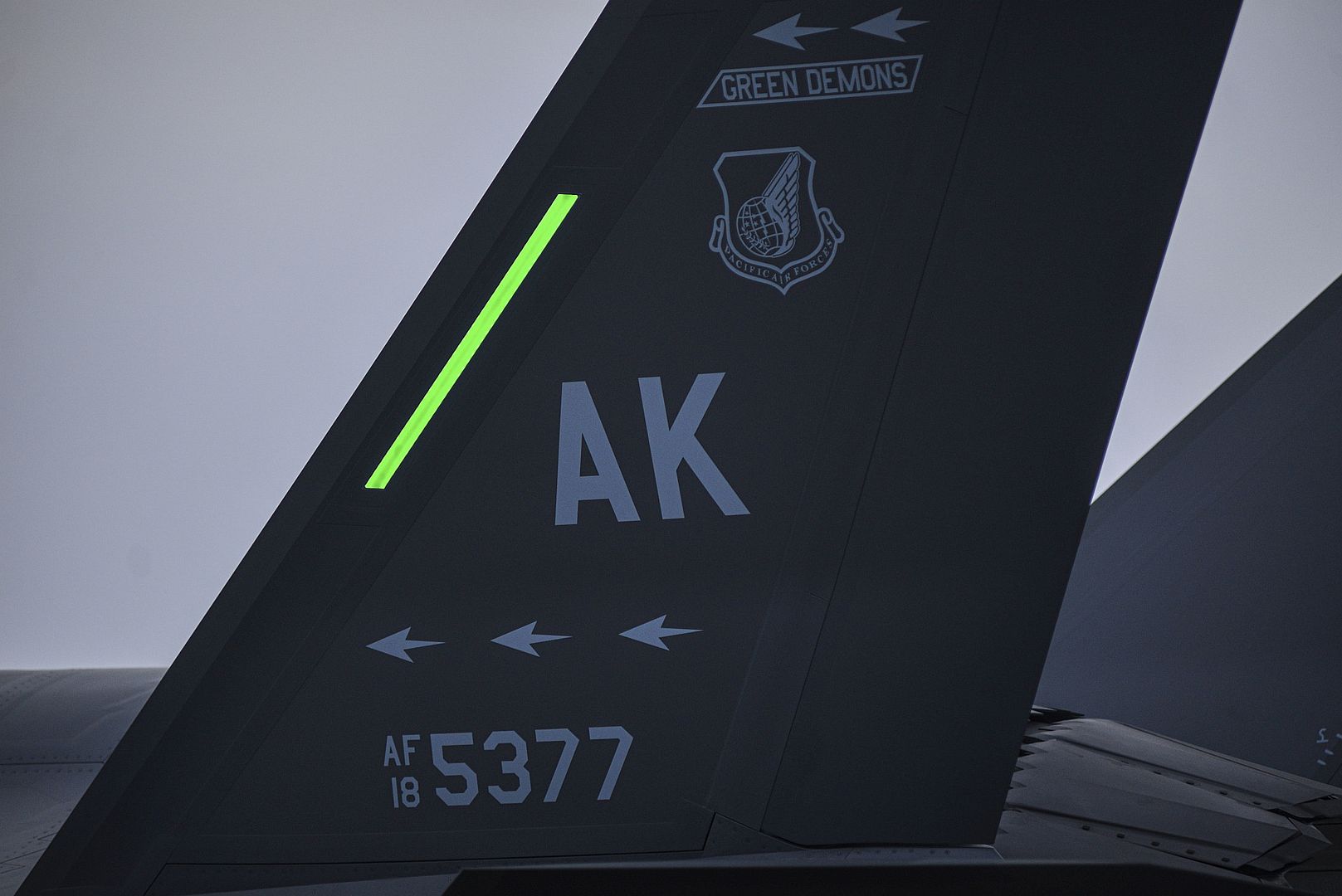
A U.S. Air Force B-1B Lancer from Ellsworth Air Force Base, S.D., stands by on the flightline at Andersen Air Force Base, Guam, for a Bomber Task Force mission, Dec. 16, 2020. More than 150 Airmen and four B-1B Lancers assigned to Ellsworth deployed to the Pacific in support of BTF dynamic force employment. This empowers a small but agile footprint of maintenance personnel to generate airpower at locations across the globe. (U.S. Air Force photo by Senior Airman Tristan Day)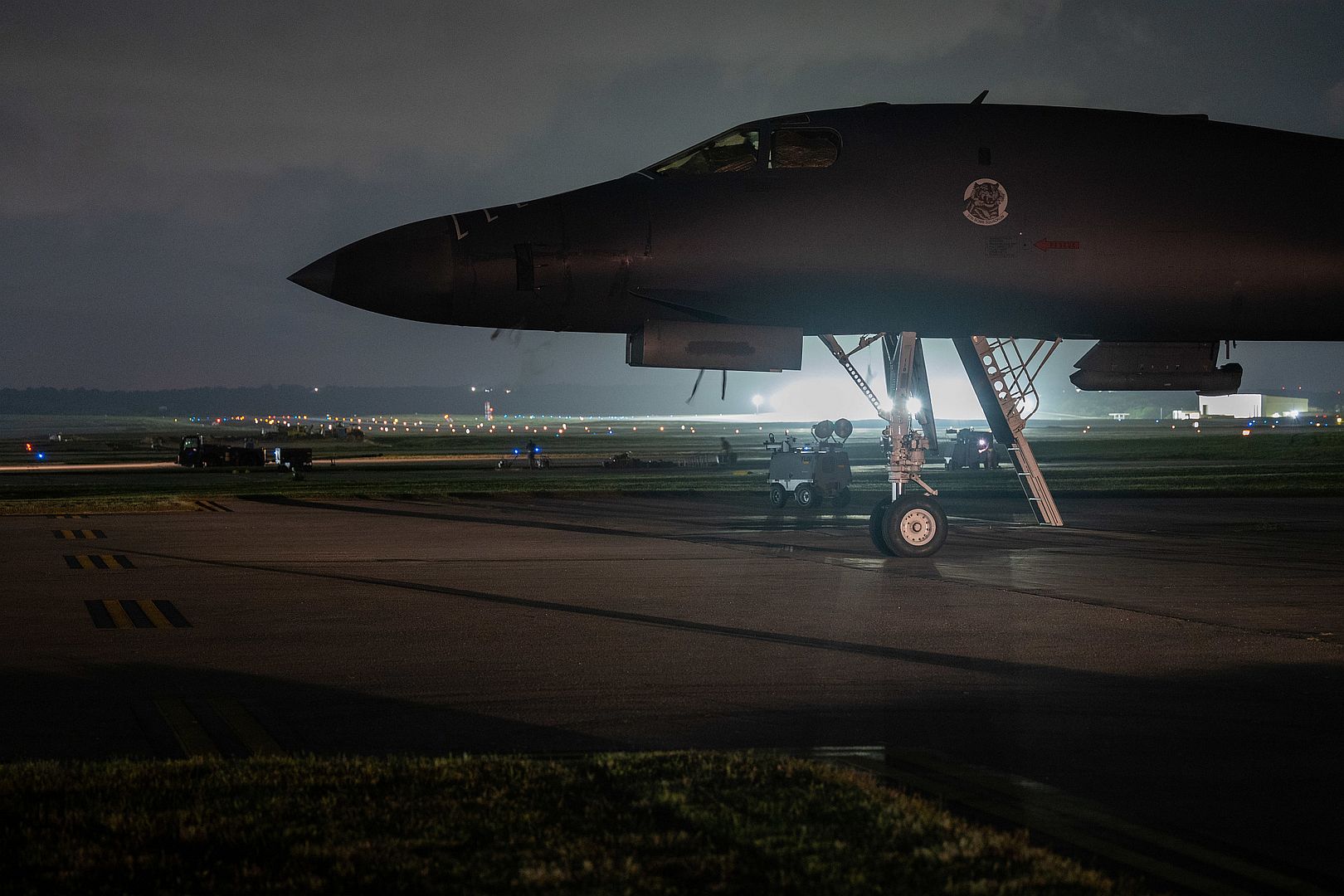
RAF LOSSIEMOUTH, Scotland (Dec. 14, 2020) A P-8A Poseidon anti-submarine warfare patrol aircraft, assigned to the "Grey Knights" of Patrol Squadron (VP) 46, returns from flight, Dec. 14, 2020. VP-46 is currently forward deployed to the U.S. 6th Fleet area of operations and is assigned to Commander, Task Force 67, responsible for tactical control of deployed maritime patrol and reconnaissance squadrons throughout Europe and Africa. U.S. Sixth Fleet, headquartered in Naples, Italy, conducts a full spectrum of joint and naval operations, often in concert with allied and interagency partners, in order to advance U.S. national security interests and stability in Europe and Africa. (U.S. Navy photo by Mass Communication Specialist 2nd Class Austin Ingram)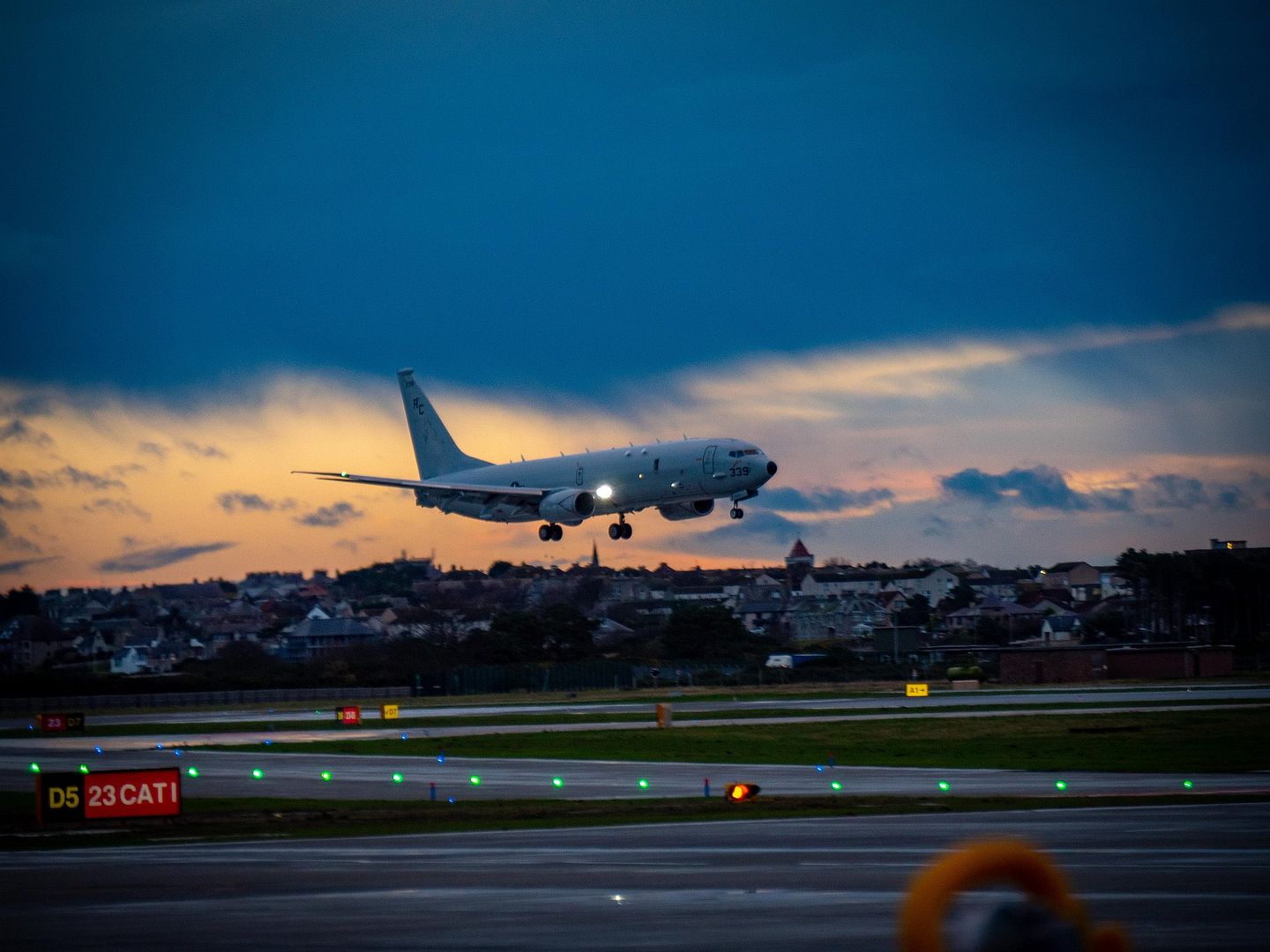
17.12.2020.
The crews of the operational and tactical aviation of the Central Military District began one of the most difficult types of flight training in the sky over the Urals during the day and at night - air-to-air refuelling (AAR).
Supersonic fighter-interceptors MiG-31BM, fighter jet Su-34 and reconnaissance aircraft Su-24MR at an altitude of about 4500 thousand meters at a speed of up to 700 km/h enter the starting position, when a distance of about 70 meters is reached, they begin to approach the Il-78 tanker sensor.
Two aircraft simultaneously perform refueling from a tanker. The distance between them is about 20 meters. During the event, about 30 flights were performed.
In total, about 20 aircraft and 300 military personnel of flight and engineering personnel are involved in the flights. Flights will be completed at the end of next week.
Air-to-air refuelling (AAR) is considered one of the most difficult elements of flight training. It is necessary to increase the range of combat use of aviation without making additional landings at airfields.
(Photo courtesy of the Ministry of Defence of the Russian Federation)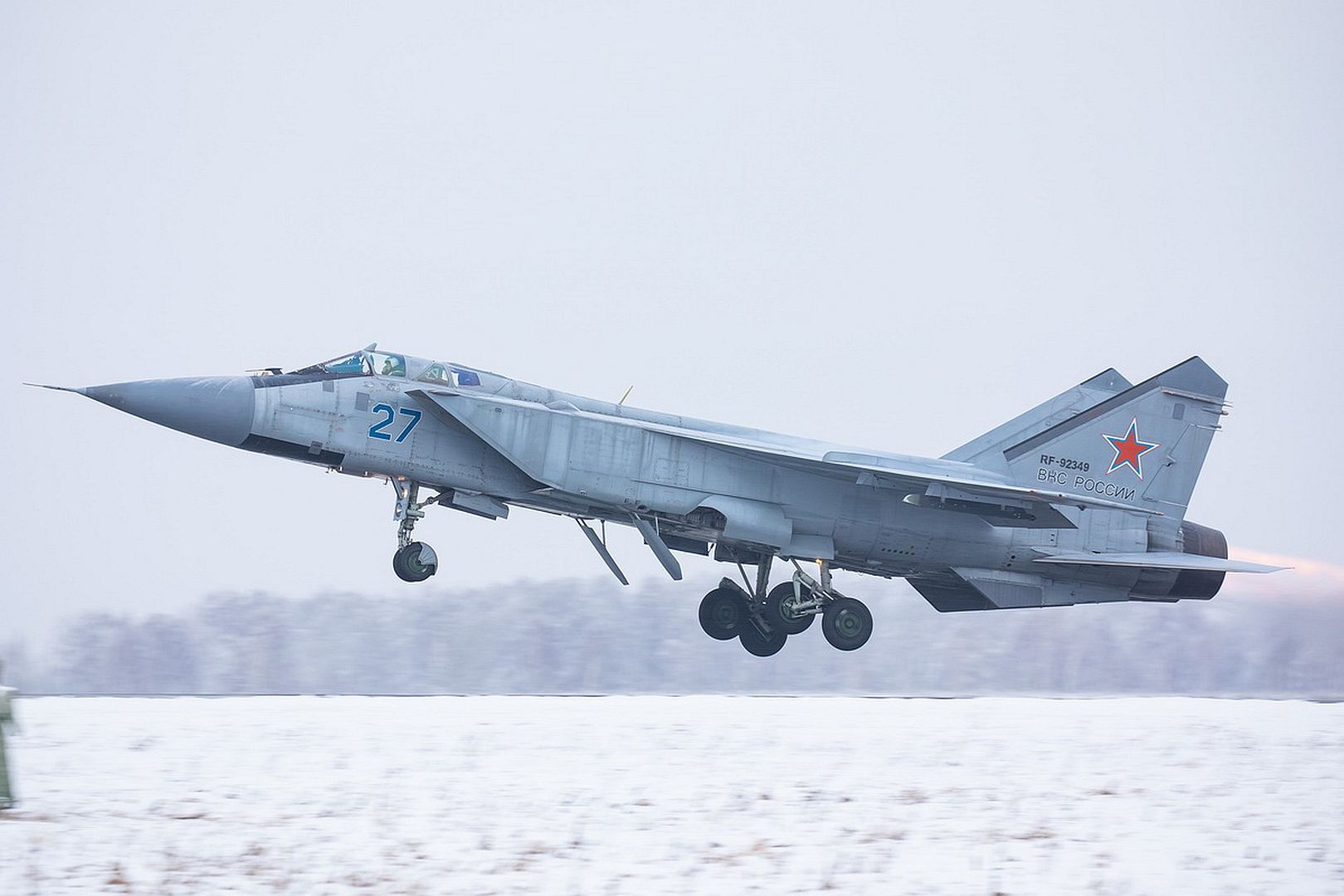
Donauw?rth, 17 December 2020 ? The European Union Aviation Safety Agency (EASA) has certified a new Alternate Gross Weight (AGW) for the latest version of the H135 family of helicopters. The new AGW enables operators to benefit from an increased maximum take-off weight of up to 120 kg (265 lb) and useful load. This increase can also be used to extend the range by up to 75 nm or the endurance by up to 40 minutes under standard conditions. The new AGW is available as an option and can be applied retroactively to all H135s equipped with Helionix.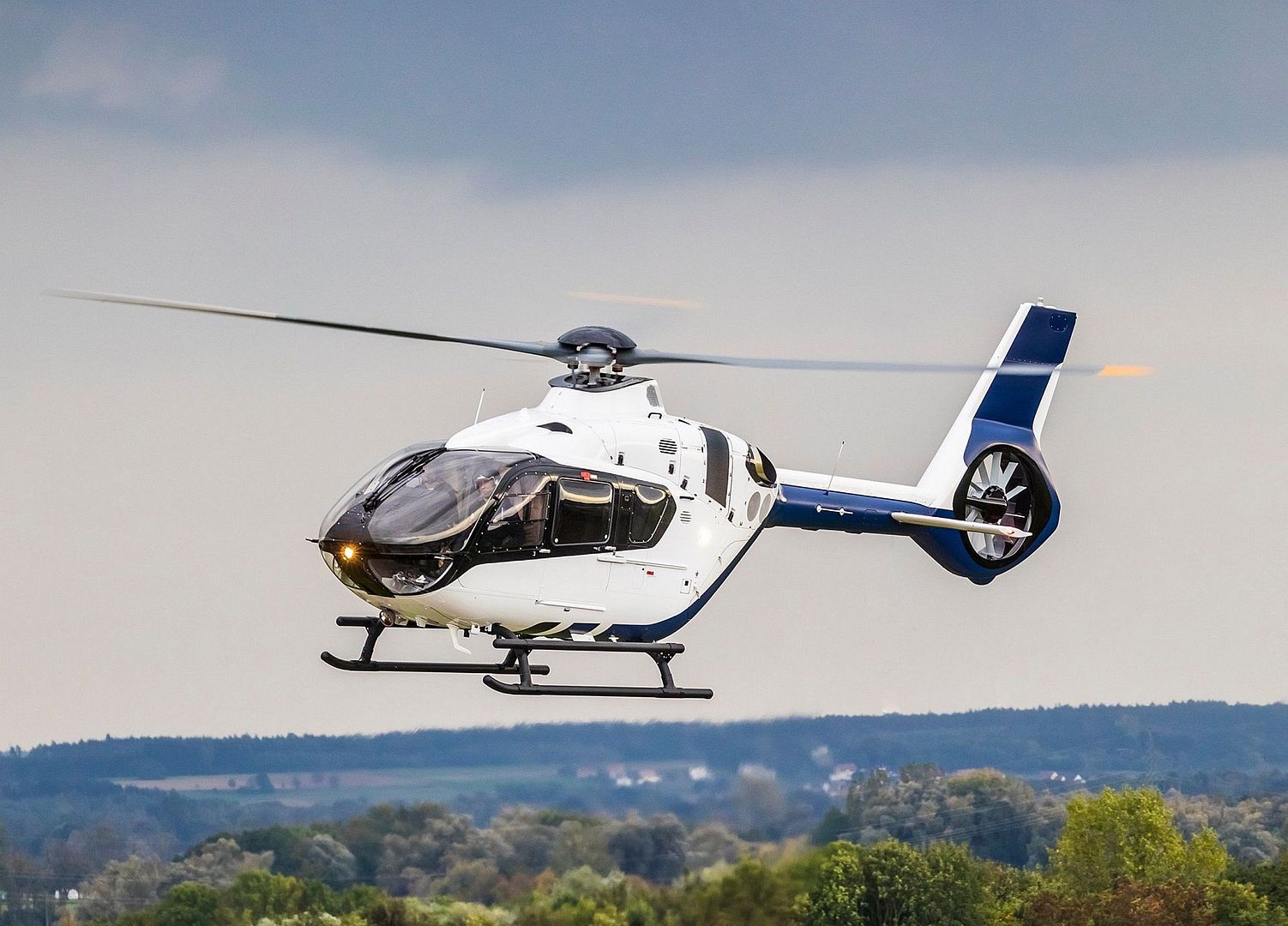
Additionally, Airbus has recently certified a new single pilot IFR Helionix cockpit for its H135 helicopters. The modified cockpit enables customers to choose between removing the copilot side of the instrument panel to increase the field of view or to keep it in order to install specific STC equipment. The single pilot IFR cockpit of the H135 will further boost the capabilities of the H135 in several missions, including aerial work, utility and law enforcement.
To date, more than 1,400 helicopters of the H135 family have been delivered around the globe with more than 5.6 million flight hours. More than 300 customers in 60 countries use helicopters from the H135 family for a wide range of missions including Helicopter Emergency Medical Services (HEMS), law enforcement, private and business aviation, offshore wind, and military training.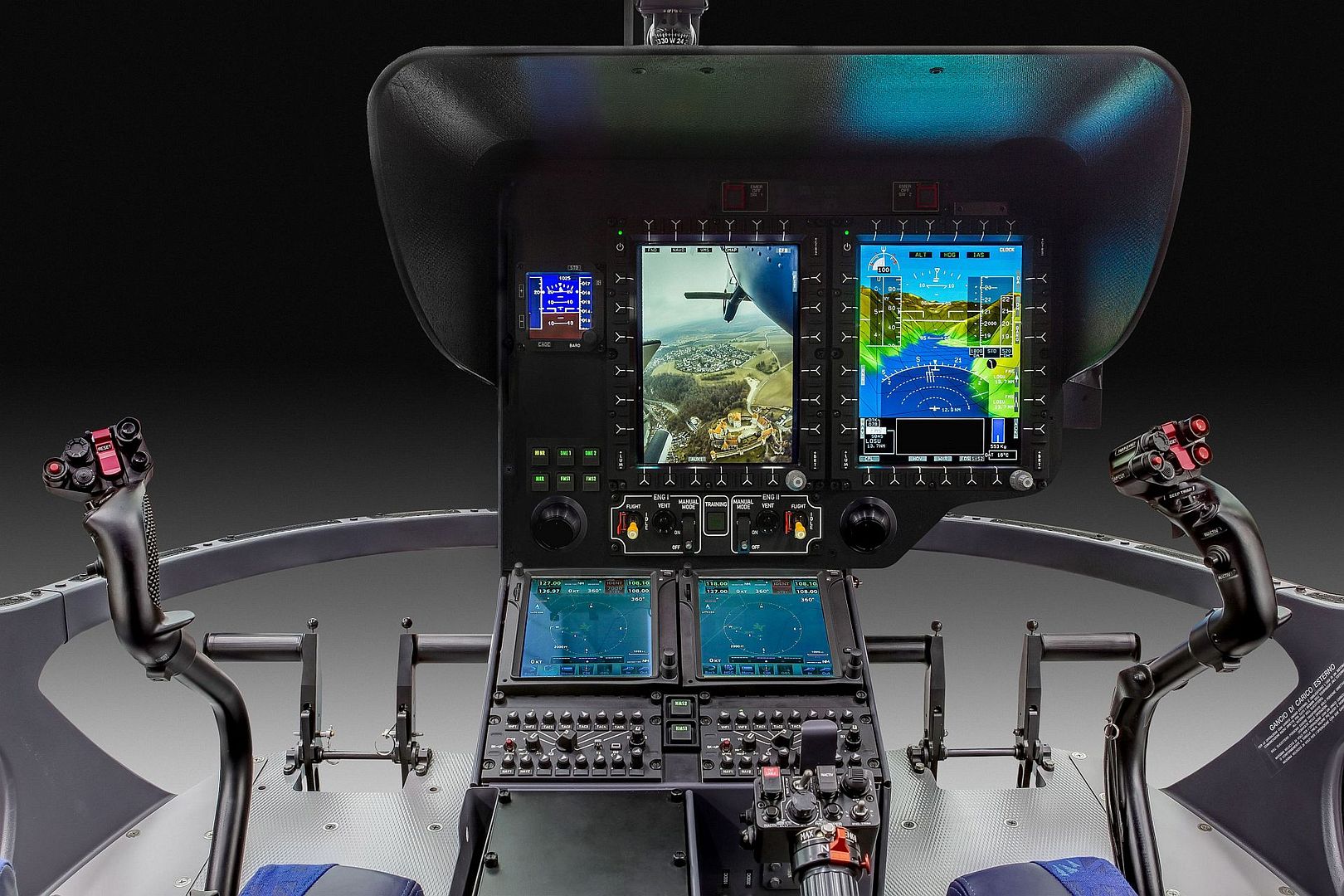
Typhoons from Royal Air Force Coningsby in Lincolnshire linked up with French Rafale and Mirage aircraft to intercept a simulated non-NATO aircraft entering UK airspace. The key objective of the scramble was to exercise and practice NATO Long Range Aviation procedures within the UK and French Flight Information Regions.
Describing the activity, Air Officer Commanding Number 11 Group, Air Vice-Marshal Ian Duguid said:
"This enhanced air security training with France is a demonstration of our close co-operation and interoperability with our NATO partners."
This week's activity was the first event arising from the signing of the Core Vision Statement last month by the Chief of the Air Staff, Air Chief Marshal Sir Mike Wigston, and his counterpart, General Lavigne.
-
 Main AdminUnder the direction of Joint Task Force - Quartz, U.S. Air Force CV-22 Ospreys land in Somalia in support of Operation OCTAVE QUARTZ Dec.18, 2020. The mission of OOQ is to reposition U.S. DOD personnel from Somalia to other locations in East Africa. The CV-22 Osprey is a tiltrotor aircraft that combines the vertical takeoff, hover and vertical landing qualities of a helicopter with the long-range, fuel efficiency and speed characteristics of a turboprop aircraft. (Courtesy Photos)
Main AdminUnder the direction of Joint Task Force - Quartz, U.S. Air Force CV-22 Ospreys land in Somalia in support of Operation OCTAVE QUARTZ Dec.18, 2020. The mission of OOQ is to reposition U.S. DOD personnel from Somalia to other locations in East Africa. The CV-22 Osprey is a tiltrotor aircraft that combines the vertical takeoff, hover and vertical landing qualities of a helicopter with the long-range, fuel efficiency and speed characteristics of a turboprop aircraft. (Courtesy Photos)
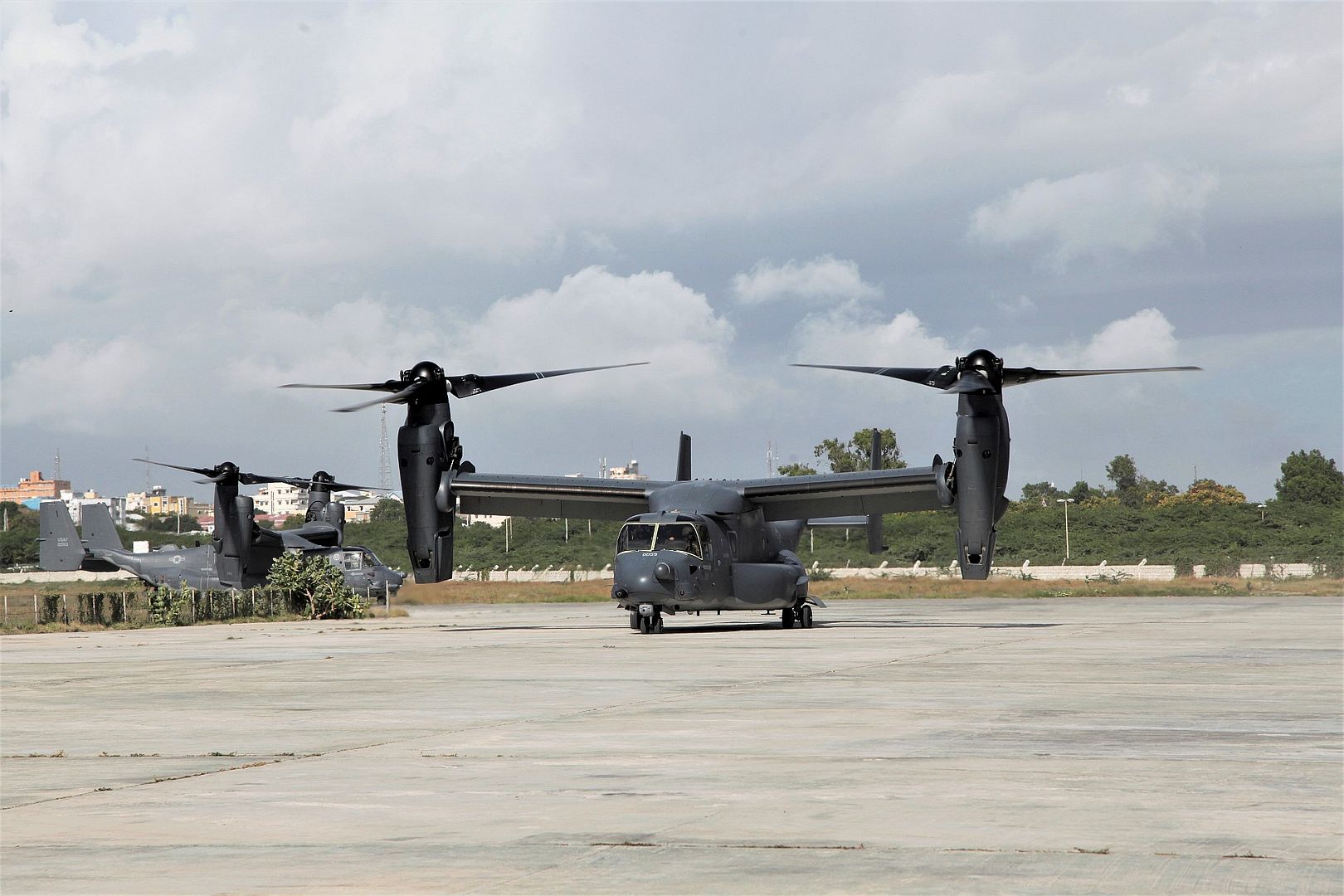
Members of the Japan Ground Self-Defense Force (JGSDF) conduct flight operations utilizing a Bell UH-1 on Combined Arms Training Center Camp Fuji, Shizuoka, Japan, Dec. 16, 2020. CATC Camp Fuji is a Marine Corps Pacific facility dedicated to the modernization of constructive live, virtual and dynamic training. It provides premiere support for the accomplishment of air ground and amphibious training for the Marine Corps, joint U.S. forces, and their allies. (U.S. Marine Corps photo by Lance Cpl. Alex Fairchild)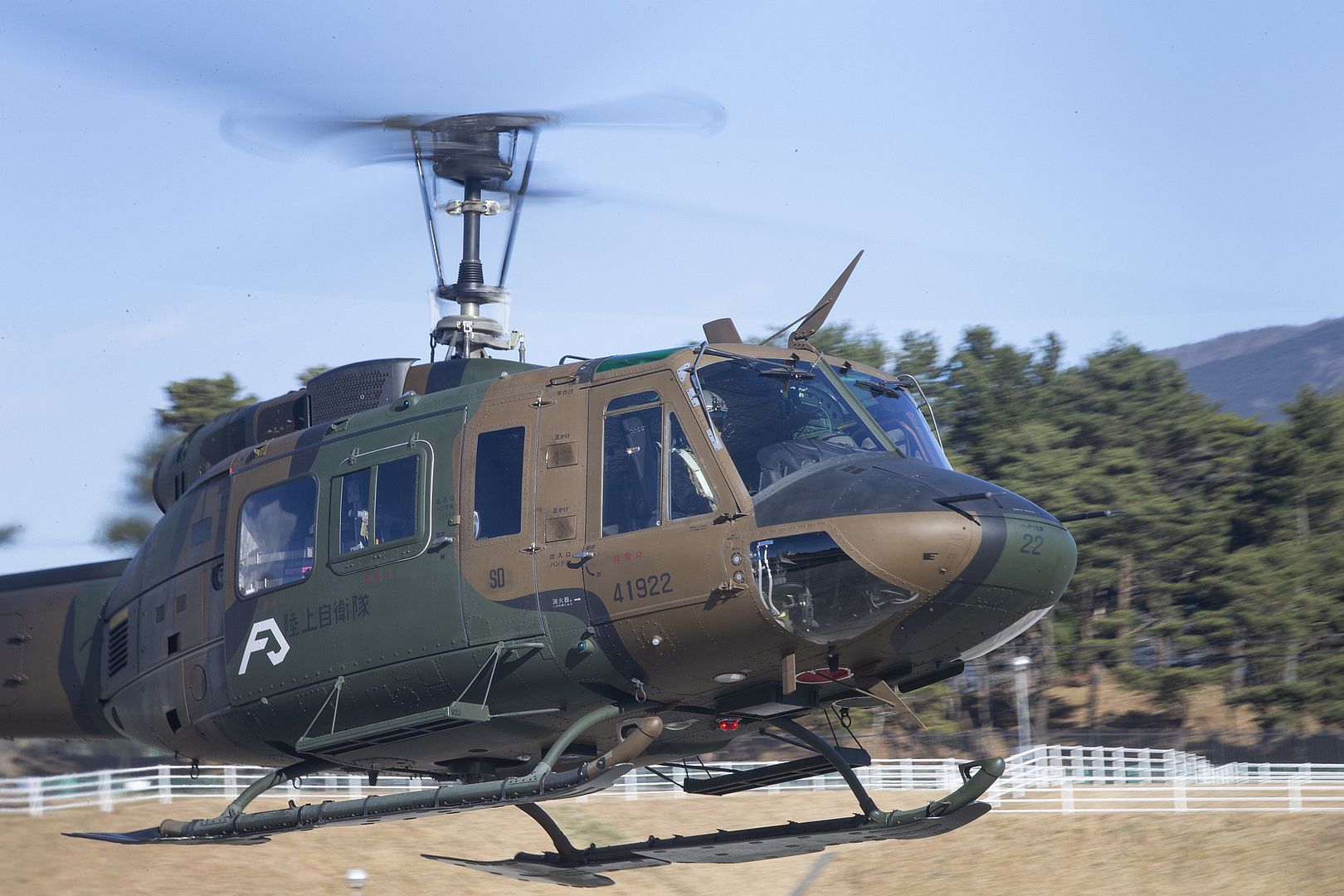
Okies with the 465th Air Refueling Squadron, refuel a B-1 Lancer from the 9th Bomb Squadron over Dyess Air Force Base, Texas, Dec. 17, 2020. Routine aerial refueling sorties allow the pilots and boom operators to receive necessary training and maintain proficiency. (U.S. Air Force photo by Senior Airman Mary Begy)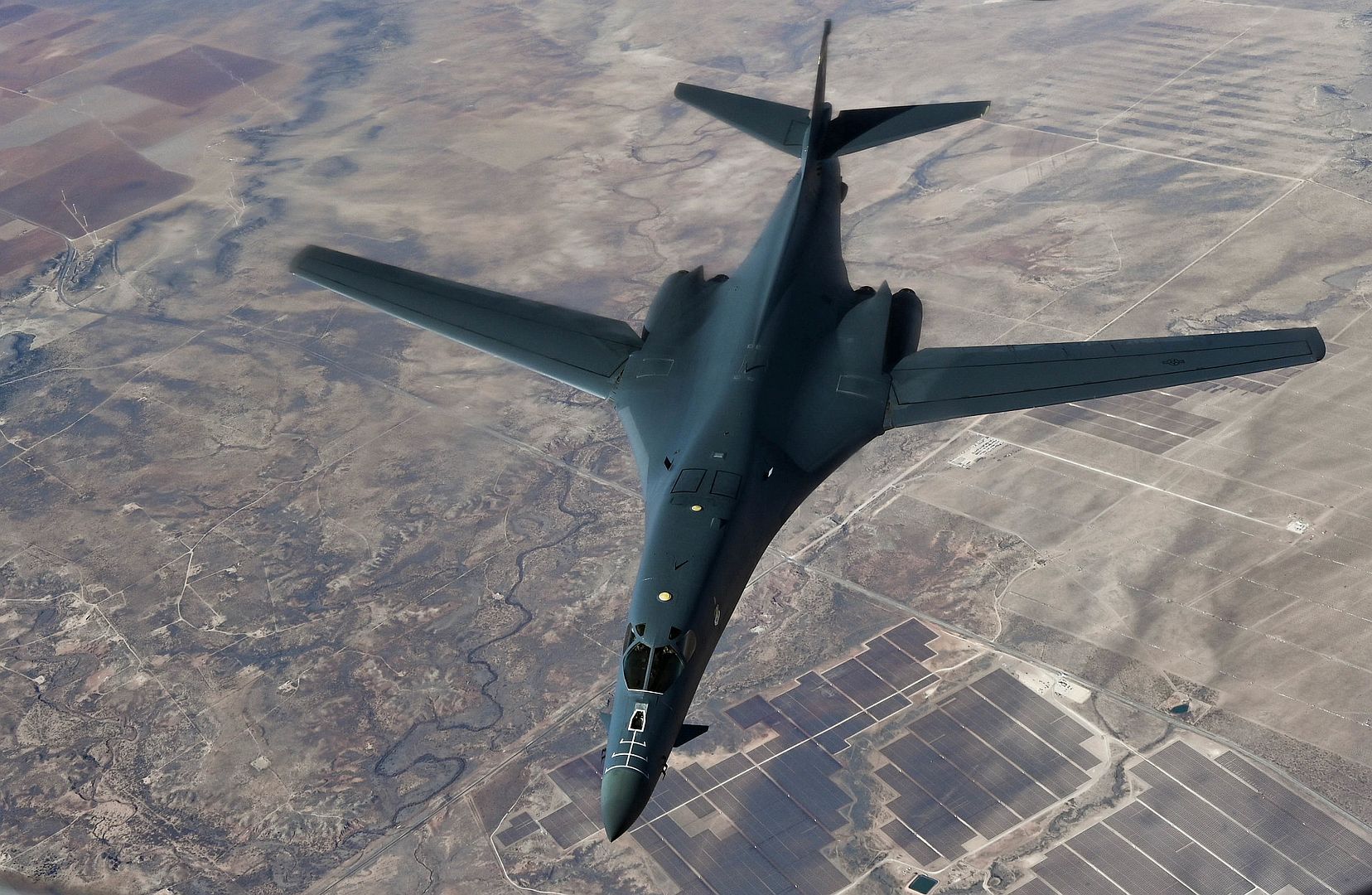
PACIFIC OCEAN (Dec. 17, 2020) Cmdr. Shannon Thompson, commanding officer of the ?Wolf Pack? of Electronic Attack Squadron (VAQ) 142, pilots an E/A-18G Growler as it launches from the flight deck of the aircraft carrier USS Theodore Roosevelt (CVN 71) during an airborne change of command ceremony for VAQ-142, Dec. 17, 2020. Theodore Roosevelt is underway conducting routine operations in the U.S. 3rd Fleet area of operations. (U.S. Navy photo by Mass Communication Specialist 3rd Class Erik Melgar)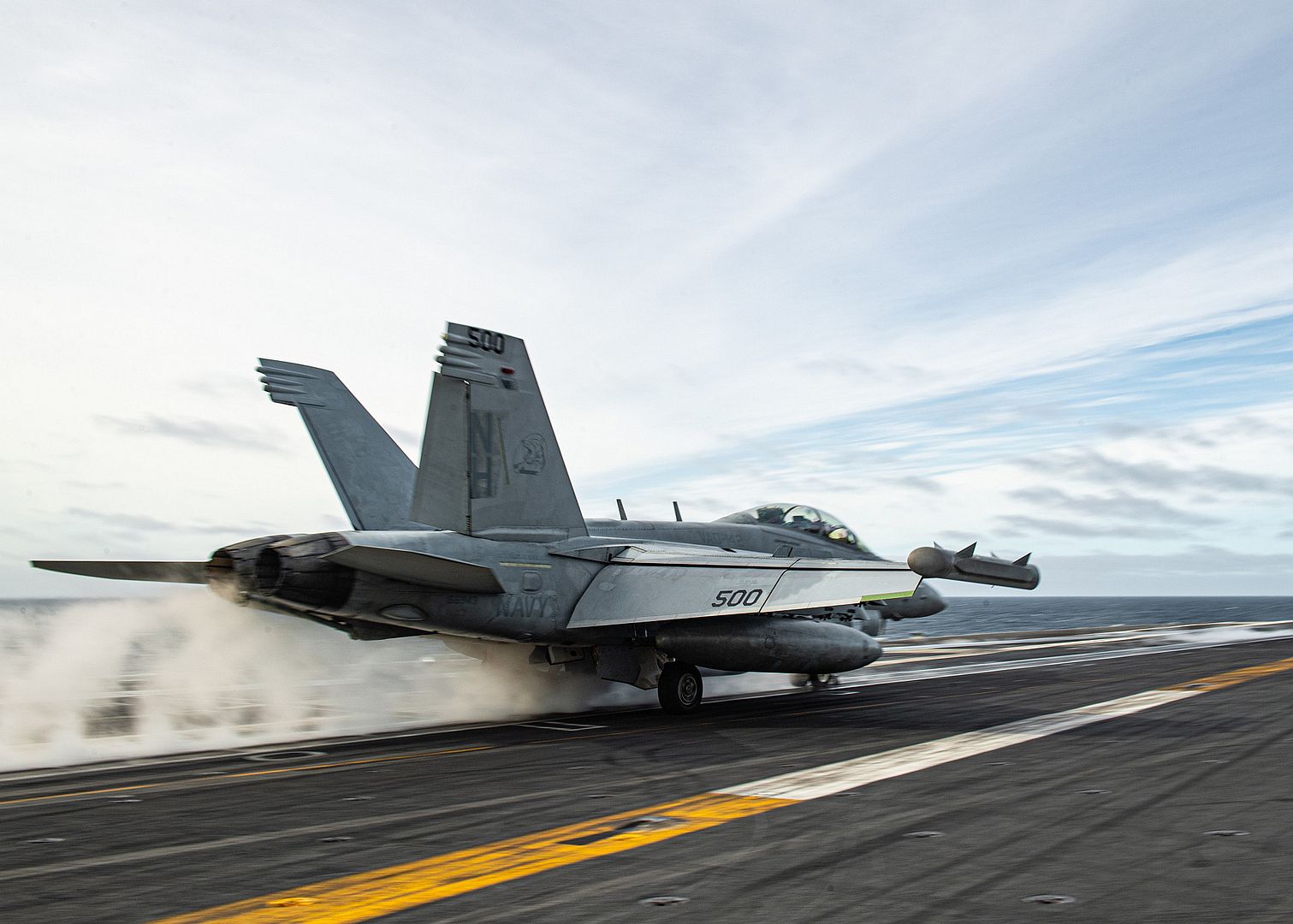
Toulouse, 18 December 2020 ? Air Greenland, the flag-carrier for Greenland, is the latest airline to order Airbus? next generation A330neo widebody aircraft.
The new A330-800 will replace the airline?s ageing Airbus A330-200ceo to secure operations linking the Arctic island with Denmark from end of 2022 onwards and beyond.
Air Greenland?s CEO?s Jacob Nitter S?rensen said: ?The A330neo is a fundamental part of Air Greenland?s fleet strategy. The new aircraft will, for years to come, offer travellers to and from Greenland a unique inflight experience while leaving the lowest carbon footprint possible. The A330neo is a perfect fit for the very challenging task of providing safe and efficient all year passenger, cargo and freight services to and from Greenland.?
?We?re pleased to see Air Greenland renew its confidence in the A330 Family and join the growing number of operators who are selecting the A330neo as a logical replacement for their ageing fleets,? said Christian Scherer, Airbus Chief Commercial Officer. ?To imagine the airline?s distinctive red livery set against the Arctic?s environment provides some Christmas cheer at the end of a year that has been harsh for our entire industry.?
The Airbus A330neo is a true new-generation aircraft, building on features popular for the A330ceo and developed for the latest technology A350. Equipped with a compelling Airspace cabin, the A330neo offers a unique passenger experience with the latest-generation, in-flight entertainment systems and connectivity. Powered by the latest Rolls-Royce Trent 7000 engines, and featuring a new wing with increased span and A350-inspired ?Sharklets?, the A330neo also provides an unprecedented level of efficiency ? with 25% lower fuel-burn per seat than previous-generation competitors. Thanks to its tailored mid-sized capacity and its excellent range versatility, the A330neo is considered the ideal aircraft to support operators in their post-COVID-19 recovery.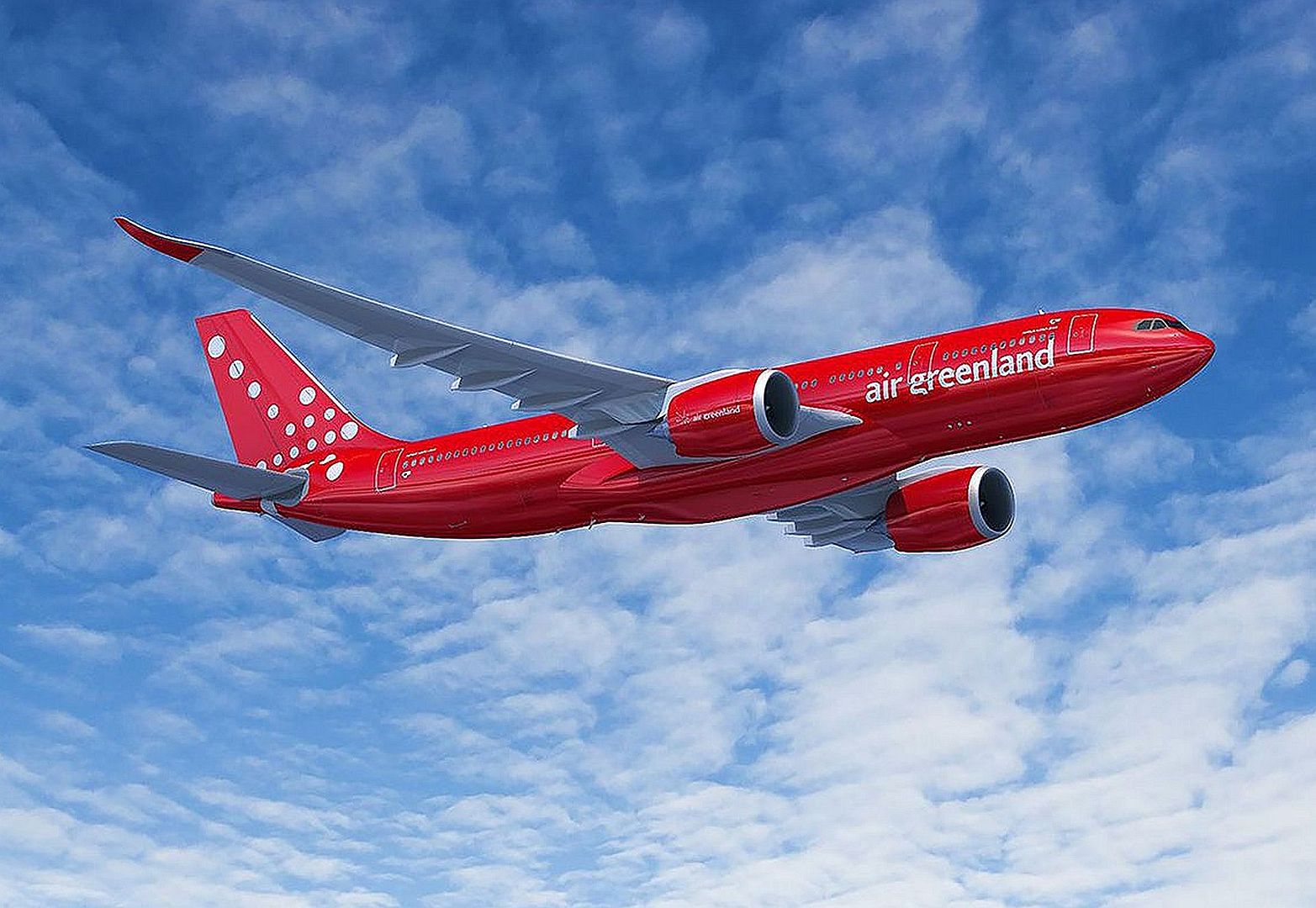
Donauw?rth, 18 December 2020 ? Airbus Helicopters and ?AMTC Air Rescue have signed a firm contract for the purchase of five H135s. The delivery of the first helicopter of this contract is scheduled for early 2022.
"Our demanding missions require the most modern helicopters available for enhancing our capability for critical missions, e.g. during the night. We have been operating the H135 for more than 20 years, and we look forward to benefiting from the advantages that the Helionix version brings,? said Reinhard Kraxner, CEO at ?AMTC Air Rescue. ?The reduced pilot workload combined with the 4-axis autopilot will be a valuable asset onboard for our crews that rescue patients often in challenging environments.?
"We thank ?AMTC Air Rescue for their continued trust in Airbus Helicopters and particularly in the H135,? said Bruno Even, CEO of Airbus Helicopters. "The H135 continues to demonstrate that it is the reference in air medical rescue all over the world.?
?AMTC Air Rescue operates 28 H135 helicopters from 17 permanent bases and 4 additional bases during the wintertime in Austria. Last year, the operator performed more than 20,000 missions, with on average 52 missions per day.
The H135 is the helicopter of reference for helicopter emergency medical service operators worldwide. It combines a wide, unobstructed cabin with excellent performance, range and payload capacity ? along with low sound levels. The oversized sliding side doors and rear clamshell doors enable fast loading/unloading of patients, with additional safety during ground operations provided by Airbus? signature shrouded Fenestron tail rotor.
On top of the 4-axis autopilot, Helionix offers an innovative cockpit layout which helps to increase situational awareness. Designed with three large electronic displays on the H135, the cockpit is Night Vision Goggle compatible and includes a First Limit Indicator which highlights the appropriate engine instrument data for the pilot in one indicator.
To date, more than 1,400 helicopters of the H135 family have been delivered around the globe with more than 5,6 million flight hours.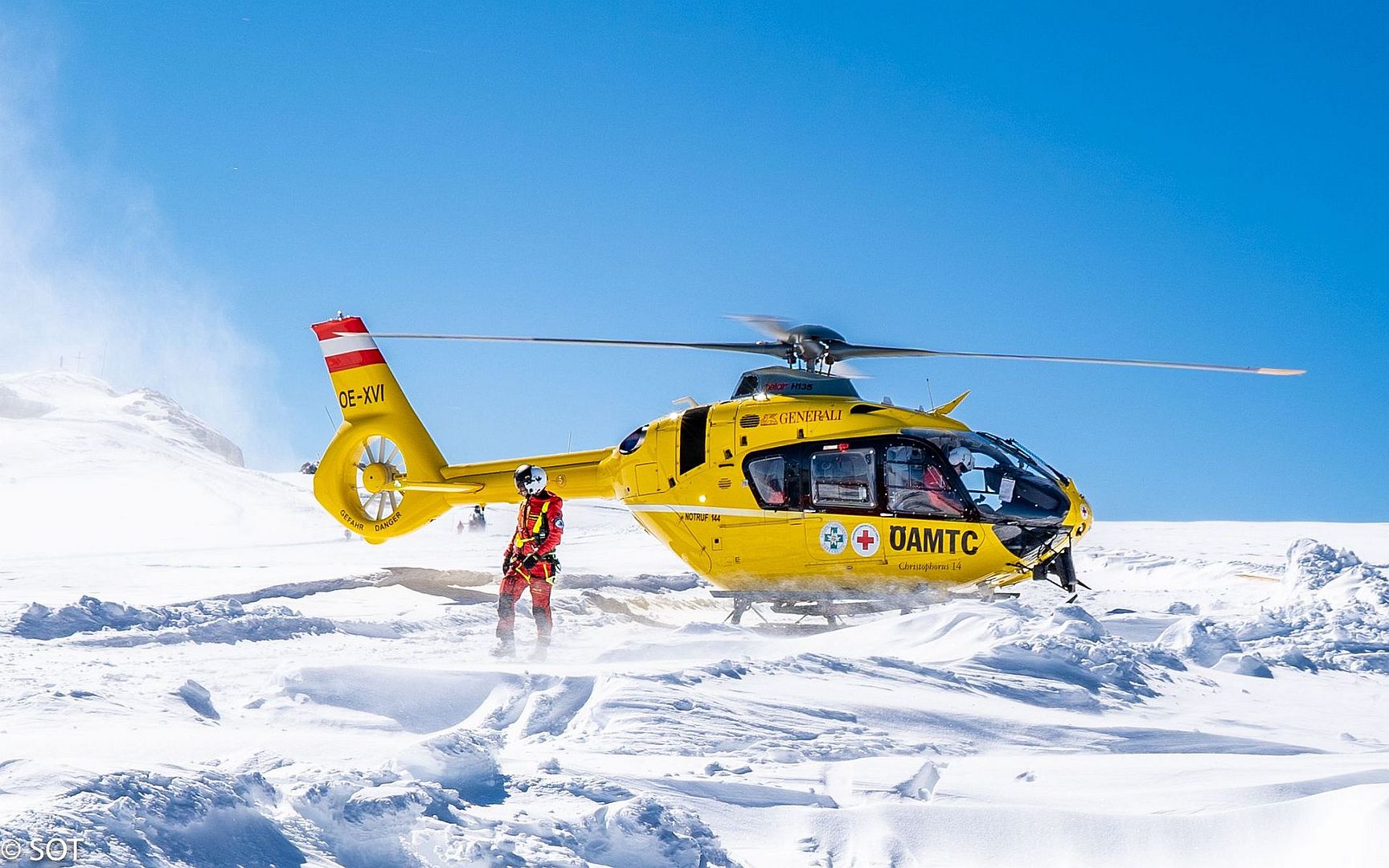
Marignane, 18 December 2020 ? Airbus Helicopters and its historical partner H?li-Union have signed a contract for the purchase of two multi-mission H160s to address a wide range of operations.
?We are excited to be one of the first customers to onboard the H160 which will expand our fleet of 40 helicopters. We believe this program will have a great future in both civil and defence sectors and are delighted to be an actor of its growth? said Patrick Molis, H?li-Union CEO
?We are proud that H?li-Union, with its vast experience across the globe, especially in offshore transportation, has selected the H160 to bolster its fleet of Airbus helicopters,? said Bruno Even, Airbus Helicopters CEO. ?The H160 not only raises the bar in terms of safety, thanks to its numerous pilot assistance features, but its reduced fuel consumption brings much needed operational competitiveness, as well as a lower carbon footprint, to the market,? he added.
With 68 patents, the H160 integrates Airbus Helicopters? latest technological innovations aimed at increasing safety and comfort. The Blue Edge blades and the largest shrouded Fenestron tail rotor ensure low sounds levels and deliver high end performance at the same time. The aircraft?s compact size will be an added advantage to landing on oil platforms. Designed as a multi-mission helicopter aimed at addressing all major missions from offshore transportation, emergency medical services, search and rescue as well as other public service missions, the inherent flexibility of the H160 will suit all kinds of operations around the world.
H?li-Union currently operates a fleet of approximately 20 Airbus helicopters from the Dauphin, the H225, and the H145 families and maintains a wide range of Airbus Helicopters products for third parties such as civil or defence operators.
H?li-Union is a French operator and service provider with 60 years of experience in technical and logistical support to various civil and military organizations around the world. They are active in several markets: support of civil and state aircraft activities in France and abroad, operation of helicopters in various countries, as well as training of pilots and technicians. This experience allows H?li-Union to offer its customers a turnkey solution for the acquisition of new air assets and the deployment of air operations. H?li-Union is therefore positioned as a global partner, offering a wide range of services in order to support its customers in the implementation of air services.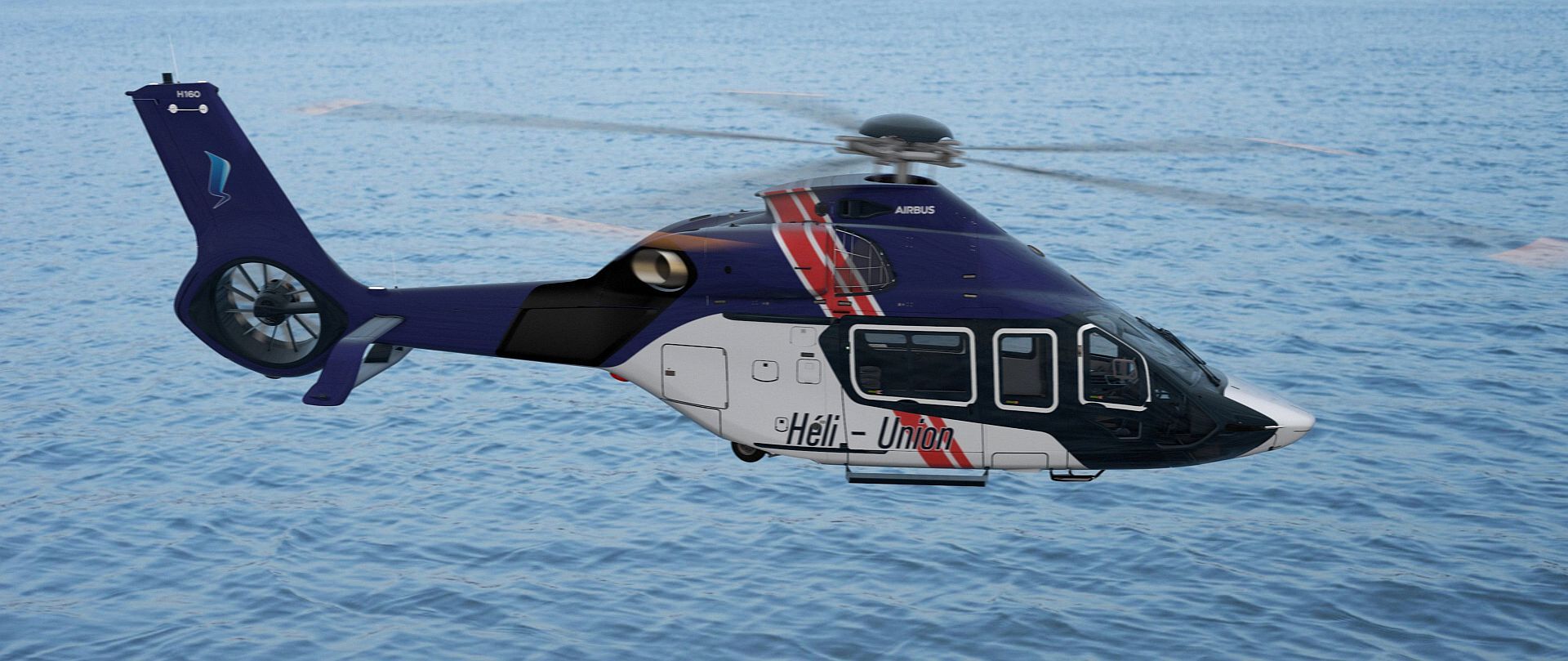
WICHITA, Kan. (Dec. 17, 2020) ? Textron Aviation today announced new aircraft flight data monitoring (FDM) service options for Cessna Citation business jets equipped with Aircraft Recording System II (AReS II). Through Textron Aviation?s proprietary LinxUs data reporting ecosystem, Cessna Citation customers can now choose to transfer their flight data to one of two customer-selected Flight Operational Quality Assurance (FOQA) providers, Flight Data Services L3Harris Technologies? Flight Data Connect service or Safran Electronics & Defense?s Cassiop?e Flight Data Monitoring solution.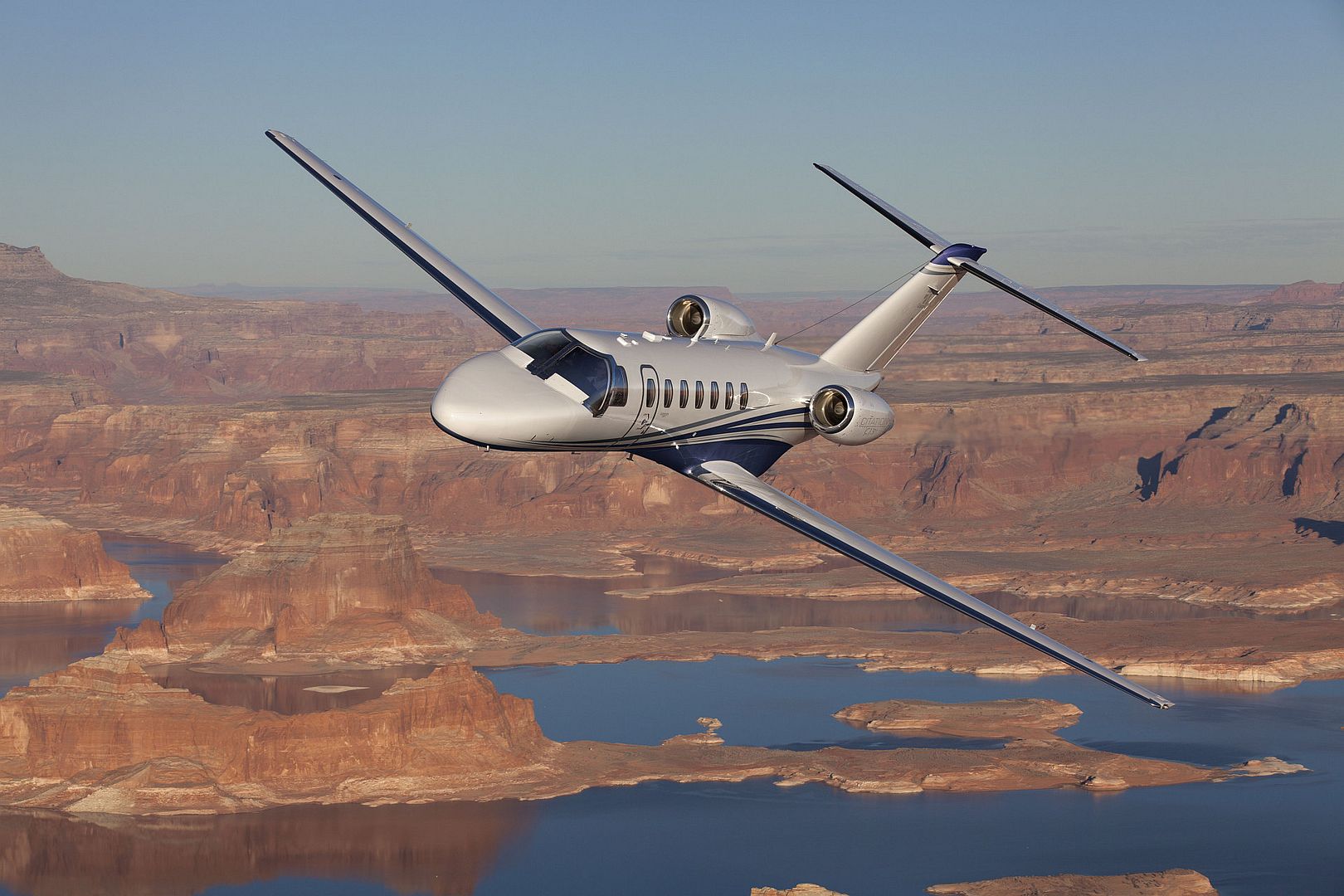
Beechcraft, Cessna and Hawker customers receive factory-direct support by Textron Aviation, a Textron Inc. (NYSE: TXT) company, through a global network of service and part centers, mobile service units and 24/7 1CALL AOG support.
?At Textron Aviation, we are always looking for ways to enhance the aircraft ownership experience,? said Brian Rohloff, senior vice president, Customer Support. ?Our innovative LinxUs FDM program enables customers to improve their operational efficiency, training, and reliability by transferring their flight data to one of two customer-selected data management providers.?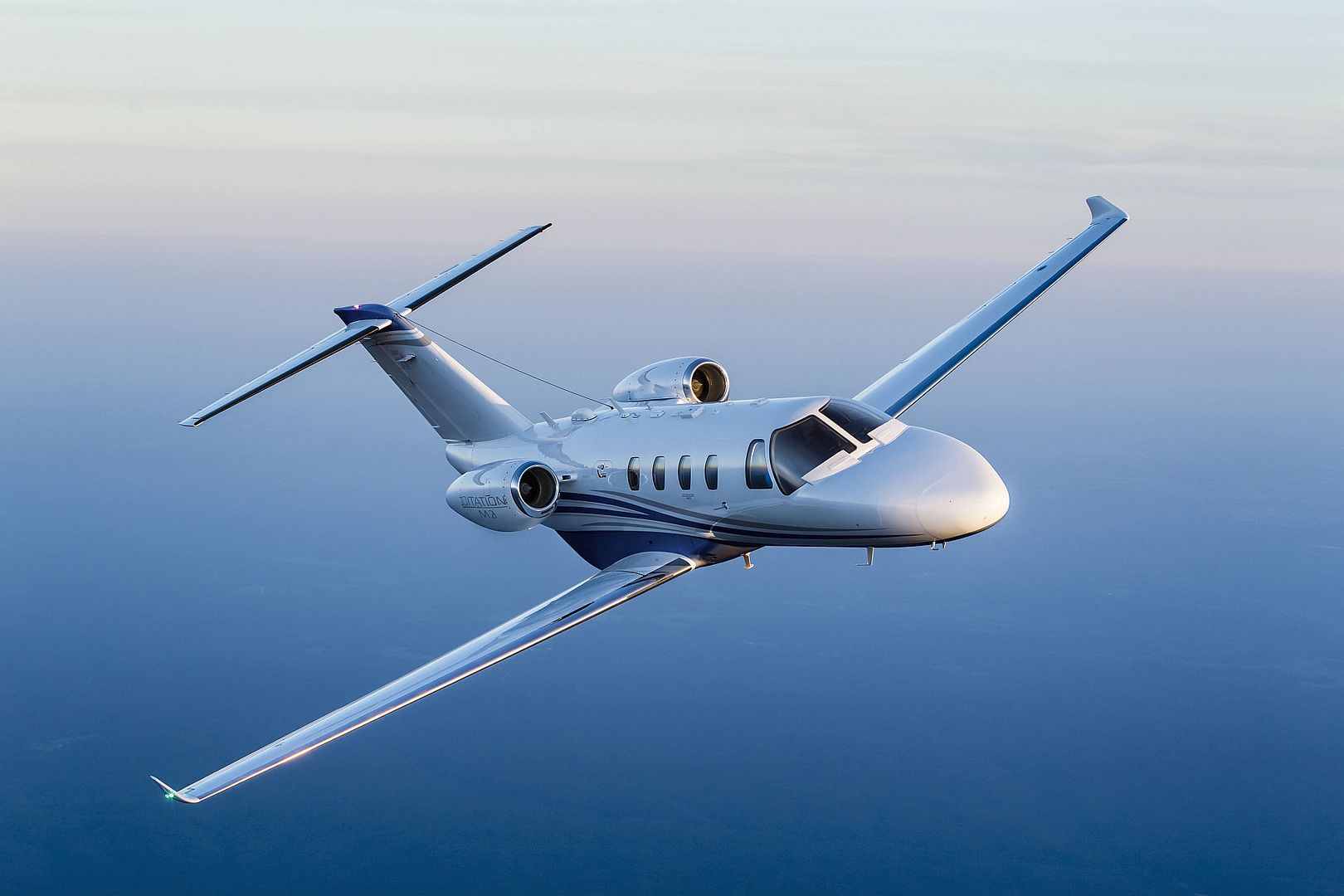
Customers have the flexibility to select a service provider that best fits their needs, ensuring they receive the most comprehensive flight data monitoring capabilities for their aircraft. The wireless transfer of data to the provider of choice requires no additional equipment, making it a simple and seamless process.
The first Citation to benefit from this advanced service offering is the Cessna Citation CJ4 business jet with future expansion of the program to include additional AReS II-equipped Cessna aircraft. Additional aftermarket flight data monitoring solutions are also in-work with solutions anticipated to roll out in 2021.
LinxUs FDM further expands the LinxUs and LinxUs Air brands providing customers with a suite of real-time solutions. LinxUs fault notification and diagnostics enable downtime reduction, returning the aircraft to service faster than ever. Textron Aviation?s 1CALL center, along with service designees receive automated notifications for potential AOG events. LinxUs identifies the indicated cause of the fault, enabling maintenance to be scheduled before the aircraft lands. This allows our service professionals to pre-position the resources necessary to respond quickly.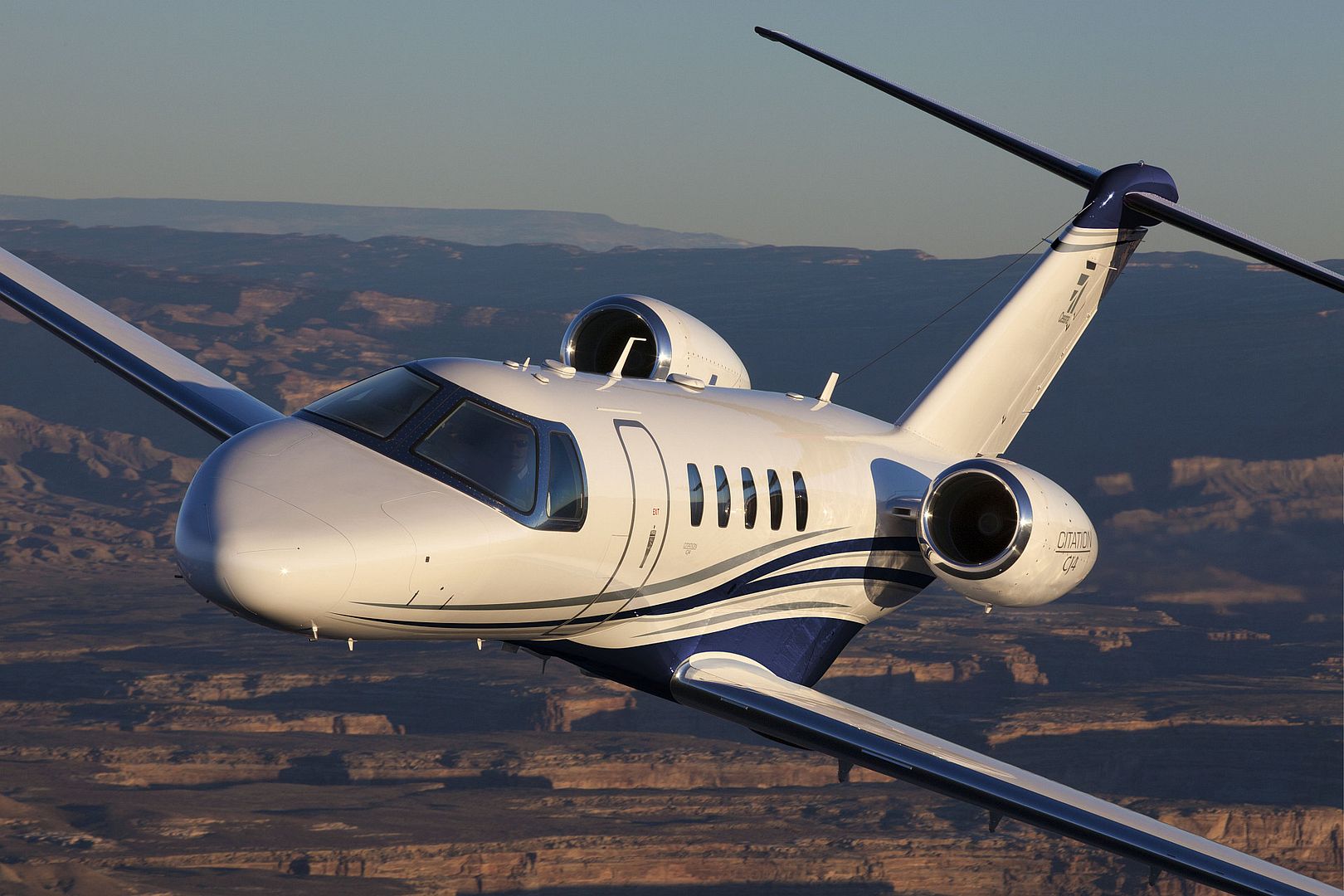
About Textron Aviation Service
Textron Aviation offers factory-direct service and support throughout the entire ownership experience. Through a global network staffed with nearly 3,000 employees, customers have direct access to a team of expert service representatives offering maintenance, inspections, parts, repairs, avionic upgrades, equipment installations, refurbishments and other specialized services. Textron Aviation manages a fleet of nearly 70 mobile service units (MSU), Go Teams stationed across the world that can be mobilized to respond to maintenance events by contacting 1CALL and a team of AOG specialists providing prioritized service and support during unscheduled maintenance events.
-
 Main AdminRAF LOSSIEMOUTH, Scotland (Dec. 19, 2020) Cmdr. Joseph Snyder, executive officer of the "Grey Knights" of Patrol Squadron (VP) 46, left, and Lt. Cmdr. Clayton Hunt start the engines of a P-8A maritime patrol aircraft while Aviation Electronics Technician 3rd Class Laquan Phillips performs the duties of a plane captain, Dec. 19, 2020. VP-46 is currently forward deployed to the U.S. 6th Fleet area of operations and is assigned to Commander, Task Force 67, responsible for tactical control of deployed maritime patrol and reconnaissance squadrons throughout Europe and Africa. U.S. Sixth Fleet, headquartered in Naples, Italy, conducts a full spectrum of joint and naval operations, often in concert with allied and interagency partners, in order to advance U.S. national security interests and stability in Europe and Africa. (U.S. Navy photo by Mass Communication Specialist 2nd Class Austin Ingram/ Released)
Main AdminRAF LOSSIEMOUTH, Scotland (Dec. 19, 2020) Cmdr. Joseph Snyder, executive officer of the "Grey Knights" of Patrol Squadron (VP) 46, left, and Lt. Cmdr. Clayton Hunt start the engines of a P-8A maritime patrol aircraft while Aviation Electronics Technician 3rd Class Laquan Phillips performs the duties of a plane captain, Dec. 19, 2020. VP-46 is currently forward deployed to the U.S. 6th Fleet area of operations and is assigned to Commander, Task Force 67, responsible for tactical control of deployed maritime patrol and reconnaissance squadrons throughout Europe and Africa. U.S. Sixth Fleet, headquartered in Naples, Italy, conducts a full spectrum of joint and naval operations, often in concert with allied and interagency partners, in order to advance U.S. national security interests and stability in Europe and Africa. (U.S. Navy photo by Mass Communication Specialist 2nd Class Austin Ingram/ Released)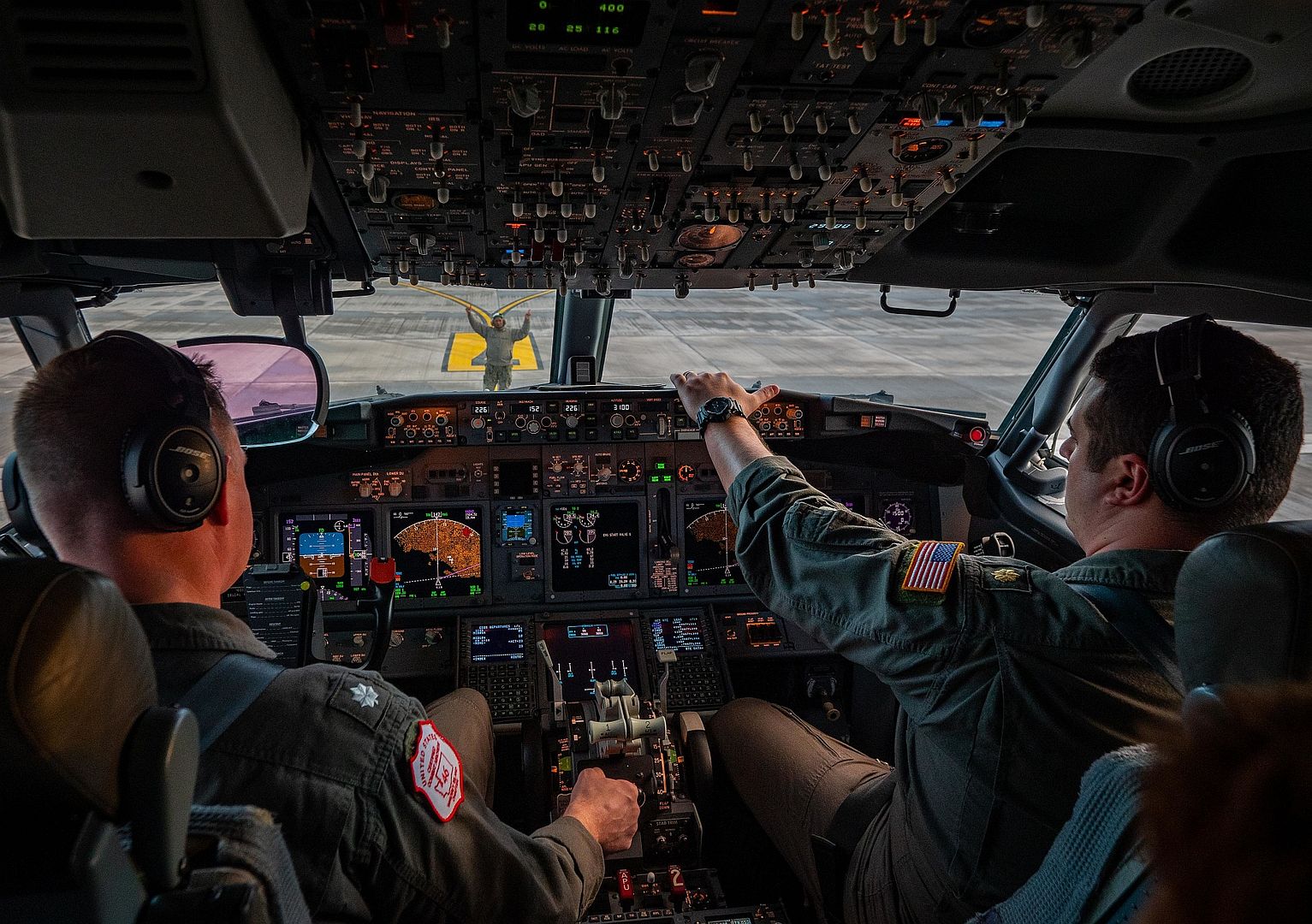
12.15.2020.
An F-15E from the 422 Test and Evaluation Squadron prior to taking off for a bomb hit assessment test. (Courtesy photo)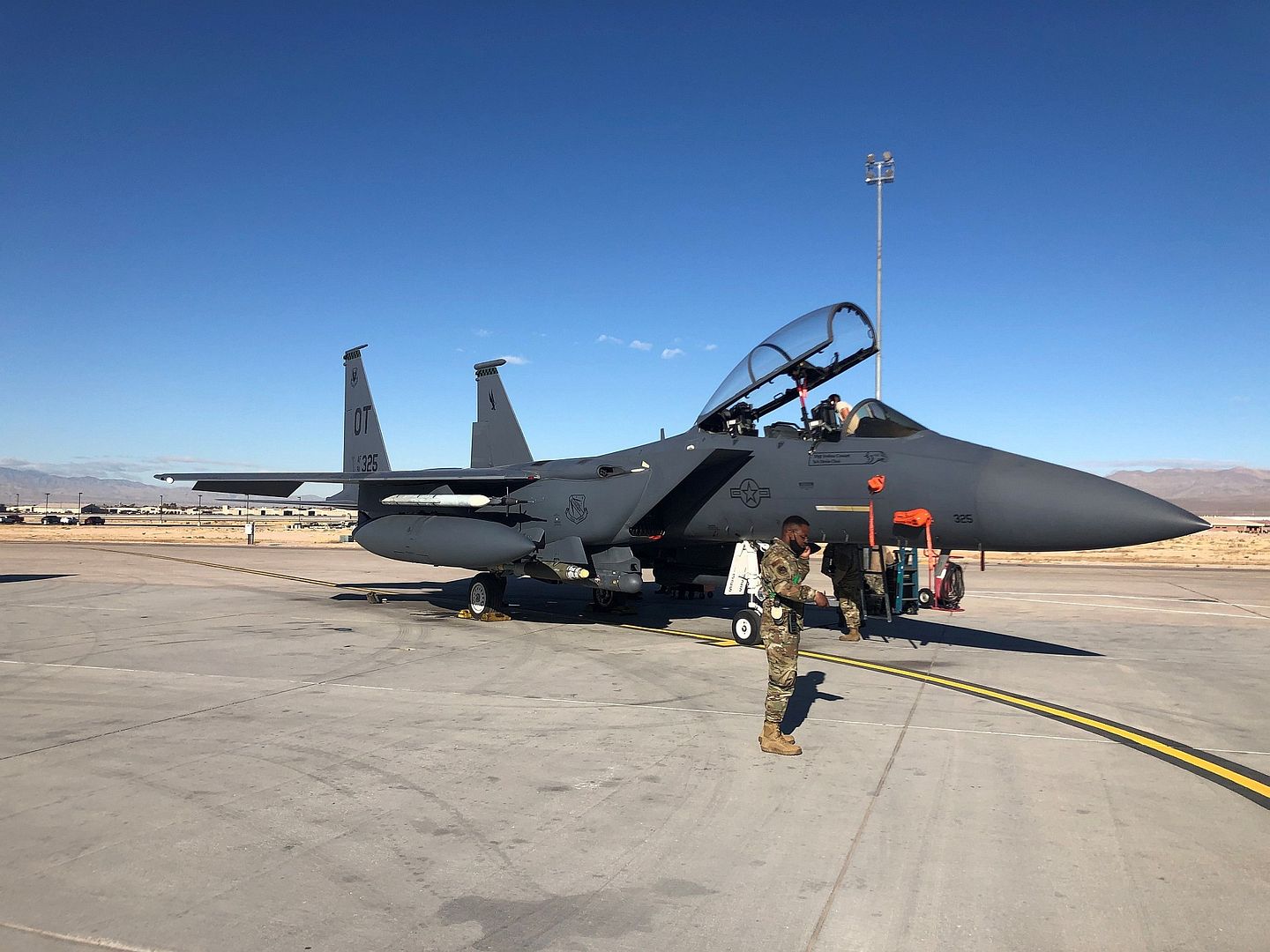
A U.S. Air Force Airman assigned to the 354th Maintenance Group inspects a U.S. Air Force F-16 Fighting Falcon intake for ice build up prior to launch for an elephant walk on Eielson Air Force Base, Alaska, Dec. 18, 2020. More than 30 aircraft were quickly generated and prepared to launch in an effort demonstrating the readiness capabilities of the 354th Fighter Wing and the 168th Wing. (U.S. Air Force photo by Senior Airman Beaux Hebert)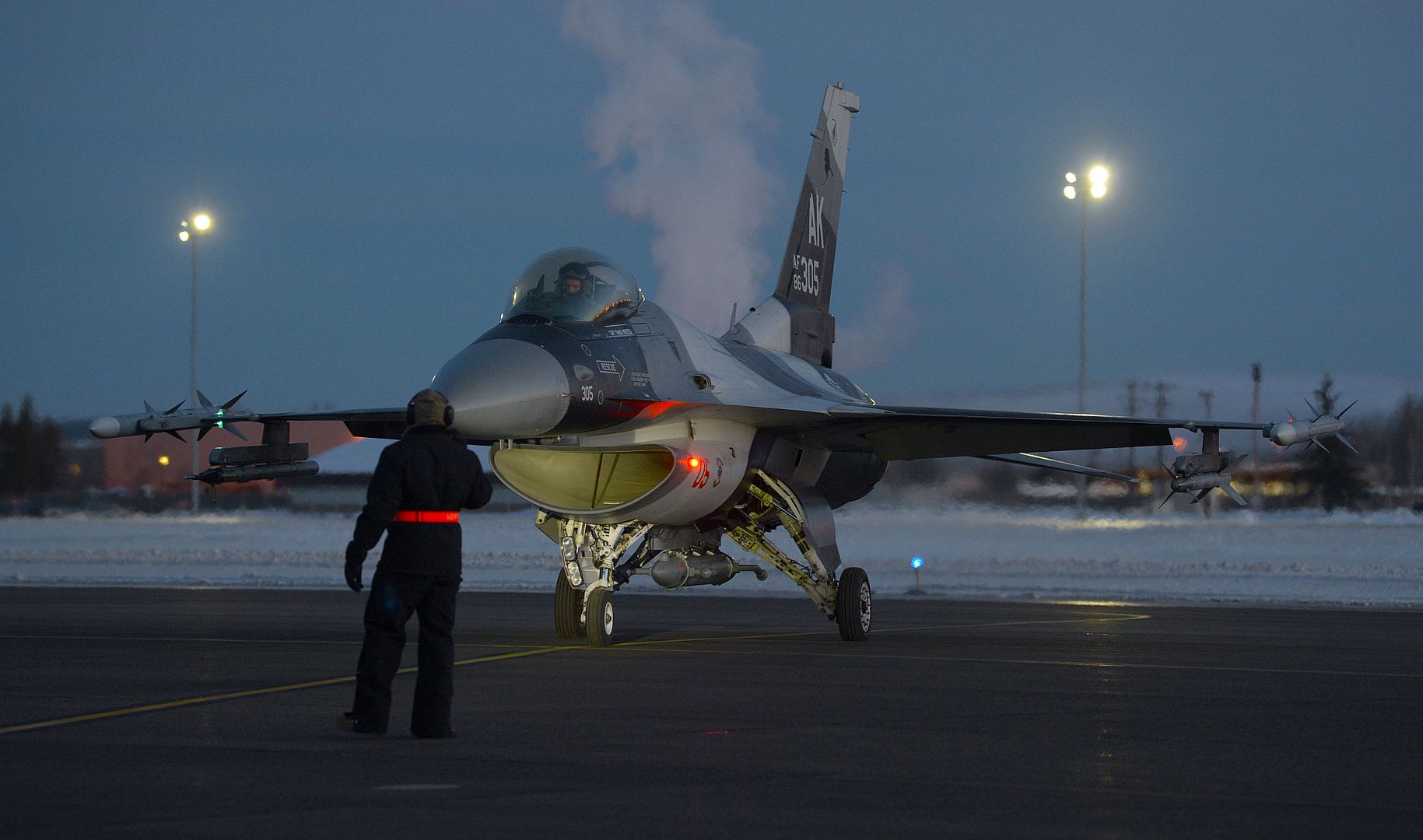
A U.S. Air Force F-16 Fighting Falcon assigned to the 354th Fighter Wing flies over Eielson Air Force Base, Alaska, Dec. 18, 2020. More than two dozen fifth and fourth generation fighter aircraft and two KC-135 Stratotankers participated in the elephant walk demonstrating the 354th Fighter Wing and 168th Wing?s ability to rapidly mobilize aircraft in the harsh arctic conditions. (U.S. Air Force photo by Staff Sgt. Kaylee Dubois)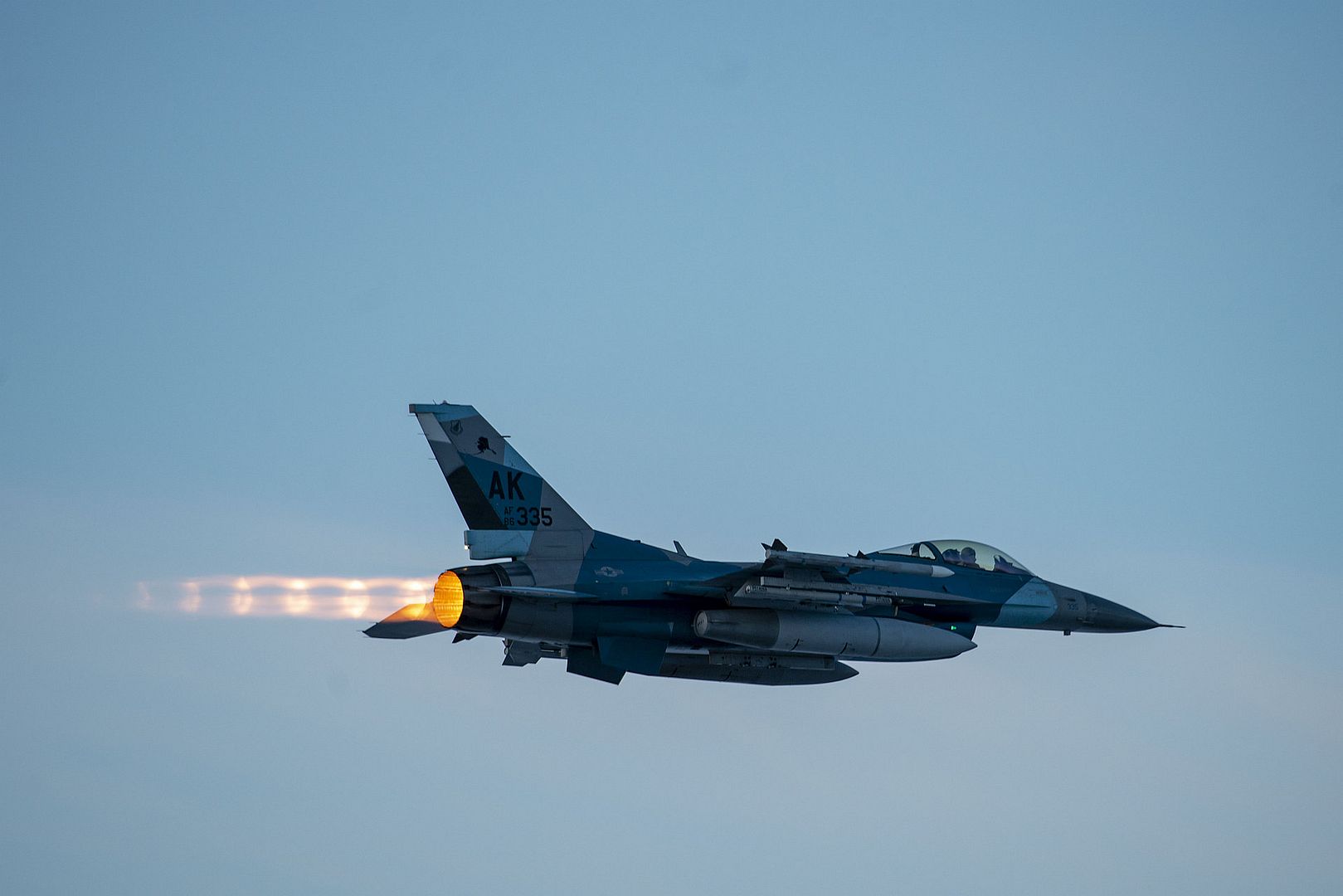
A U.S. Air Force F-35A Lightning II assigned to the 354th Fighter Wing taxis on the flightline at Eielson Air Force Base, Alaska, Dec. 18, 2020. A total of 32 aircraft were generated showcasing the wings? ability to integrate and seamlessly carry out the mission in harsh arctic conditions. (U.S. Air Force photo by Tech. Sgt. Jerilyn Quitanilla)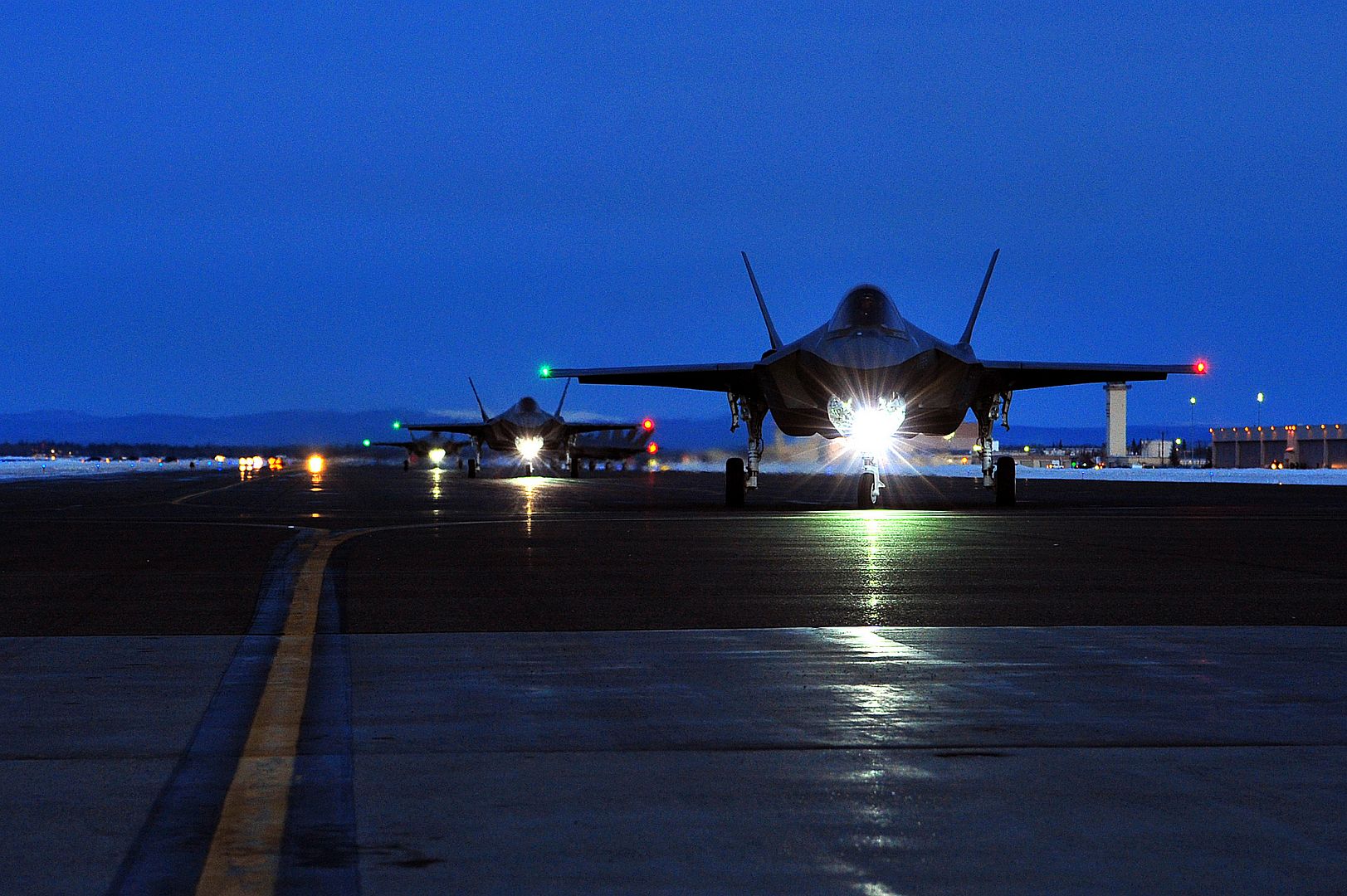
SHAW AIR FORCE BASE, S.C. -- 20th Fighter Wing Airmen recently created and executed a new training opportunity to enhance readiness at Shaw Air Force Base.
Known as a Super Front, this initiative pairs two fighter generation squadrons' F-16s together to increase the number of jets in the air at one time. This allows pilots, maintainers, logisticians and airfield operators from the same wing to employ large packages of aircraft during routine operations, which is a unique feat for a single wing.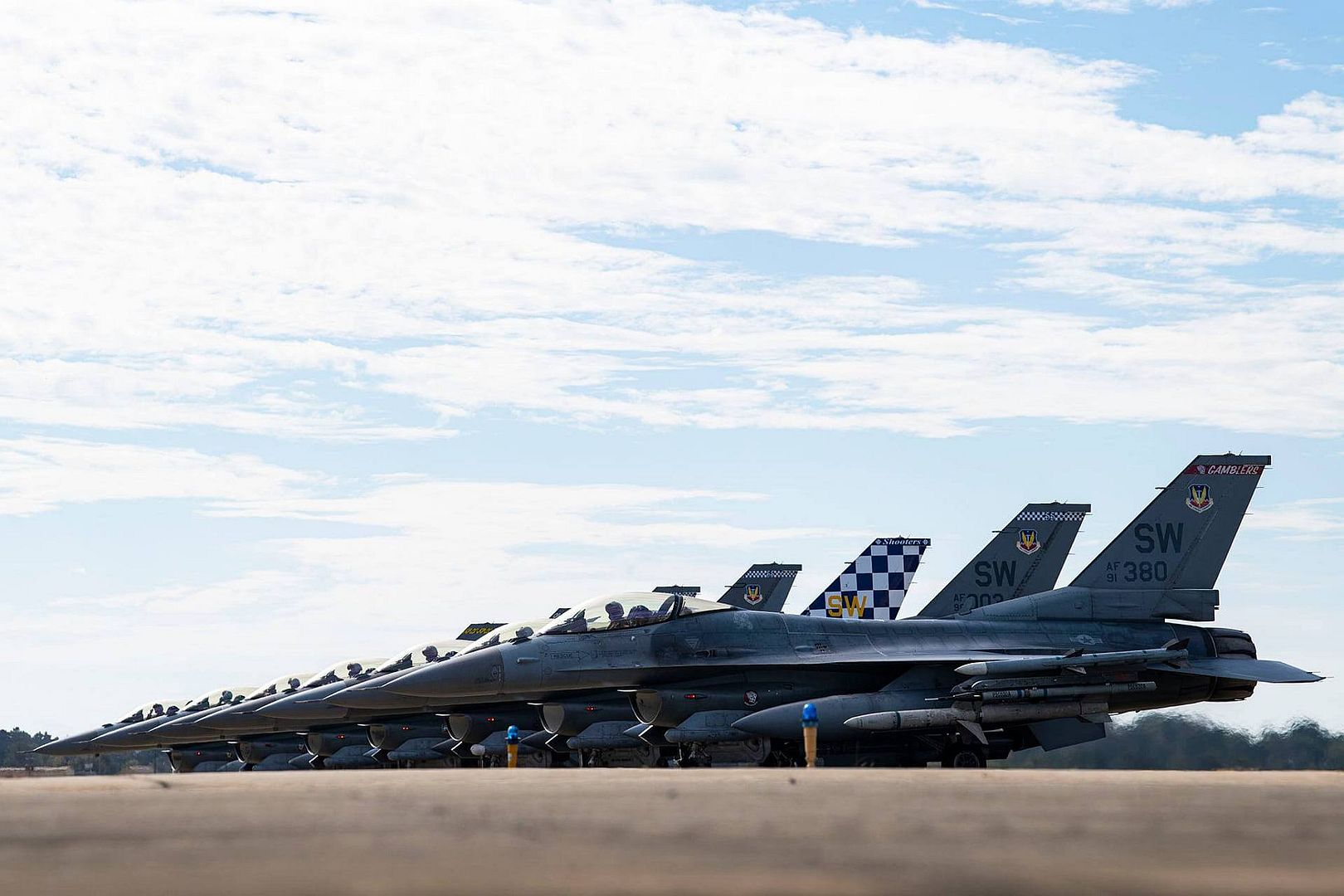
?A Super Front is when one of our fighter squadrons uses both the 55th Fighter Squadron?s aircraft and the 79th Fighter Squadron?s aircraft in the same flying period,? said Capt. Andrew Guldin, 55th FS pilot. ?Normally, we would fly at different times to deconflict using the same airspace; however, by both squadron?s jets going up at the same time, a lot more jets are airborne and we fly more complicated air-to-air and air-to-ground missions.?
Pilots typically train on a variety of mission sets to include offensive counter-air and defensive counter-air, which requires ?blue air? pilots, simulated U.S., coalition and regional partners, to fly against ?red air? pilots, who are the simulated adversary. Having more jets up in the air at the same time enhances difficulty by allowing for more simulated adversaries, as well as requires more complex mission planning and multiple formations working together.
?We are enhancing the quality of our training and aligning it in accordance with our defense doctrine and commander in chief's intent,? said Capt. Parker Herrington, 79th FS pilot. ?Our adversaries' proficiency and operations are advancing and therefore ours must too.?
Creating more realistic training scenarios that pilots may see in a great power competition, Super Fronts also allow for the creation of a large force exercise. Generally requiring multiple partners and wings, large force exercises are an important training opportunity to validate a team?s ability to integrate, test their capabilities and maximize their performance.
?To compete, deter and win, we have to rethink how we can use our daily activities to train for the future,? said Guldin ?This idea, and now reality, provides significant training and directly gets after how Airmen are empowered to innovate and make quality changes at all levels.?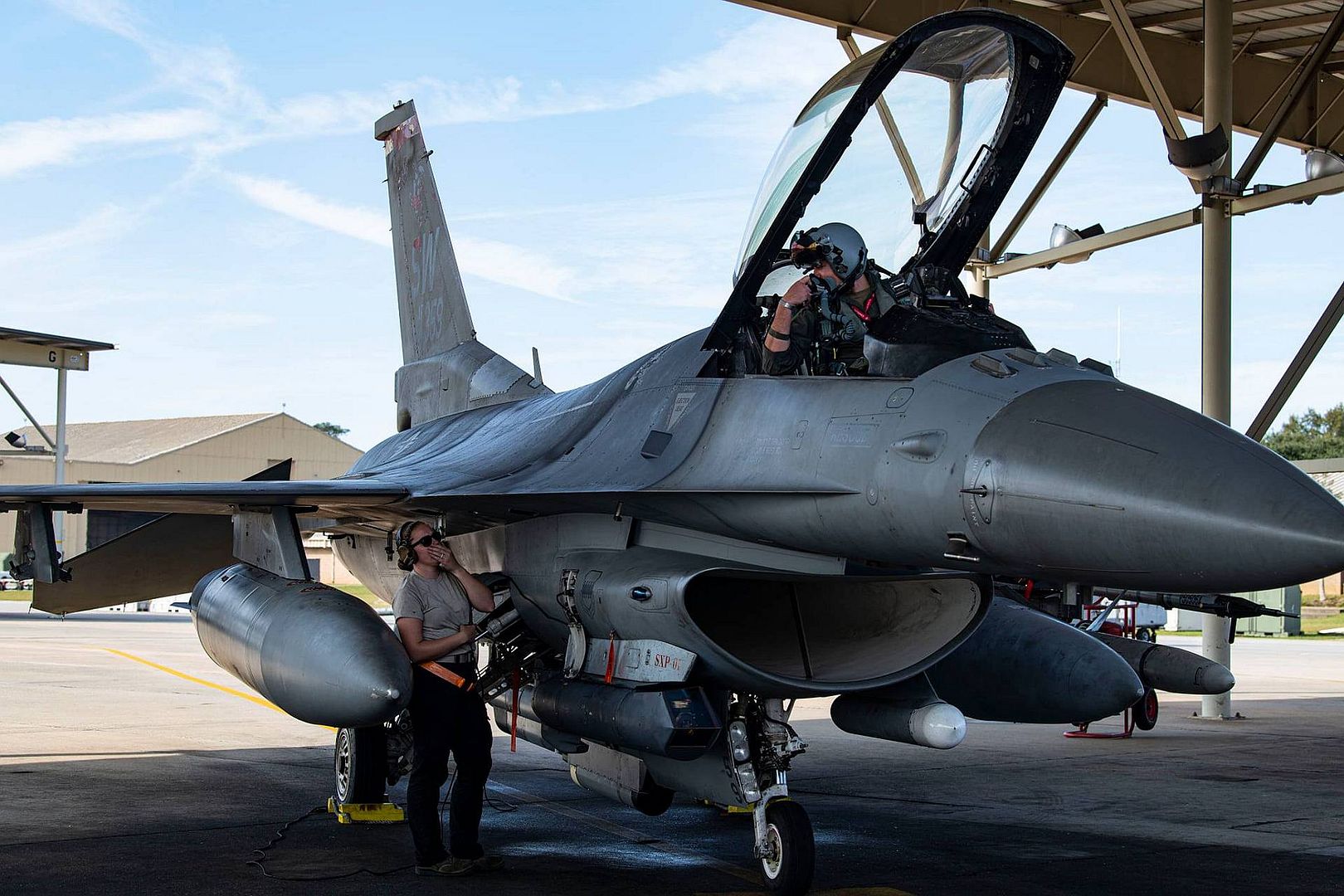
SAN DIEGO ? Dec. 21, 2020 ? Northrop Grumman Corporation (NYSE: NOC) successfully completed the first flight for the Global Hawk Ground Station Modernization Program (GSMP) at Edwards Air Force Base, Calif. earlier this month. Leveraging agile development and an open architecture design, the GSMP team transformed both the human-machine interface and the underlying software, paving the way for interoperability with other Air Force systems, enhanced responsiveness to ad hoc tasking, and lower impact updates in the future.
The modernized Global Hawk ground stations will revolutionize the operator experience with new cockpit displays, the ability to fly all Global Hawk variants without software or configuration changes, simpler maintenance interfaces, and improved situational awareness and environmental conditions for pilots and sensor operators.
?I am very excited about the new capability the Ground Segment Modernization Program will deliver to the Warfighter.? said Colonel William Collins, Global Hawk System Program Director, Air Force Life Cycle Management Center. ?Not only will it allow the operators to conduct their missions from an enhanced, building-based control element, it will deliver critical Diminished Manufacturing Sources solutions and system security enhancements that will ensure this vital capability continues to be secure from cyber threats.?
?Global Hawk is a critical asset that delivers vital data to U.S. forces and allies 24/7/365,? said Leslie Smith, vice president Global Hawk, Northrop Grumman. ?New, modern ground stations for Global Hawk will significantly improve the system and allow operators to more efficiently deliver timely ISR data to warfighters and connect the joint force through its global communications node mission.?
Northrop Grumman?s family of autonomous HALE systems, including Global Hawk, are a critical component of networked, global ISR collection. Today, Global Hawk operates on the edge of the battlespace, collecting ISR data that enables decision makers to act with the right information at the right time. In the future, Global Hawk is uniquely positioned for additional missions that connect the joint force, including persistent high capacity backbone, pseudo-satellite communications coverage, and joint all-domain command and control.
Northrop Grumman solves the toughest problems in space, aeronautics, defense and cyberspace to meet the ever evolving needs of our customers worldwide. Our 90,000 employees define possible every day using science, technology and engineering to create and deliver advanced systems, products and services.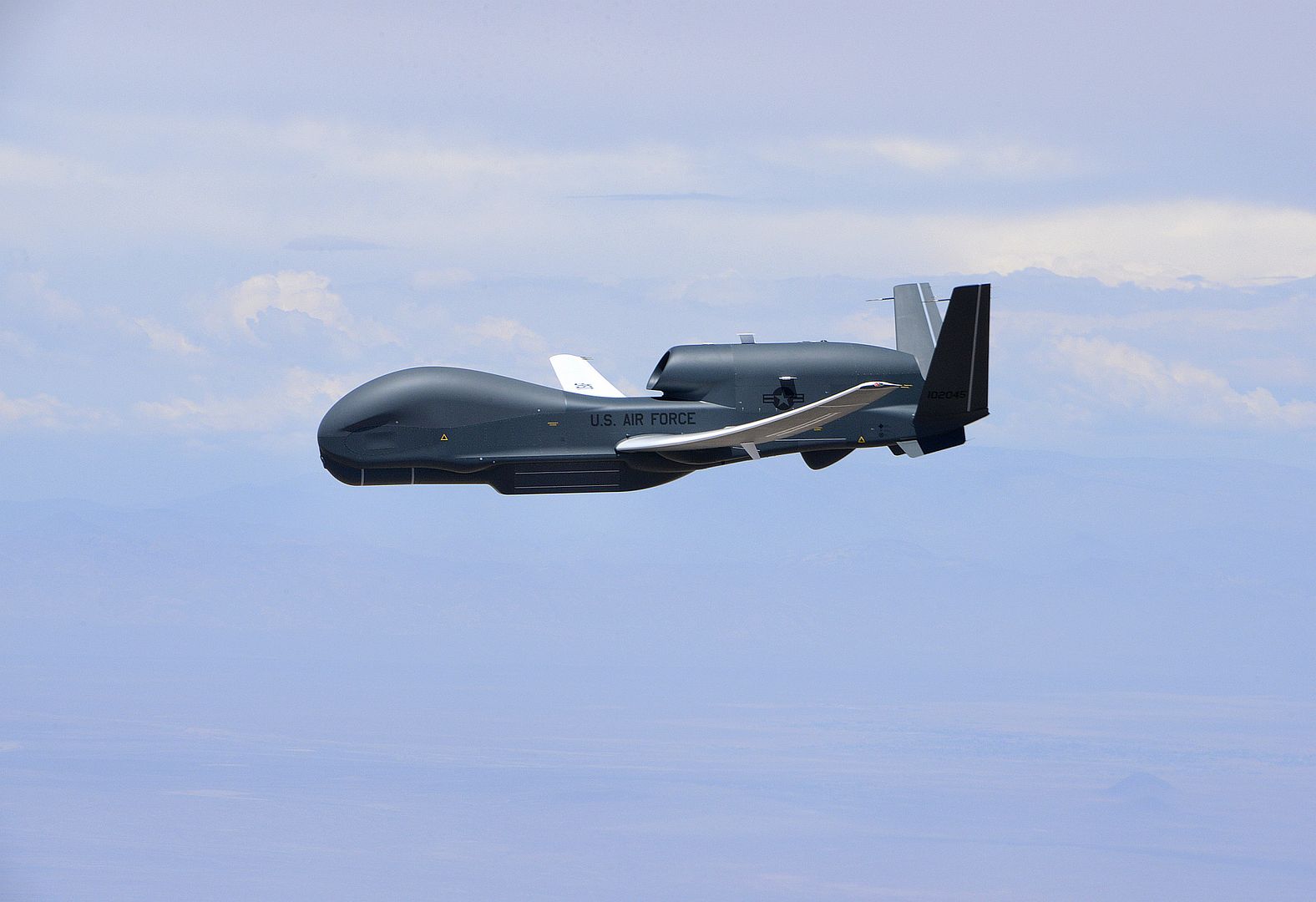
PATUXENT RIVER, Md., Dec. 21, 2020 ? Boeing [NYSE: BA] and the U.S. Navy proved recently that the F/A-18 Super Hornet can operate from a ?ski jump? ramp, demonstrating the aircraft?s suitability for India?s aircraft carriers.
The demonstrations, held at Naval Air Station Patuxent River, Maryland, showed that the Super Hornet would do well with the Indian Navy?s Short Takeoff but Arrested Recovery (STOBAR) system and validated earlier simulation studies by Boeing.
?The first successful and safe launch of the F/A-18 Super Hornet from a ski jump begins the validation process to operate effectively from Indian Navy aircraft carriers,? said Ankur Kanaglekar, India Fighter Sales lead for Boeing. ?The F/A-18 Block III Super Hornet will not only provide superior war fighting capability to the Indian Navy but also create opportunities for cooperation in naval aviation between the United States and India.?
The Indian Navy is evaluating its fighter options. If it selects the Super Hornet, it would benefit from billions of dollars invested in new technologies by the U.S. Navy and others. Those technologies include advanced networking, longer range through conformal fuel tanks, infrared search and track, and a new advanced cockpit system.
?This milestone further positions the Block III Super Hornet as a versatile next-generation frontline fighter for decades to come,? said Thom Breckenridge, vice president of International Sales for Strike, Surveillance and Mobility with Boeing Defense, Space & Security. ?With its proven capabilities, affordable acquisition price, known low documented life-cycle costs and guaranteed delivery schedule, the Block III Super Hornet is ideally suited to meet fighter aircraft requirements of customers in India, North America and Europe.?
The ski jump demonstrations follow the delivery of two Block III flight-test aircraft to the U.S. Navy in June. Boeing is on contract to deliver next-generation Block III capabilities to the U.S. Navy beginning in 2021. The Super Hornet provides the most weapons at range in the U.S. Navy?s fighter inventory, including five times more air-to-ground and twice the air-to-air weapons capacity.
Boeing is the world's largest aerospace company and leading provider of commercial airplanes, defense, space and security systems, and global services. As a top U.S. exporter, the company supports commercial and government customers in more than 150 countries and leverages the talents of a global supplier base. Building on a legacy of aerospace leadership, Boeing continues to lead in technology and innovation, deliver for its customers and invest in its people and future growth.
Boeing?s advanced aircraft and services focus play an important role in mission-readiness for the Indian Air Force and Indian Navy. Boeing is focused on delivering value to Indian customers with advanced technologies and is committed to creating sustainable value in the Indian aerospace sector ? developing local suppliers and shaping academic and research collaborations with Indian institutions.
Boeing has strengthened its supply chain with 225 partners in India and a joint venture to manufacture fuselages for Apache helicopters. Annual sourcing from India stands at $1 billion. Boeing currently employs 3,000 people in India, and more than 7,000 people work with its supply chain partners. Boeing?s employee efforts and India countrywide engagement serves communities and citizenship programs to inspire change and make an impact on more than 200,000 lives.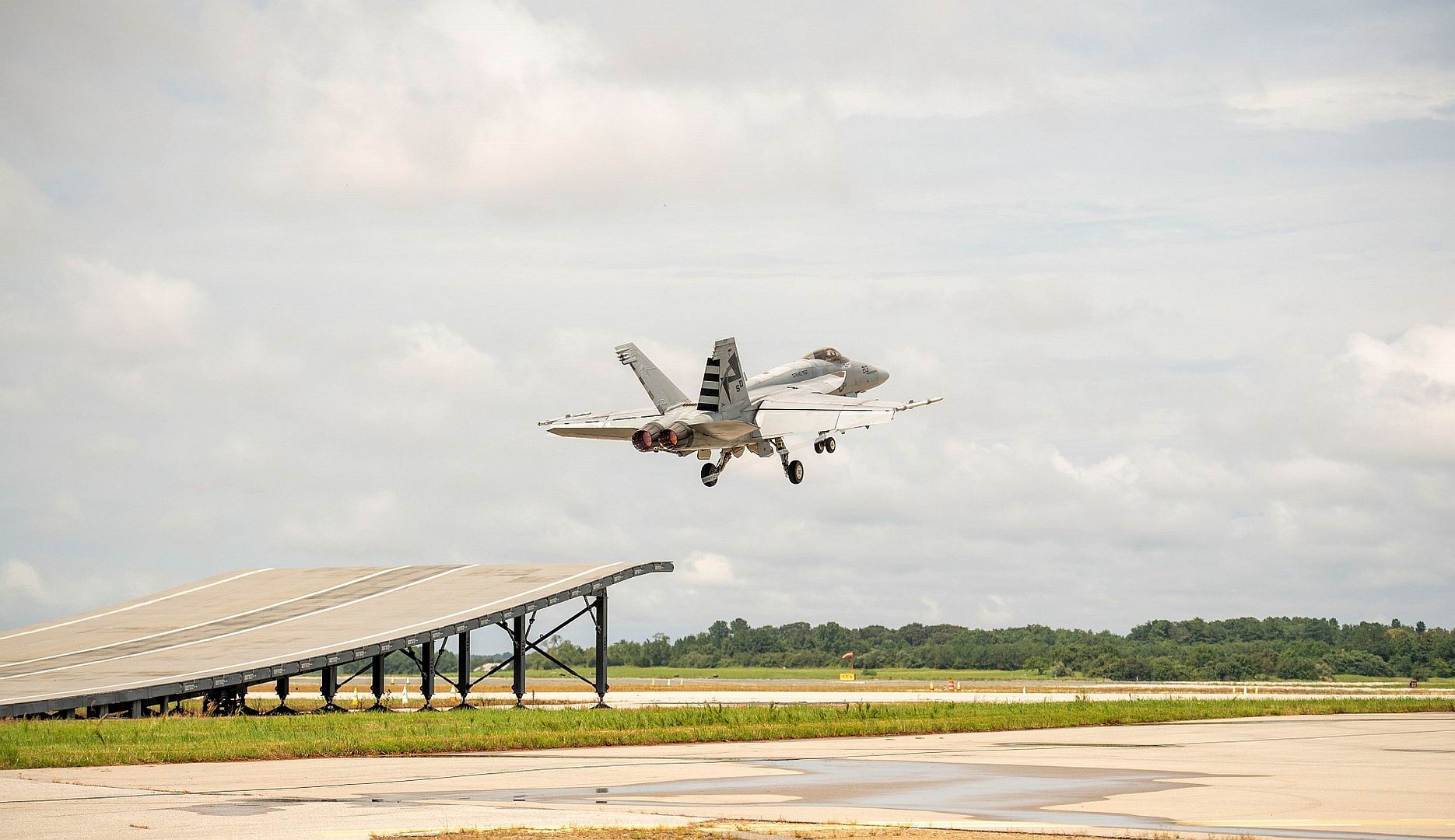
HUNTSVILLE, Ala., Dec. 21, 2020 ? Boeing [NYSE: BA] and NASA have successfully completed a critical design review for NASA?s Space Launch System (SLS) Exploration Upper Stage (EUS), confirming the EUS design for continued development and transition to hardware build. Boeing has already started fabrication activities that will support building the first EUS at NASA?s Michoud Assembly Facility in New Orleans.
The SLS rocket uses staged propulsion to send NASA?s Orion spacecraft and astronauts, plus supplies, to the moon and beyond. The Boeing-built core stage powers the SLS in early flight, eventually separating when the upper stage takes over and provides the power to send crewed vehicles, space habitats and other payloads on to the moon or other deep space destinations.
To accomplish NASA?s Artemis I lunar mission, the Block 1 variant of SLS will use a Boeing/United Launch Alliance Interim Cryogenic Propulsion Stage with one RL-10 engine to take an uncrewed Orion spacecraft on a test flight to the moon. SLS Block 1 rockets will be used for two subsequent crewed flights, including the first human mission to lunar orbit since the Apollo program.
The next version of SLS, Block 1B, will use EUS, which has larger fuel tanks and four RL-10 engines to give it a performance boost. That will allow SLS Block 1B to carry an Orion with a crew of four, as well as more than 10 metric tons of co-manifested payload.
?NASA?s SLS Block 1B with the EUS is capable of sending astronauts and essential supporting cargo to the moon and beyond,? said Steve Snell, EUS program manager for Boeing. ?EUS was designed for crewed flights from the beginning, and the additional lift capability that comes with the EUS requires fewer flights to enable a sustained human presence in deep space sooner and more safely.
?The moon is 238,000 miles from Earth, and Mars at its closest has been 35 million miles away,? Snell added. ?Transporting crews in the fewest flights, for shorter durations, is the safest approach to human deep-space travel. Only the EUS-powered SLS can carry the Orion, along with the necessary mission cargo, in one launch to the moon ? or beyond.?
Toulouse ? 21 December, 2020 ? Uganda Airlines, the country?s flag-carrier, has taken delivery of its first A330neo, the latest version of the most popular widebody airliner. It is the first Airbus aircraft delivered to Uganda Airlines, which was established in 2019.
In line with the Company's strategy to keep offering its customers unbeatable economics, increased operational efficiency and superior passenger comfort, the A330-800 is the latest addition to Airbus? commercial aircraft product line. Thanks to its tailored, mid-sized capacity and its excellent range versatility, the A330neo is considered the ideal aircraft to operate as part of the post-COVID-19 recovery.
The A330neo will enable the new airline to launch its long-range operations with non-stop intercontinental flights to the Middle East, Europe and Asia.
Featuring Airbus? Airspace cabin, passengers can enjoy a unique experience and explore its full comfort with 20 full-flat, business-class beds, 28 premium-economy seats and 210 economy-class seats, totalling 258 seats.
The A330neo is a true new-generation aircraft, building on the features of the popular A330 and using technology developed for the A350. Powered by the latest Rolls-Royce Trent 7000 engines and featuring a new wing with increased span and A350-inspired Sharklets, the A330neo provides an unprecedented level of efficiency. The aircraft burns 25% less fuel per seat than previous generation competitors. The A330neo cabin offers a unique passenger experience with more personal space and the latest generation in-flight entertainment system and connectivity.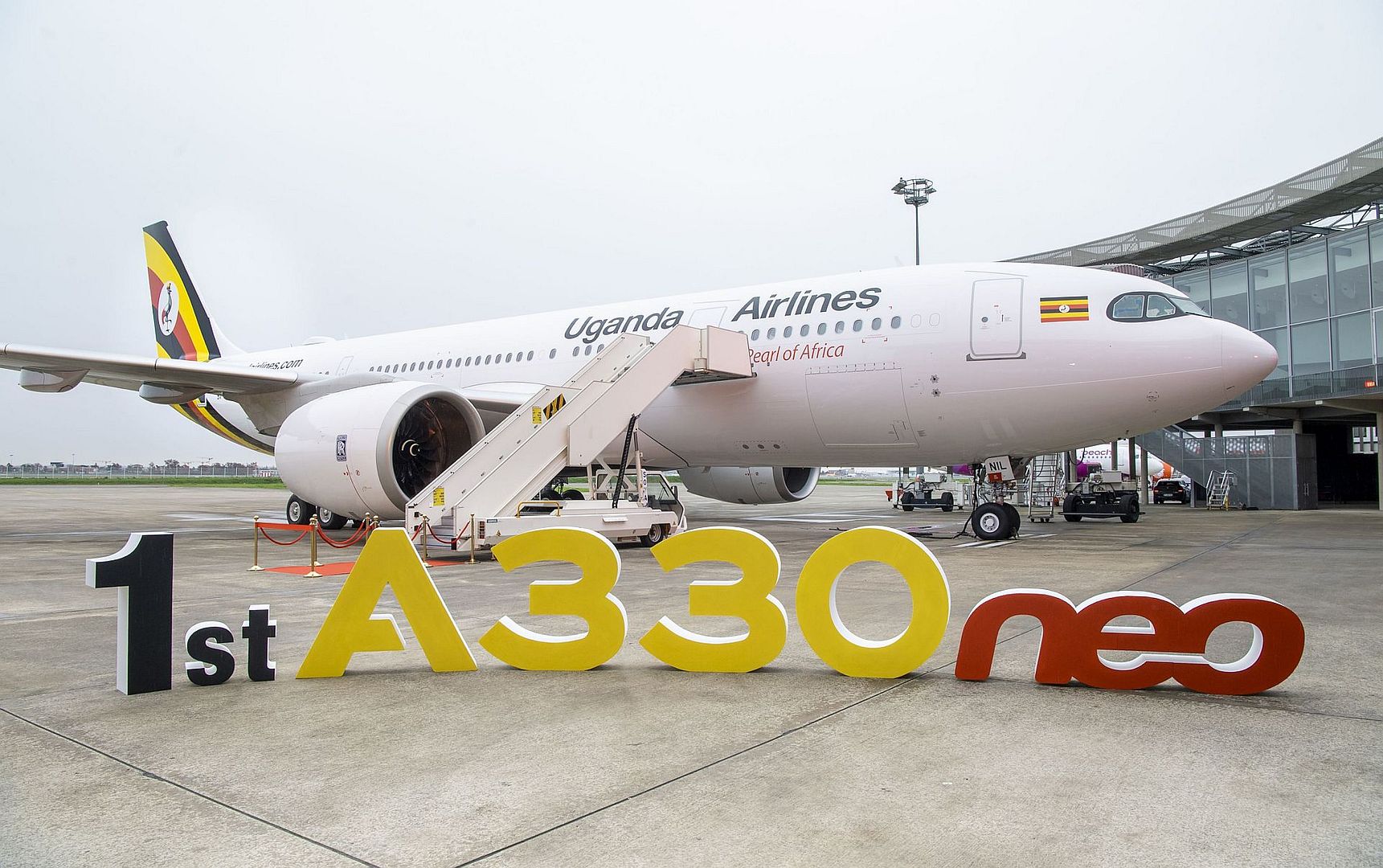
Gavi?o Peixoto ? Brazil, December 19th, 2020 - Embraer delivered the fourth C-390 Millennium multi-mission medium airlifter of a total of 28 units to the Brazilian Air Force (FAB). Like the three units already in operation, the fourth airlifter will be operated by the First Troop Transport Group (1st GTT). All 28 aircraft ordered by FAB are equipped to perform aerial refueling missions, with the designation KC-390 Millennium.
?It is with great satisfaction that we are receiving another KC-390 Millennium aircraft, which is being incorporated into our fleet. Soon, it will be operational in the most diverse missions, in different regions of Brazil and even abroad, similar to our first three aircraft. This platform has already demonstrated great capacity, mainly in the transport of supplies and materials during Operation COVID-19,? said the Brazilian Air Force Commander, Lieutenant-Brigadier Antonio Carlos Moretti Bermudez.
?We are very pleased with the delivery of the fourth C-390 Millennium to the Brazilian Air Force, as the airlifter has played an extremely important role in a series of humanitarian missions within the Brazilian territory and even abroad,? said Jackson Schneider, President and CEO of Embraer Defense & Security. ?The C-390 is establishing itself as the tactical transport aircraft of this century, opening new markets, which is immensely important for Embraer?s strategy in the coming years.?
Since the beginning of the COVID-19 outbreak, FAB has operated the KC-390 Millennium aircraft in logistical aerial transport missions, carrying tons of essential supplies to fight the pandemic in Brazil. Additionally, FAB operated one of the airlifters in a humanitarian mission to the Republic of Lebanon, in support of the population of Beirut, in August of this year.
On November 17, the Hungarian government signed a contract with Embraer for the acquisition of two C-390 Millennium multi-mission transport aircraft, in its air-to-air refueling (AAR) configuration, designated KC-390. The acquisition is part of the process to strengthen the capabilities of the Hungarian Defense Forces especially in the tactical airlift, AAR, and medical evacuation roles, as well as in other missions of public interest. Deliveries are scheduled to start in 2023.
The aircraft will be the first in the world featuring an Intensive Care Unit configuration, an essential feature for performing humanitarian missions. The aircraft are also designed to refuel the Hungarian JAS 39 Gripen, as well as other aircraft using the same technology. These KC-390 will be fully NATO compatible, not only in terms of hardware, but also in terms of avionics and communications configuration.
At the end of October, teams from the Portuguese Armed Forces (FAP) and Embraer concluded the ?Critical Design Review ? CDR? for the KC-390 Millennium ordered by Portugal. This step has defined the aircraft technical requirements according to FAP demands, enabling Embraer to configure the aircraft. The Portuguese Government and Embraer signed a contract for the acquisition of five multi-mission airlifters that will support the operations of the Portuguese Armed Forces and increase readiness in missions of national interest. Deliveries are scheduled to begin in 2023.
A joint project between FAB and Embraer, the C-390 Millennium is a tactical transport aircraft designed to set new standards in its category. Some of the aircraft?s strengths are mobility, robust design, greater flexibility, proven state-of-the-art technology, and easier maintenance.
The C-390 Millennium and the designation KC-390 Millennium fly faster and carry more cargo than other military freighters of the same size and are the ideal platforms for the main usage scenarios. The aircraft require fewer on-demand inspections and maintenance, combined with highly reliable systems and components, which reduces the time on the ground and overall operating costs, contributing to excellent availability levels and low life-cycle costs.
In October 2019, the aircraft received the Grand Laureate Award, in the category of Defense, and the Laureate Award, in the category ?Best New Defense Product,? from Aviation Week magazine.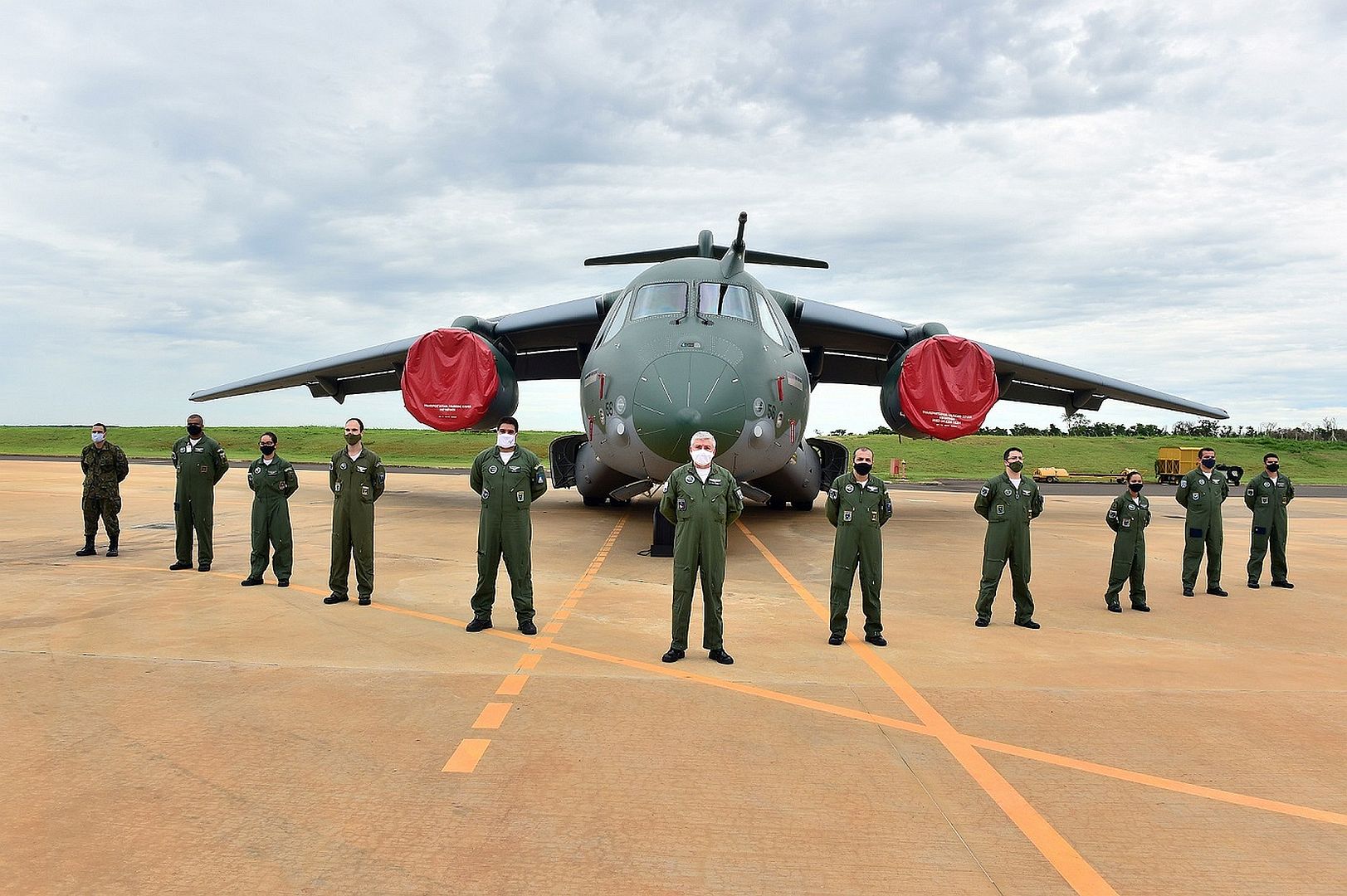
S?o Jos? dos Campos, Brazil, December 21st, 2020 ? Belavia, Belarusian Airlines, the national carrier of Belarus, took delivery today of their first E2 next generation Embraer aircraft in Brazil. The new aircraft is the first of three E195-E2 jets to be leased to Belavia by AerCap.
The aircraft, configured in a comfortable dual class layout seating 125 passengers in total, seats 9 in business and 116 in economy. Belavia plans to deploy their new aircraft on popular routes such as London, Barcelona, Nur-Sultan, Munich, Paris, Sochi, and Amsterdam.
?Belavia?s passengers love our current Embraer aircraft and I hope they will love the next generation E2 even more. The E2 offers Belavia lower operating costs, as well as the lowest impact on the environment. At Belavia we like to keep our fleet young and fresh; with the addition of the E195-E2 we can take more passengers, further, in greater comfort, and more efficiently ? the E2 is the perfect fit?, commented Anatoly Gusarov, CEO of JSC ?Belavia?.
?It?s great to welcome another airline to the E2 family of operators. As airlines? ramp up their operations, the E195-E2 is perfectly positioned to right size routes previously operated by narrowbodies, while keeping frequencies and adjusting capacity to new levels,? said Cesar Pereira, vice president of Europe, Middle East and Africa, Embraer Commercial Aviation. ?We look forward to supporting Belavia as they continue to upgrade their offering to their customers.?
?We congratulate the team at Belavia on the delivery of their first E195-E2,? said Philip Scruggs, President and Chief Commercial Officer at AerCap. ?We wish Belavia every success as they continue to modernize their fleet.?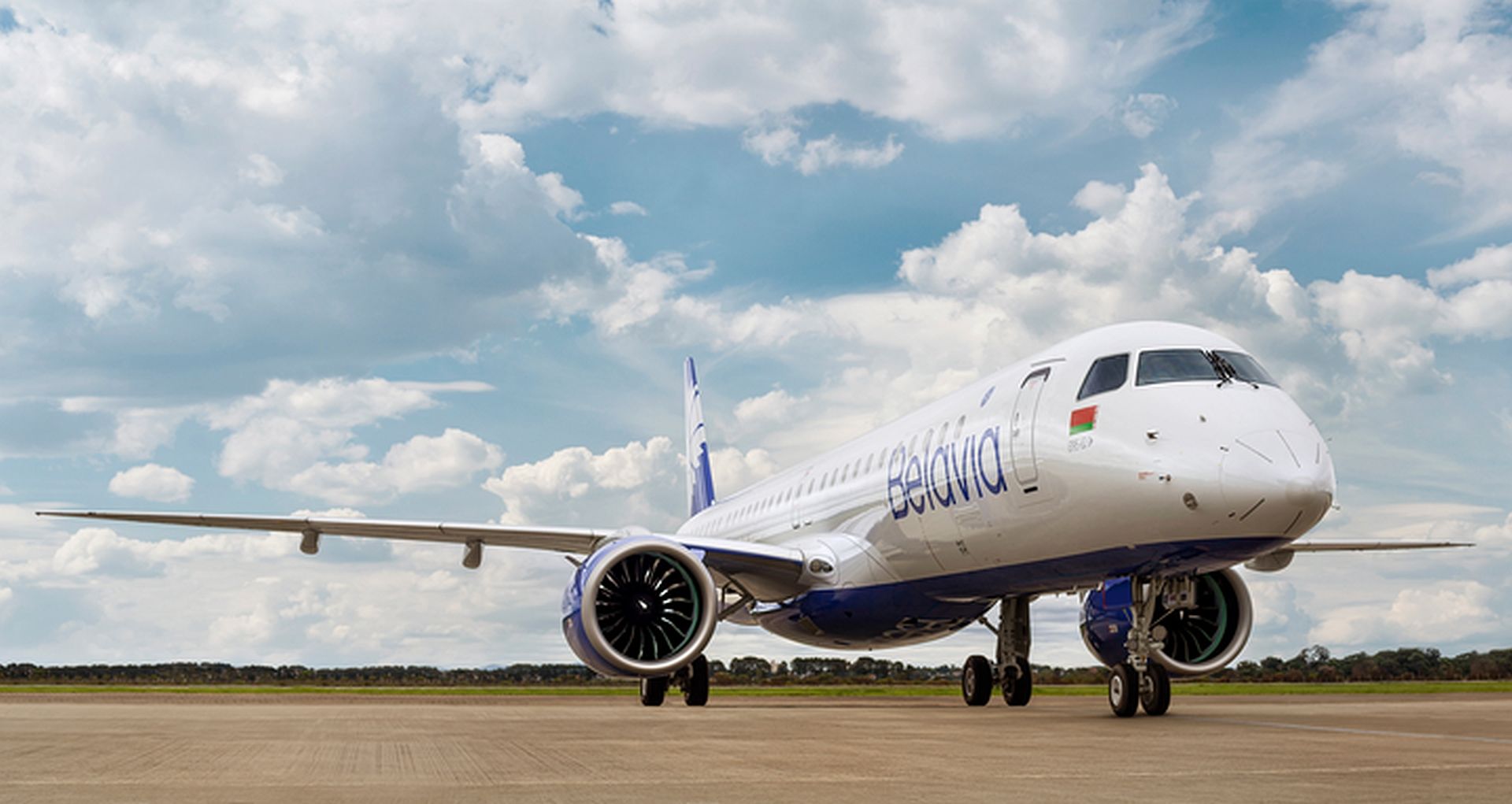
(Source: French Air and Space Force; issued Dec 18, 2020)
Carried out on December 15, 2020, Operation Minotaur is a strategic air force (SAF) power projection demonstration. Five Rafales, accompanied by tanker planes and an E-3F, carried out an air raid lasting over 10 hours ? and over 8000 km - from Metropolitan France for a simulated attack of Air Base 188 in Djibouti, which was defended by realistic opposition.
This mission, representative of a high intensity conflict, demonstrates the capabilities of the Air and Space Force to act far, fast and hard.
In the early morning, while it is still dark, three Rafale from the 4th Fighter Squadron at Saint-Dizier air base and two Rafale from the 30th Fighter Squadron from Mont-de-Marsan took off for an extraordinary mission: quickly reach Djibouti, located over 8,000 km away, knowing that strong air / air and dense air / ground opposition awaits them upon their arrival.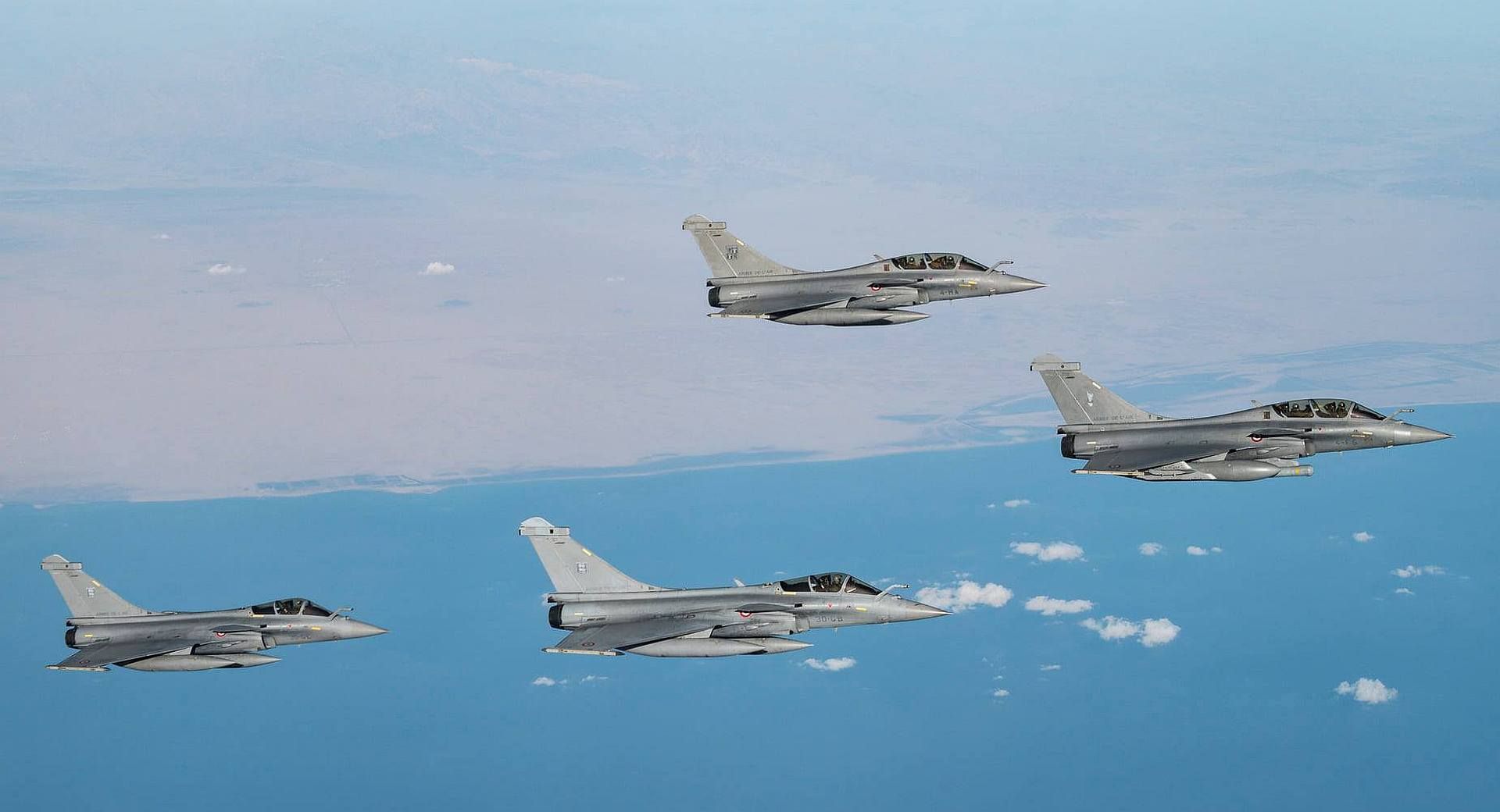
The three Rafale B of the Strategic Air Forces will then have to penetrate the opposing defenses to simulate a missile fire, while the two Rafale C will provide air protection for the raid.
The Rafale projection from mainland France is supported by tanker planes, in particular by the new A330 MRTT Ph?nix of the 31st Air Refueling and Strategic Transport Squadron at Istres air base. This aircraft has exceptional refueling and transport capabilities, far greater than the venerable KC-135s also involved in the operation. Thanks to the MRTT, the Air and Space Force is now able to self-deploy to the other side of the world.
An E-3F aircraft from the 36th Airborne Detection and Control Wing at Avord air base completed the air system. Offering increased detection of all threats, it guarantees perfect knowledge of the air situation to the crews and to the FAS Operations Center (COFAS) which can monitor in real time - in particular thanks to the Link 16 tactical data links - the progress of such an operation.
After several in-flight refuelings requiring extreme concentration and fine controls, the deployed Rafales then had to face strong opposition. Several Mirage 2000-5s from the 3/11 ?Corse? Fighter Squadron stationed at Air Base 188 at Djibouti, playing the role of adversaries, then sought to prevent them from entering Djiboutian airspace and to deliver their (fictitious) weapons. A wasted effort for the Mirages!
Carrying out high-intensity aerial combat after a self-deployment flight of more than ten hours shows an exceptional capability mastered by the Air and Space Force.
A few days after Operation Poker - an air mission of more than 50 planes reproducing a nuclear raid over the national territory - this projection mission once again demonstrates the ability of the aerial weapon to act quickly, far and hard.
From now on, the Rafale B and C, as well as an A330 Ph?nix, lead, with the Mirage 2000 of 3/11 Corsica, a valued training campaign until December 22, 2020. Then, it will be the turn of the Force Command Air Force (CFA) and the Air Defense and Air Operations Command (CDAOA), as part of the next training sessions scheduled for January, to take advantage of the exceptional setting offered by Djibouti territory. The opportunity to train in an environment different from France with demanding, but decisive, air force missions.
(Photos courtesy of L'arm?e de l'Air et de l'Espace)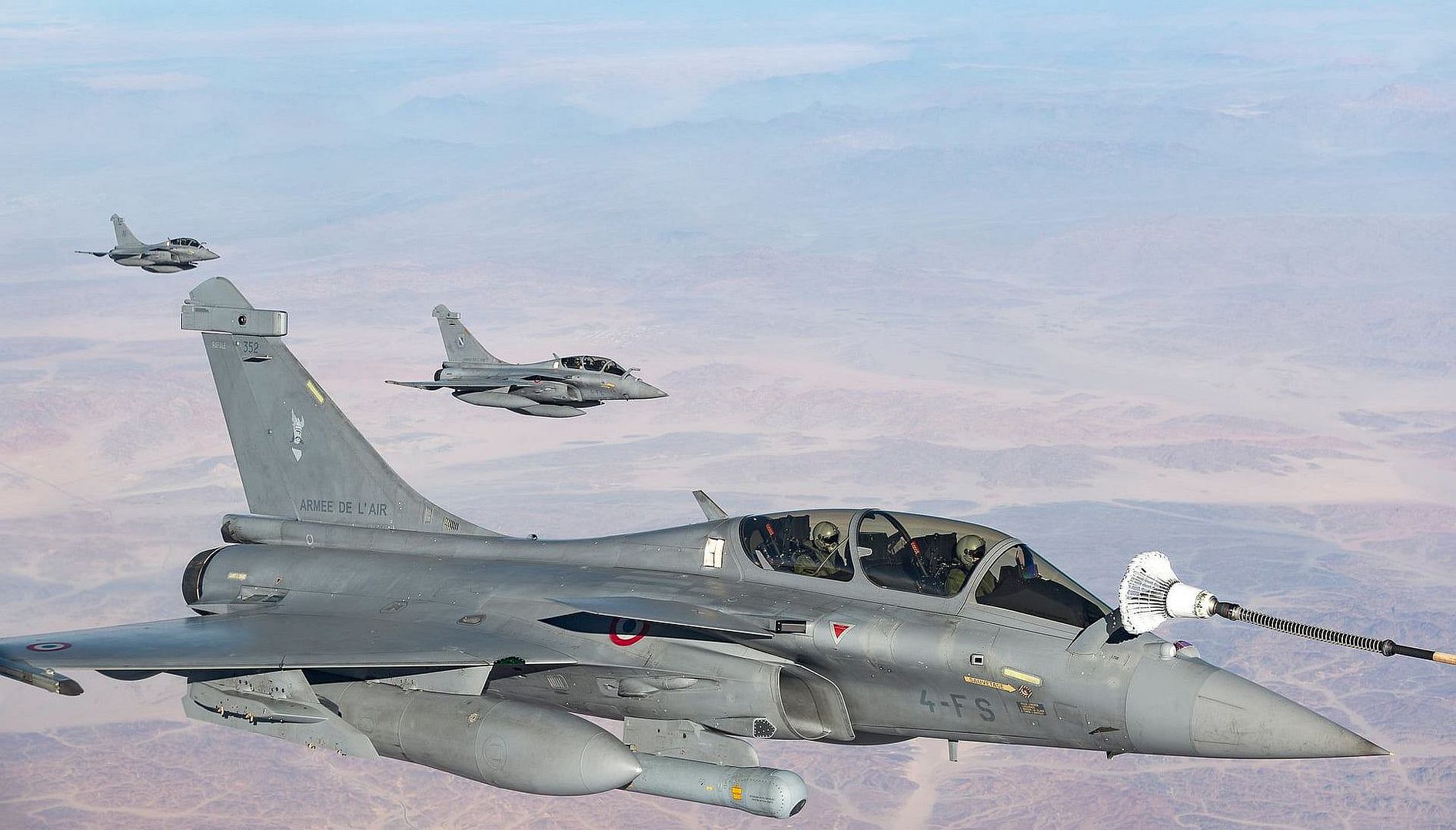
-
 Main AdminThe Makin Island Amphibious Ready Group, consisting of USS Makin Island (LHD8), USS Somerset (LPD 25), USS San Diego (LPD 22), and embarked 15th Marine Expeditionary Unit; and USS Hershel ?Woody? Williams (ESB 4) conduct maritime operations off the coast of Mogadishu, Somalia in support of Operation Octave Quartz (OOQ). The OOQ mission is to reposition U.S. Department of Defense personnel from Somalia to other locations in East Africa. (U.S. Navy photo by Mass Communication Specialist 2nd Class Michael J. Lieberknecht)
Main AdminThe Makin Island Amphibious Ready Group, consisting of USS Makin Island (LHD8), USS Somerset (LPD 25), USS San Diego (LPD 22), and embarked 15th Marine Expeditionary Unit; and USS Hershel ?Woody? Williams (ESB 4) conduct maritime operations off the coast of Mogadishu, Somalia in support of Operation Octave Quartz (OOQ). The OOQ mission is to reposition U.S. Department of Defense personnel from Somalia to other locations in East Africa. (U.S. Navy photo by Mass Communication Specialist 2nd Class Michael J. Lieberknecht)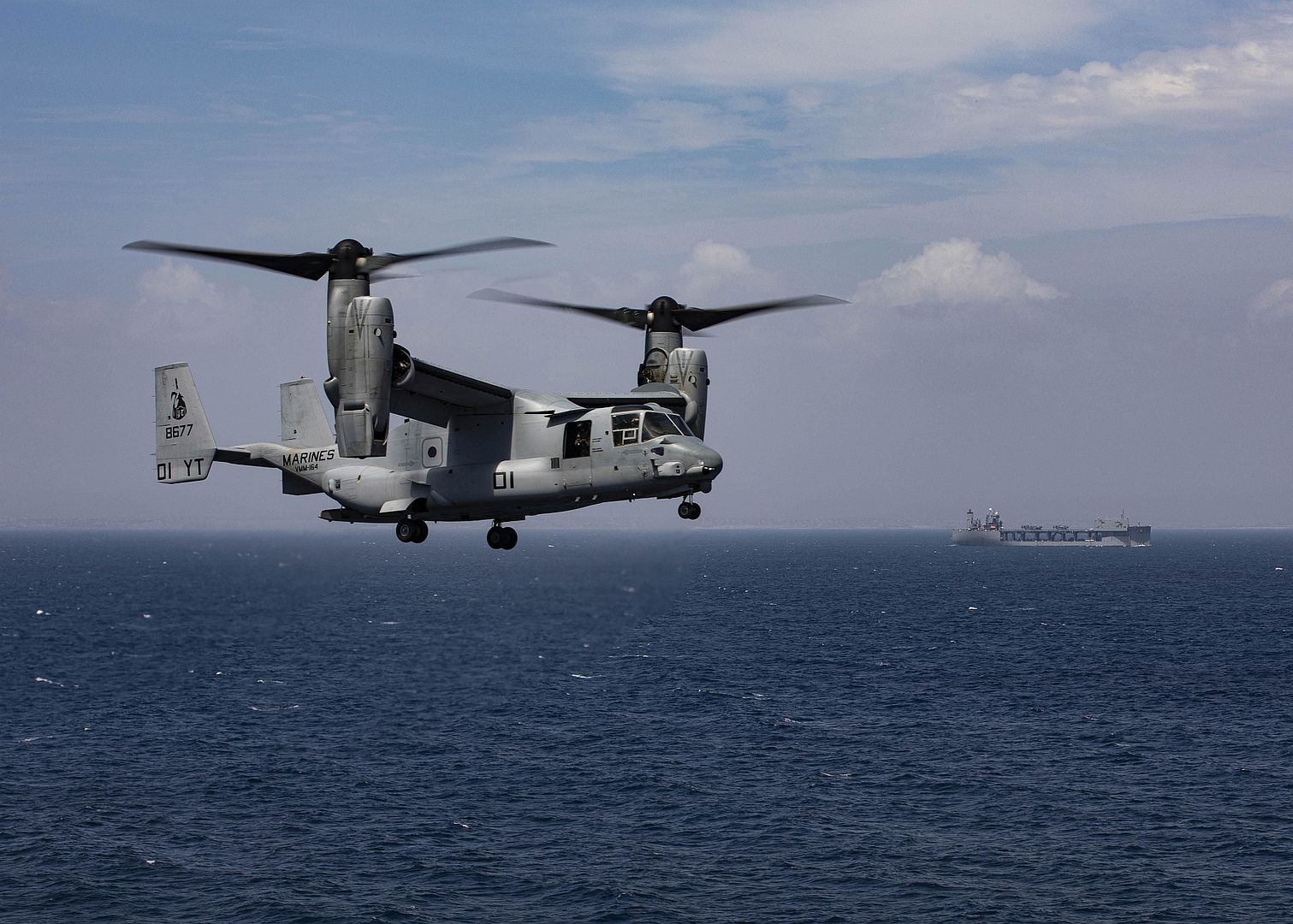
An F-35A Lightning II lands while an F-16 Fighting Falcon prepares for takeoff, Dec. 15, 2020, at Luke Air Force Base, Arizona. Luke AFB?s mission is to train F-16 and F-35 fighter pilots and has graduated more than 61,000 fighter pilots since 1941. There are four F-35 fighter squadrons and four F-16 fighter squadrons that directly support the base?s mission of training the world?s greatest fighter pilots. (U.S. Air Force photo by Airman 1st Class Brooke Moeder)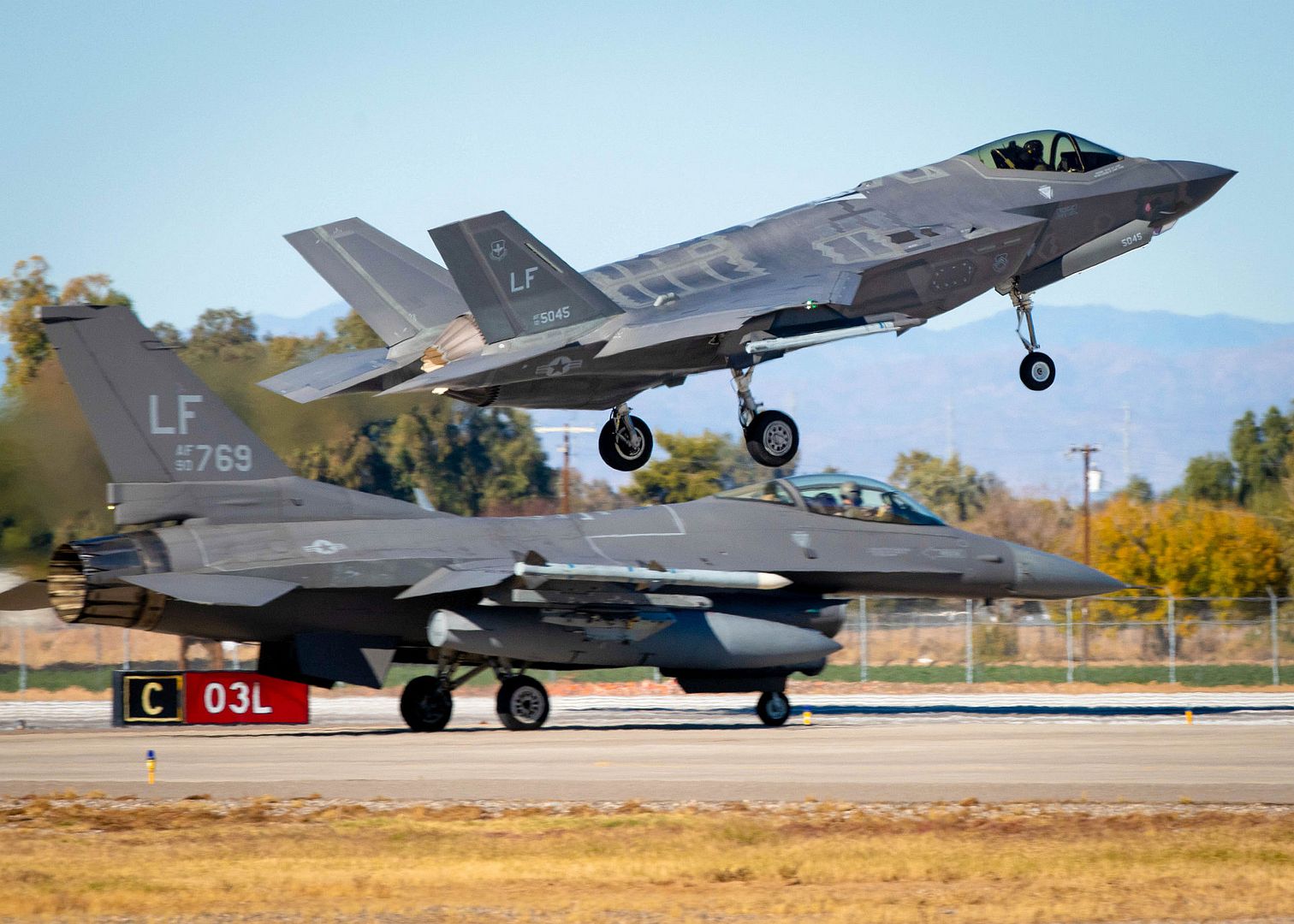
An F-16D Fighting Falcon part of the 310th Fighter Squadron takes off, Dec. 15, 2020, at Luke Air Force Base, Arizona. Luke AFB graduates more than 188 F-16 fighter pilots annually. There are four F-35A Lightning II fighter squadrons and four F-16 fighter squadrons that directly support the base?s mission of training the world?s greatest fighter pilots. (U.S. Air Force photo by Airman 1st Class Brooke Moeder)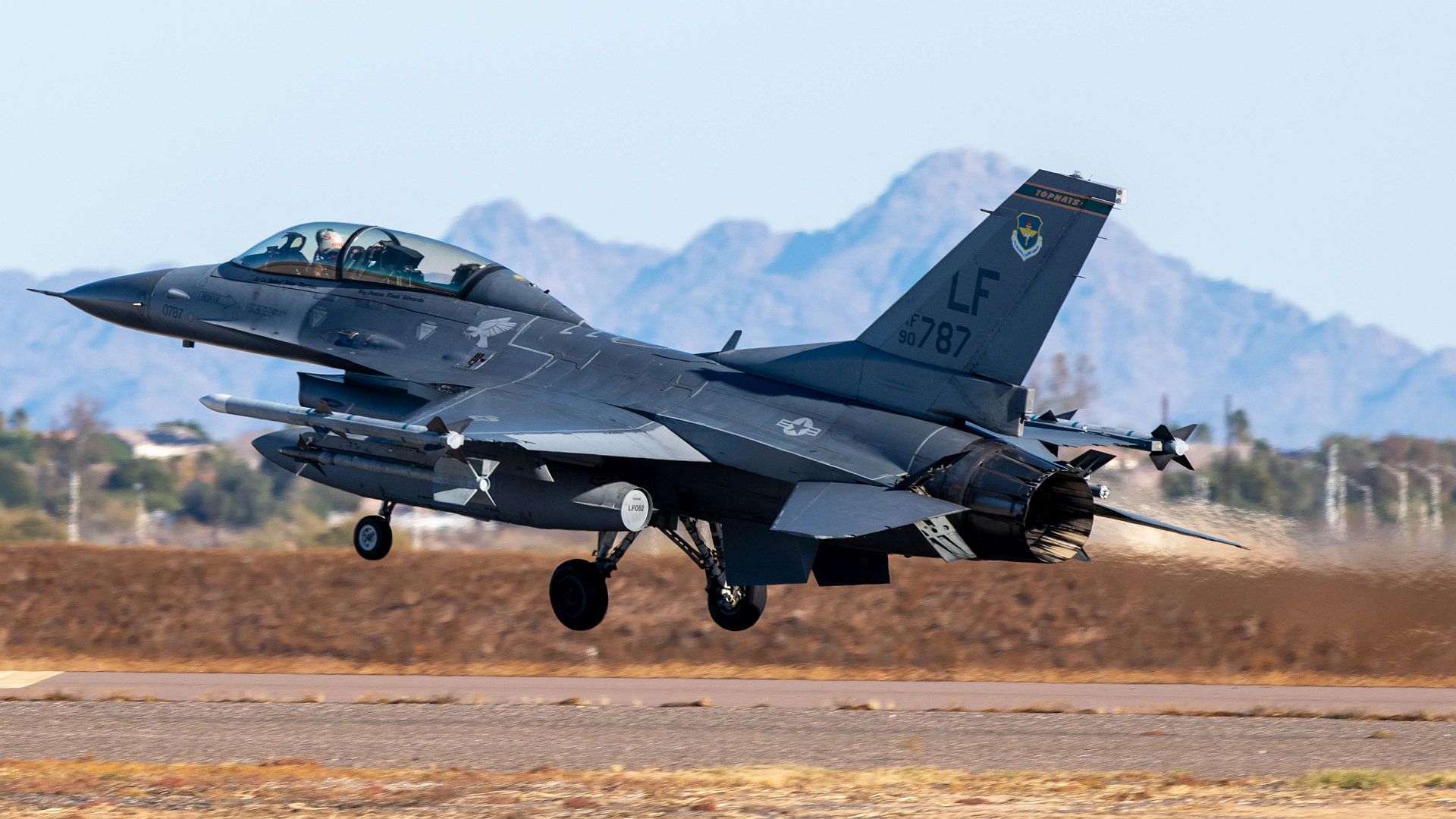
INDIAN OCEAN (Dec. 18, 2020) U.S. Marine Corps F-35B Lightning II aircraft with Marine Medium Tiltrotor Squadron (VMM) 164 (Reinforced), 15th Marine Expeditionary Unit, prepare to land on the flight deck of the amphibious assault ship USS Makin Island (LHD . The F-35Bs provide close air support to Operation Octave Quartz (OOQ). The mission of OOQ is to relocate U.S. Department of Defense forces in Somalia to other East Africa operating locations while maintaining pressure on violent extremists and supporting partner forces. (U.S. Marine Corps photo by Cpl. Patrick Crosley)
. The F-35Bs provide close air support to Operation Octave Quartz (OOQ). The mission of OOQ is to relocate U.S. Department of Defense forces in Somalia to other East Africa operating locations while maintaining pressure on violent extremists and supporting partner forces. (U.S. Marine Corps photo by Cpl. Patrick Crosley)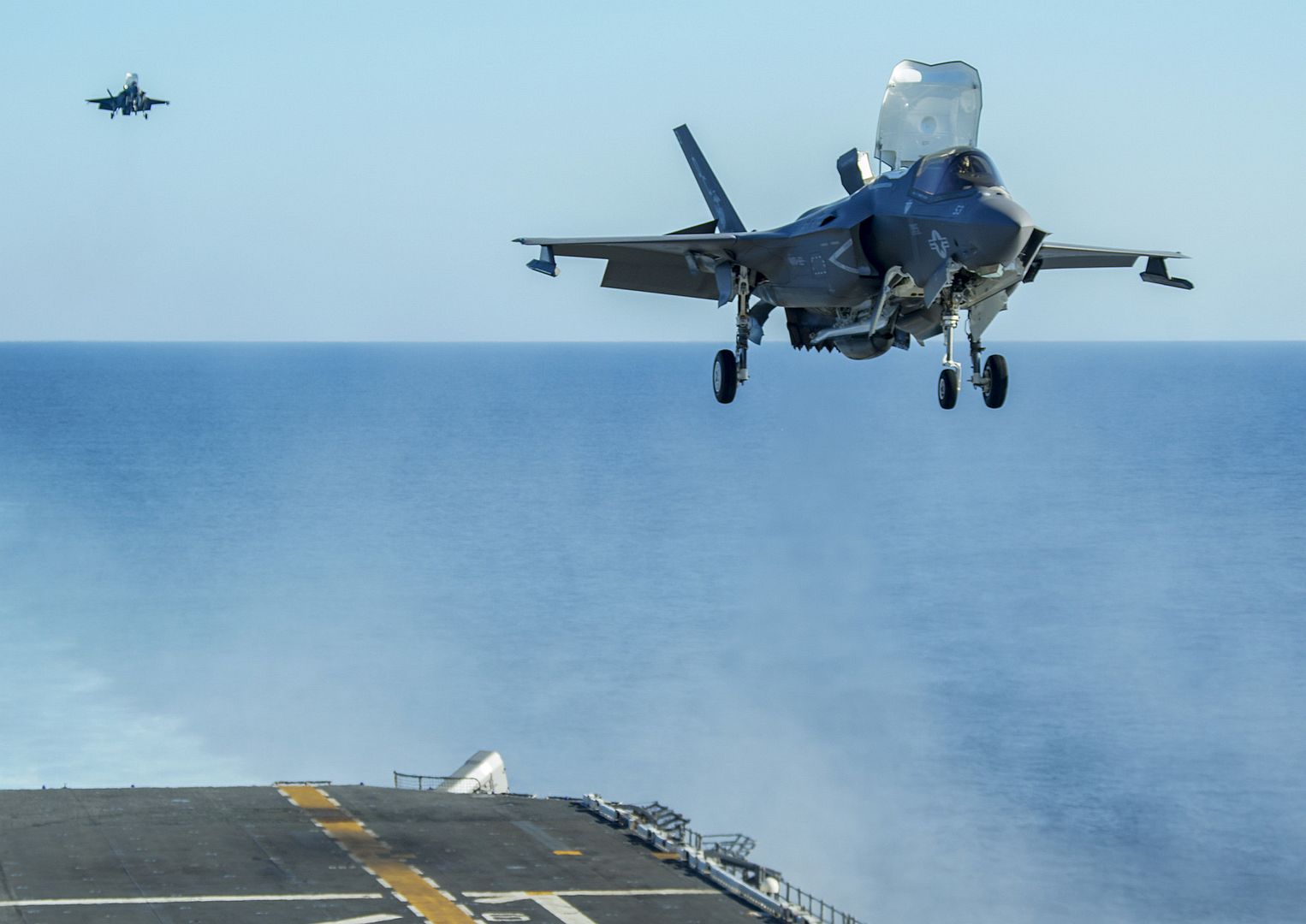
SEATTLE, Dec. 22, 2020 /PRNewswire/ -- Boeing [NYSE: BA] and Alaska Airlines announced that the carrier is buying 23 more 737-9 airplanes, building on its original order and an agreement last month to acquire new 737-9s through lease. The new deal brings Alaska Airlines' total 737 MAX orders and options to 120 airplanes, which will give the fifth largest U.S. carrier the scale, efficiency and flexibility to expand as air travel recovers.
"We are extremely proud to be announcing this transformative agreement with Boeing," said Brad Tilden, CEO of Alaska Air Group. "We believe in this airplane, we believe in our strong partnership with Boeing, and we believe in the future of Alaska Airlines and the incredible opportunities ahead as we climb our way out of this pandemic."
Alaska Airlines, a longtime Boeing 737 operator, placed an order for 32 737-9 jets in 2012 as part of its fleet modernization program. The 737-9 is a member of the 737 MAX family that is designed to offer more fuel efficiency, reliability and flexibility in the single-aisle airplane market. Last month, Alaska Airlines announced it is expanding its commitment to the 737 MAX program by leasing 13 new 737-9s while selling some A320 jets it had taken on through its acquisition of Virgin America.
The new agreement announced today will add 23 firm orders for the 737-9 and more options for future purchases. In all, Alaska will have 52 options which, if fully exercised, would take the carrier to as many as 120 737 MAX airplanes. The airline said the deal moves it toward a more efficient, all-Boeing mainline fleet that will "enhance the guest experience, improve operational performance and support the company's growth."
"We could not ask for a better partner than Boeing and we are delighted to be standing side by side with them as we work together to get our economy back on its feet," said Tilden.
Alaska Airlines and Boeing leaders announced the agreement during a signing ceremony at Boeing's delivery facility in Seattle, flanked by a new 737-9 that will be among the first such jets to be operated by Alaska Airlines. In observance of COVID-19 restrictions, both companies limited attendance at the event and addressed the pandemic that has severely affected air travel, expressing confidence in the fundamental strength of the industry and long-term passenger demand.
"Alaska Airlines has done a tremendous job of weathering the impacts from the COVID-19 pandemic, and is well positioned to return to its growth trajectory and strengthen its standing as one of the top U.S. airlines. With Alaska's industry-leading reputation for safety, sustainability and customer service, we are honored they have chosen to invest in their future with a significant purchase of additional Boeing 737 airplanes," said Stan Deal, president and CEO of Boeing Commercial Airplanes. "We are grateful for Alaska's trust and partnership. Our team is focused on delivering their first 737 MAX jets and helping ensure a safe and seamless entry into service."
Alaska Airlines says the 737 ? equipped with new, more fuel-efficient engines and improved aerodynamics ? will use 20% less fuel and reduce emissions by 20% per seat compared to airplanes it replaces. The airline will configure the jet with 178 seats in a three-class configuration. The plane can fly 3,550 nautical miles, about 600 miles more than its predecessor. This additional capability will allow airlines to offer new and more direct routes to passengers. Every airplane will feature the new Boeing Sky Interior, highlighted by modern sculpted sidewalls and window reveals, LED lighting that enhances the sense of spaciousness and larger pivoting overhead storage bins.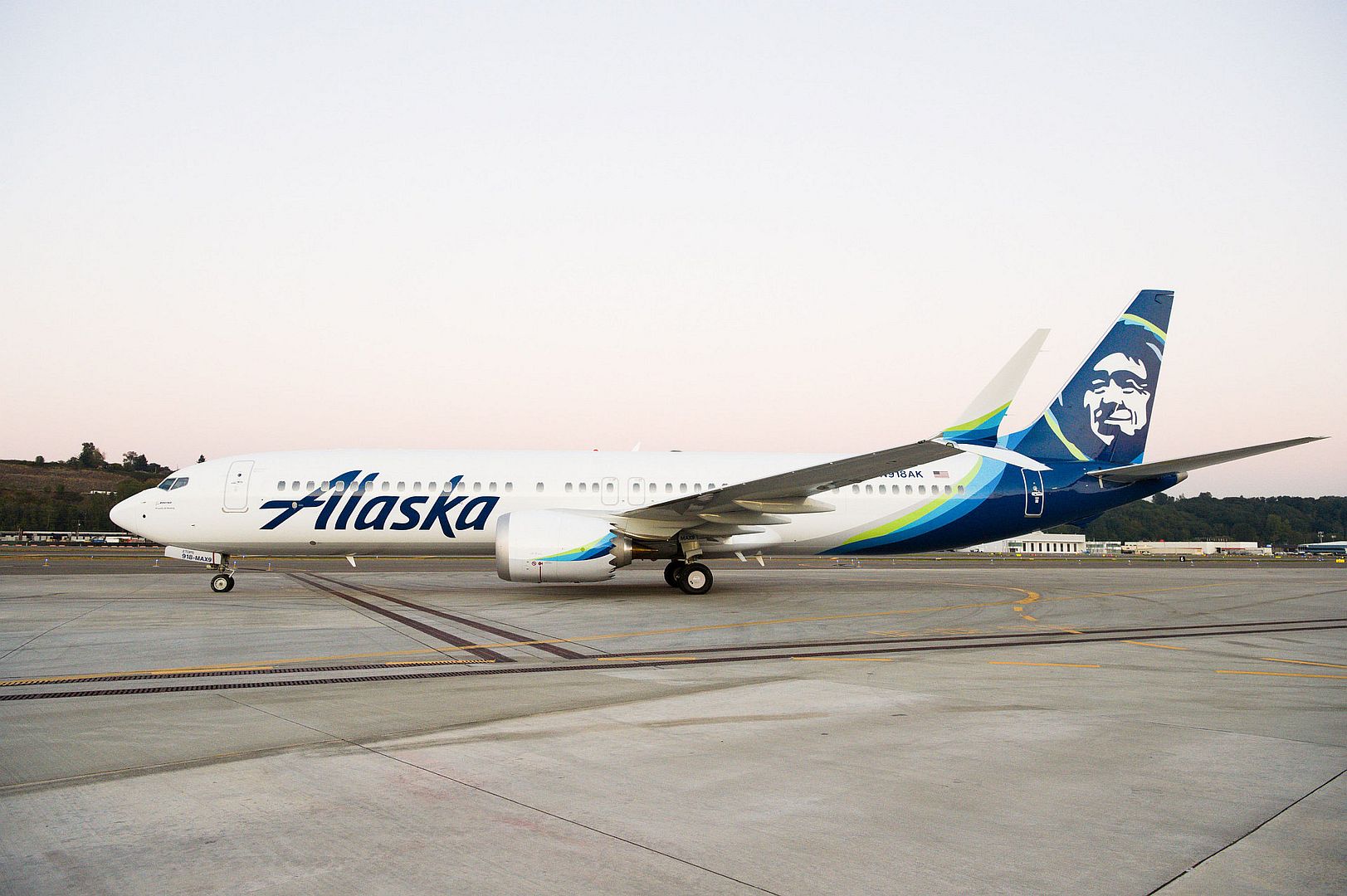
Dec 22, 2020.
Saab has received an order from the Swedish Defence Material Administration (FMV) to define what is needed to meet Sweden?s requirements for the continued, effective operation and availability of Gripen C/D until 2035. The order value is 185 MSEK.
The work will be conducted during the period of December 2020 to December 2021.
?Gripen C/D is the backbone of the Swedish Air Force and will be for many years to come. The result of the work will be that the customer has the ability to take different directions depending on their future needs. Saab?s expertise in developing advanced fighter technology gives Sweden the means to decide how Gripen C/D remains a formidable frontline fighter in the 2030s,? says Jonas Hjelm, Senior Vice President and head of Saab business area Aeronautics.
Gripen is in service with a number of air forces including Sweden, the Czech Republic, Hungary, South Africa and Thailand. The UK Empire Test Pilots? School (ETPS) is operating Gripen as its platform for test pilot training. Sweden and Brazil have also respectively ordered 60 and 36 new Gripen fighter aircraft.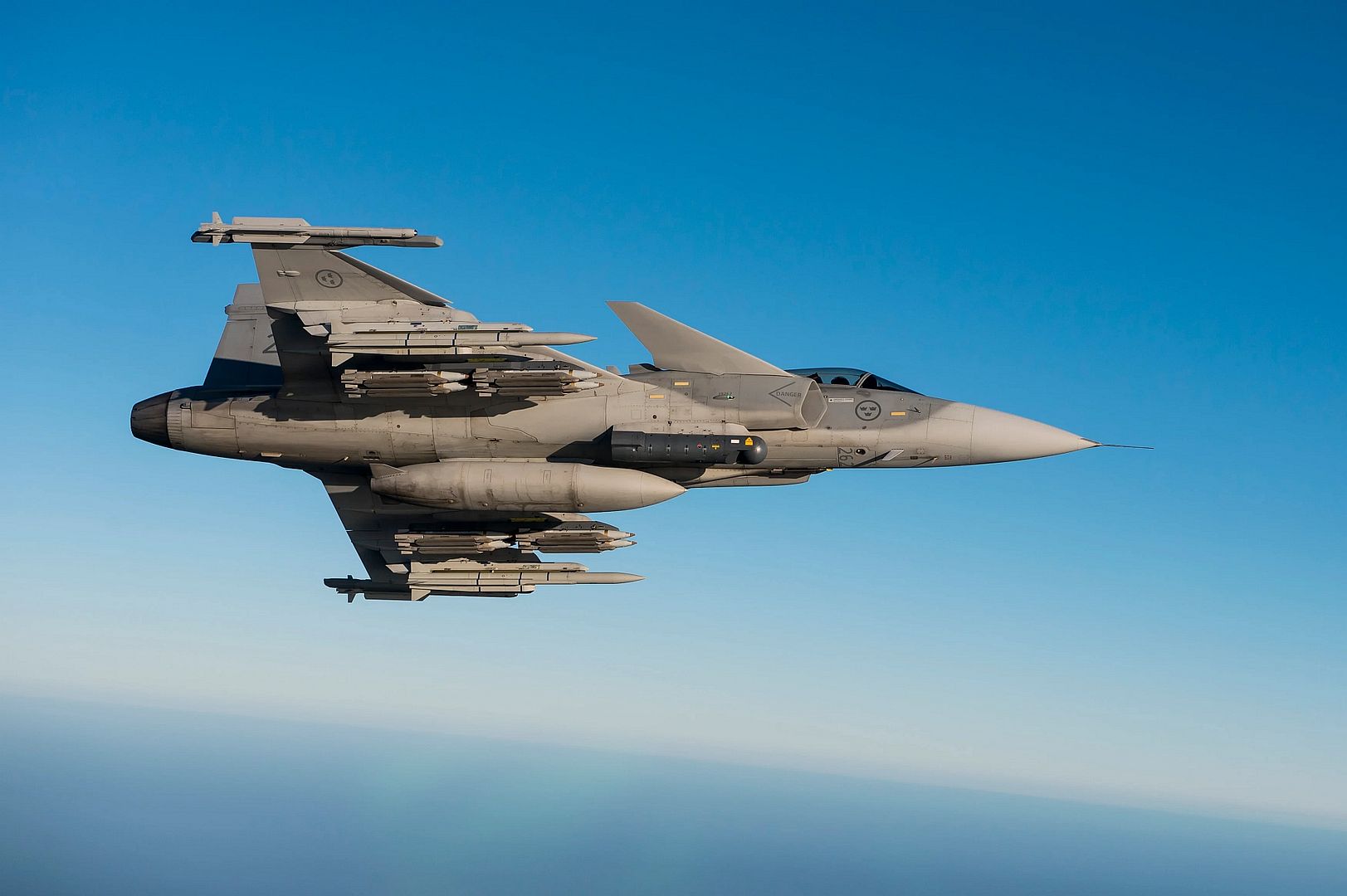
Seville, 22 December 2020 ? The Belgian Air Force has taken delivery of its first of seven Airbus A400M military transport aircraft. The aircraft was handed over to the customer at the A400M Final Assembly Line in Seville (Spain) and subsequently performed its ferry flight to the 15th Wing Air Transport in Melsbroek (Belgium), where the aircraft will be based.
This A400M, known as MSN106, will be operated within a binational unit composed of a total of eight aircraft, seven from the Belgian Air Force and one from the Luxembourg Armed Forces.
The second A400M for Belgium will be delivered in early 2021.
Alberto Gutierrez, Head of Military Aircraft at Airbus Defence and Space, said: ?With the delivery of this aircraft all launch customers are now equipped with the A400M. MSN106 will join Luxemburg?s aircraft in the binational unit operated jointly with Belgium. Despite challenges due to Covid-19, our teams have achieved all 10 aircraft deliveries scheduled this year, bringing the global fleet in operation to 98 aircraft.?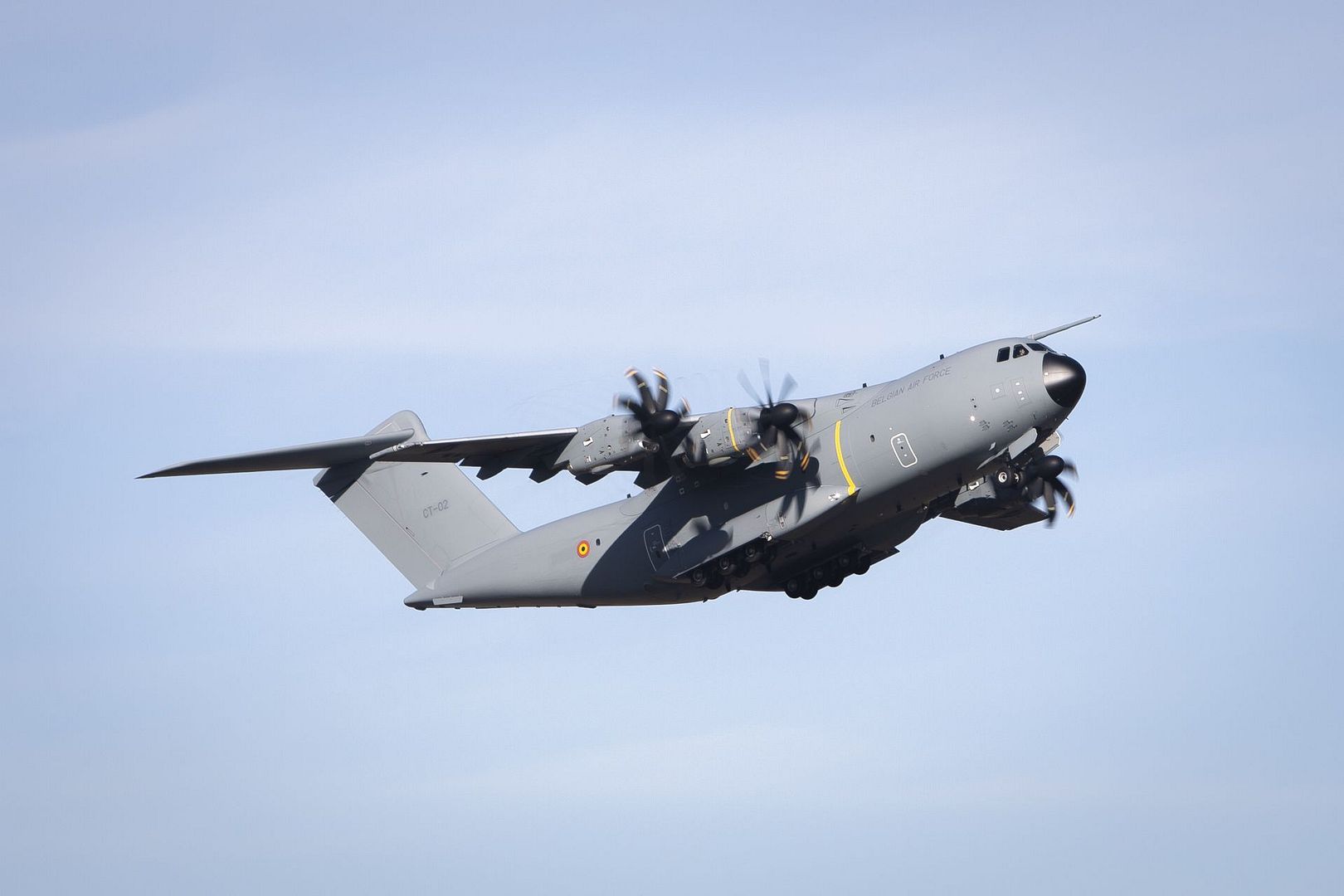
Yangon, Myanmar, 22 December 2020 ? Myanmar Airways International?s (MAI) first E190 commenced operations from Yangon yesterday, operating four flights throughout the day. In addition, MAI?s second E190 is due to arrive in the country on 23 December 2020 and the airline will expand its E190 routes to include nine destinations across the country, upgauging from the turboprops used by its sister airline Air KBZ.
MAI has also signed on for Embraer?s Pool Program ? a program enrolled by all E-Jet operators in Asia Pacific. There are now four new E-Jet operators in Asia Pacific (ex. China) since the start of 2020.
?Our pilots, cabin crew, maintenance crew and our staff are proud to take MAI?s E190 to the skies and to serve our passengers with an enhanced flying experience,? said Saravanan Ramasamy, Chief Executive Officer of MAI. ?We look forward to a productive partnership with Embraer. The operation of the E190 marks yet another important milestone in MAI?s fleet expansion strategy and domestic jet network growth. As the demand grows, we plan to scale up the frequency of our E190 operations to eight flights a day.?
?The commencement of Myanmar Airways International?s E190 flights will enhance connectivity in Myanmar,? said Raul Villaron, Asia Pacific Vice President for Embraer Commercial Aviation. ?The airline will benefit from the performance and efficiency of the aircraft and generous cargo capacity. Passengers will appreciate the comfort in the cabin. Myanmar Airways International can operate with full confidence that our excellent service and support team are here to support them.?
In preparation for the E190 operations, eight MAI pilots underwent the month-long Initial Pilot Training in September 2020 in Zhuhai, China. Separately, Embraer conducted the license-engineer type course for MAI?s engineers. Embraer?s Pool Program, which MAI has enrolled in offers full repair coverage for components and parts, airframe maintenance, and unlimited access to a large stock of components at the company?s distribution centers. Operators benefit from significant savings on repair and inventory costs, reduction in required warehousing space and resources required for repair management, while ultimately providing guaranteed performance levels. Singapore is the base for Embraer?s warehouse in the Asia Pacific region.
Embraer is the world?s leading manufacturer of commercial aircraft up to 150 seats with more than 100 customers from all over the world. For the E-Jets program alone, Embraer has logged more than 1,800 orders and 1,600 aircraft have been delivered. Today, E-Jets are flying in the fleet of more than 80 customers in some 50 countries. The versatile 70 to 150-seat family is flying with low-cost airlines as well as with regional and mainline carriers.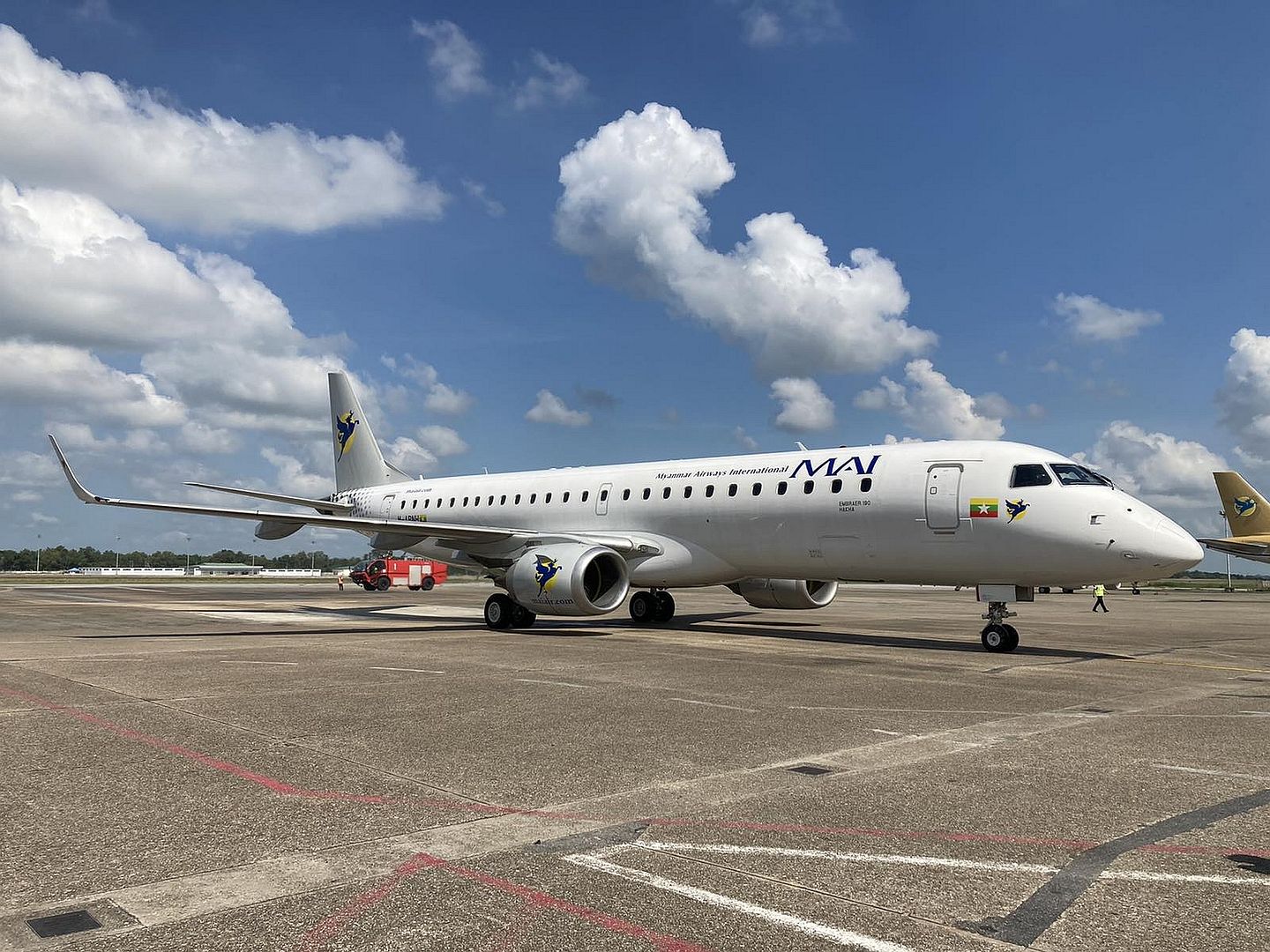
WICHITA, Kan. (Dec. 22, 2020) ? Textron Aviation Inc., announced today it has delivered a missionized Beechcraft King Air 350CER turboprop aircraft to the Department of Commerce?s National Oceanic and Atmospheric Administration (NOAA) Office of Marine & Aviation Operations (OMAO). The aircraft joins a King Air 350CER aircraft delivered to NOAA in May 2009. The agency?s first King Air 350CER aircraft has flown coastal mapping and aerial survey missions and critical emergency response missions including photographic survey after earthquakes, oil spills, and numerous blizzards, tornados, floods and named hurricanes.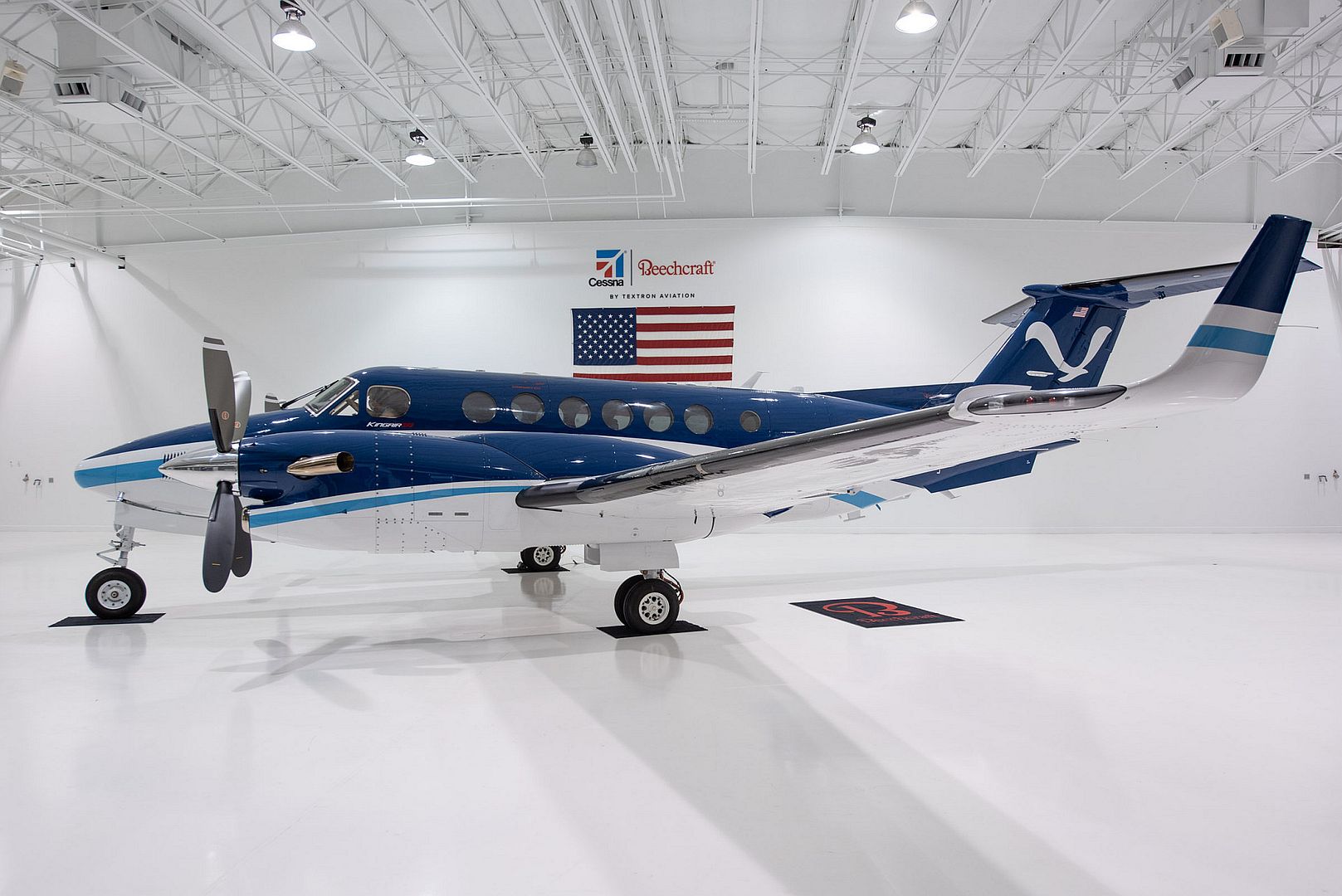
The Beechcraft King Air is designed and manufactured by Textron Aviation Inc., a Textron Inc. (NYSE:TXT) company.
?We are honored the King Air 350CER aircraft continues to be the aircraft of choice to fill a variety of critical mission needs for NOAA,? said Bob Gibbs, vice president, Special Mission Sales. ?The aircraft?s custom sensor port modification, combined with its extended range performance features, makes it a powerful and reliable platform to carry out the agency?s unique missions during critical times.?
With extended range capabilities, the King Air 350CER aircraft can collect critical information while remaining airborne for up to eight hours. The dual-sensor port modification allows simultaneous data collection from multiple on-board sensors. Optical grade glass plates in the sensor ports allow the cabin to remain pressurized or the optical plates can be removed, and the aircraft operated unpressurized.
NOAA?s fleet of manned aircraft is operated, managed and maintained by the Aircraft Operations Center (AOC), part of the agency?s Office of Marine and Aviation Operations, located at Lakeland Linder Regional Airport in Lakeland, Florida.
-
 Main AdminU.S. Marines with Marine Medium Tiltrotor Squadron 268 prepare an MV-22 Osprey for sea transport on Joint Base Pearl Harbor-Hickam, Dec. 21, 2020. VMM-268 flew a collection of eight Ospreys to be loaded onto a ship for transport for the unit?s upcoming Integrated Training Exercise at Marine Corps Air Ground Combat Center, Twentynine Palms, California. (U.S. Marine Corps photo by Cpl. Jacob Wilson)
Main AdminU.S. Marines with Marine Medium Tiltrotor Squadron 268 prepare an MV-22 Osprey for sea transport on Joint Base Pearl Harbor-Hickam, Dec. 21, 2020. VMM-268 flew a collection of eight Ospreys to be loaded onto a ship for transport for the unit?s upcoming Integrated Training Exercise at Marine Corps Air Ground Combat Center, Twentynine Palms, California. (U.S. Marine Corps photo by Cpl. Jacob Wilson)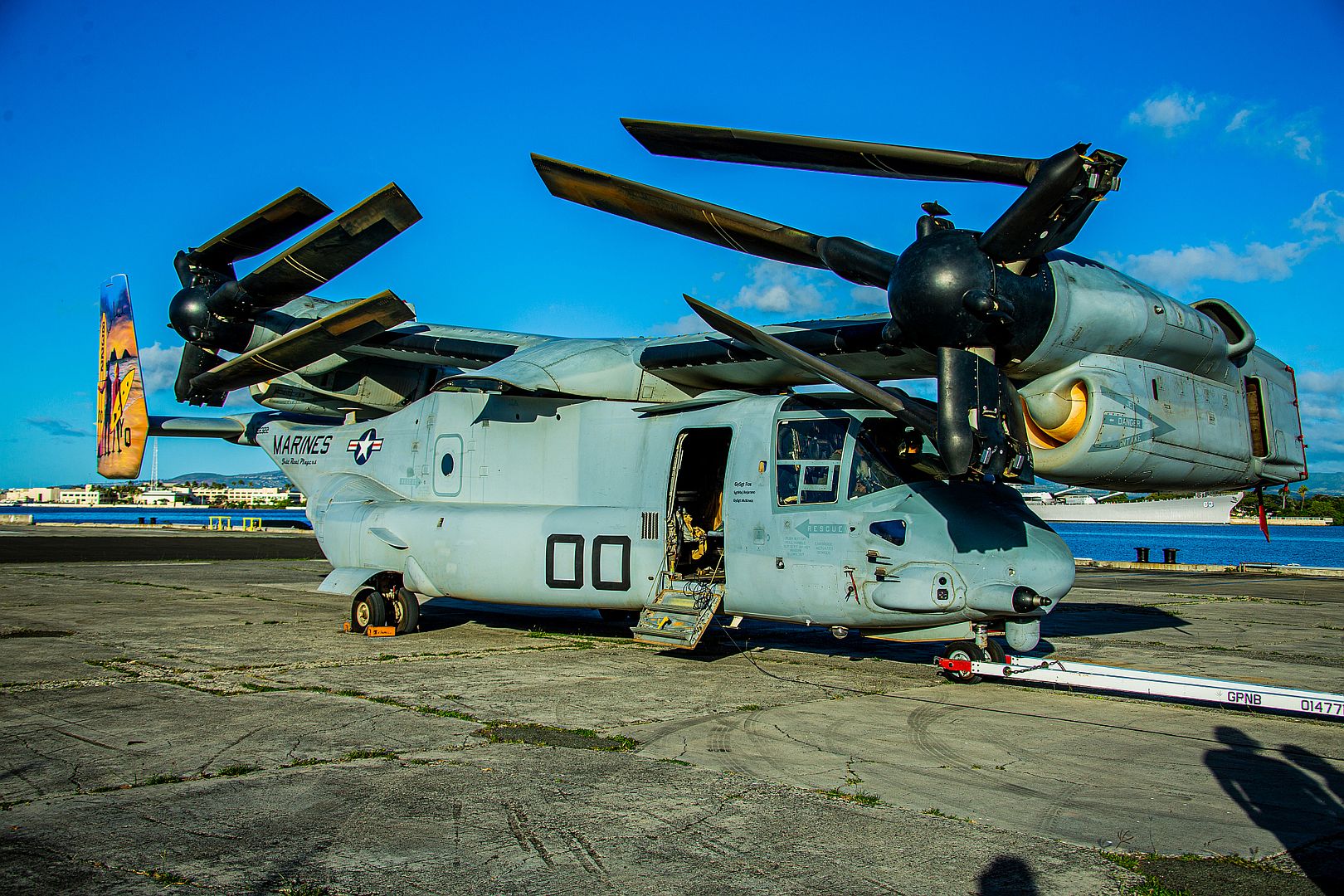
A U.S. Air Force KC-135 assigned to the Iowa Air National Guard?s 185th Air Refueling Wing in Sioux City, Iowa is painted with a diamond on the nose as part of a 75th anniversary paint scheme. The diamond is surrounded by silhouettes depicting each aircraft flown by the unit since its beginnings in 1946. A thunderbolt is included along with the diamond as an homage to aircraft flown during the 1950?s like the F-84 Thunderjet.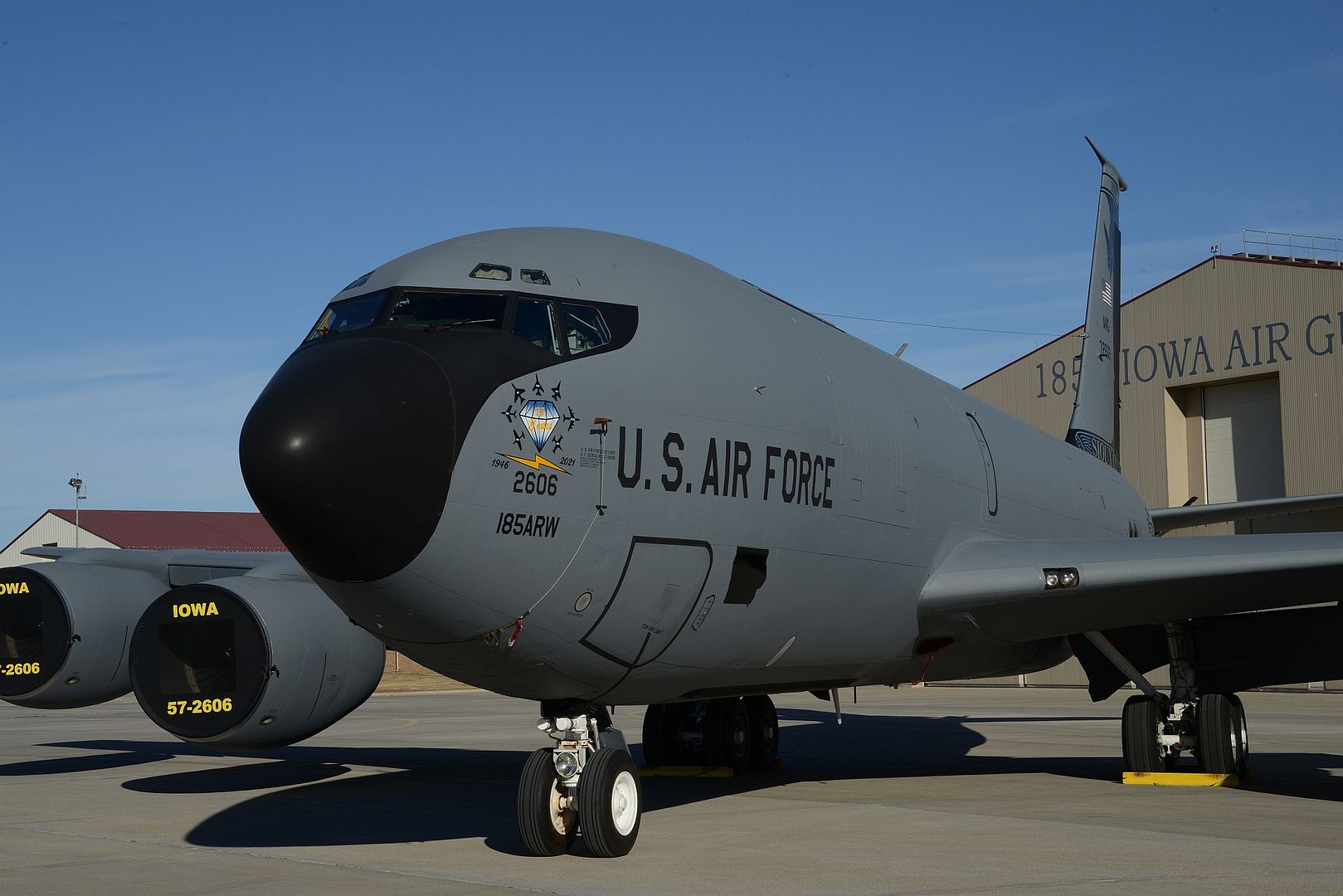
The tail design is a facsimile of the unit?s F-16 tail flash flown by the Sioux City, Iowa based Air Guard unit during the 1990s.
U.S. Air National Guard photos by Senior Master Sgt. Vincent De Groot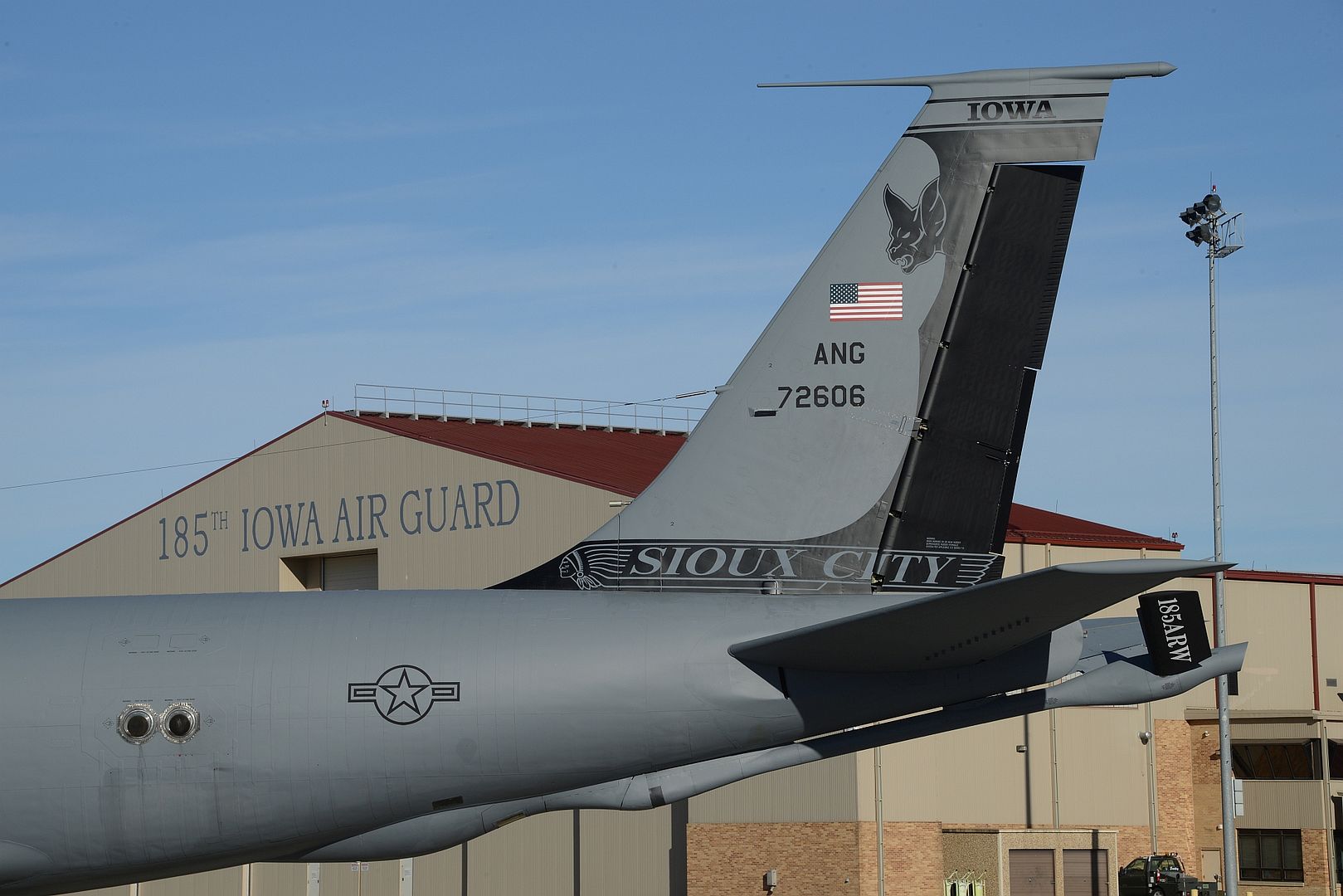
A U.S. Air Force F-16 Fighting Falcon departs after receiving fuel from a U.S. Air Force KC-135 Stratotanker, assigned to the 50th Expeditionary Aircraft Refueling Squadron, during an air refueling mission over Southwest Asia, Dec. 22, 2020. The F-16 Fighting Falcon is a compact, multirole fighter aircraft that delivers airpower to the U.S. Central Command area of responsibility. (U.S. Air Force photo by Staff Sgt. Trevor T. McBride)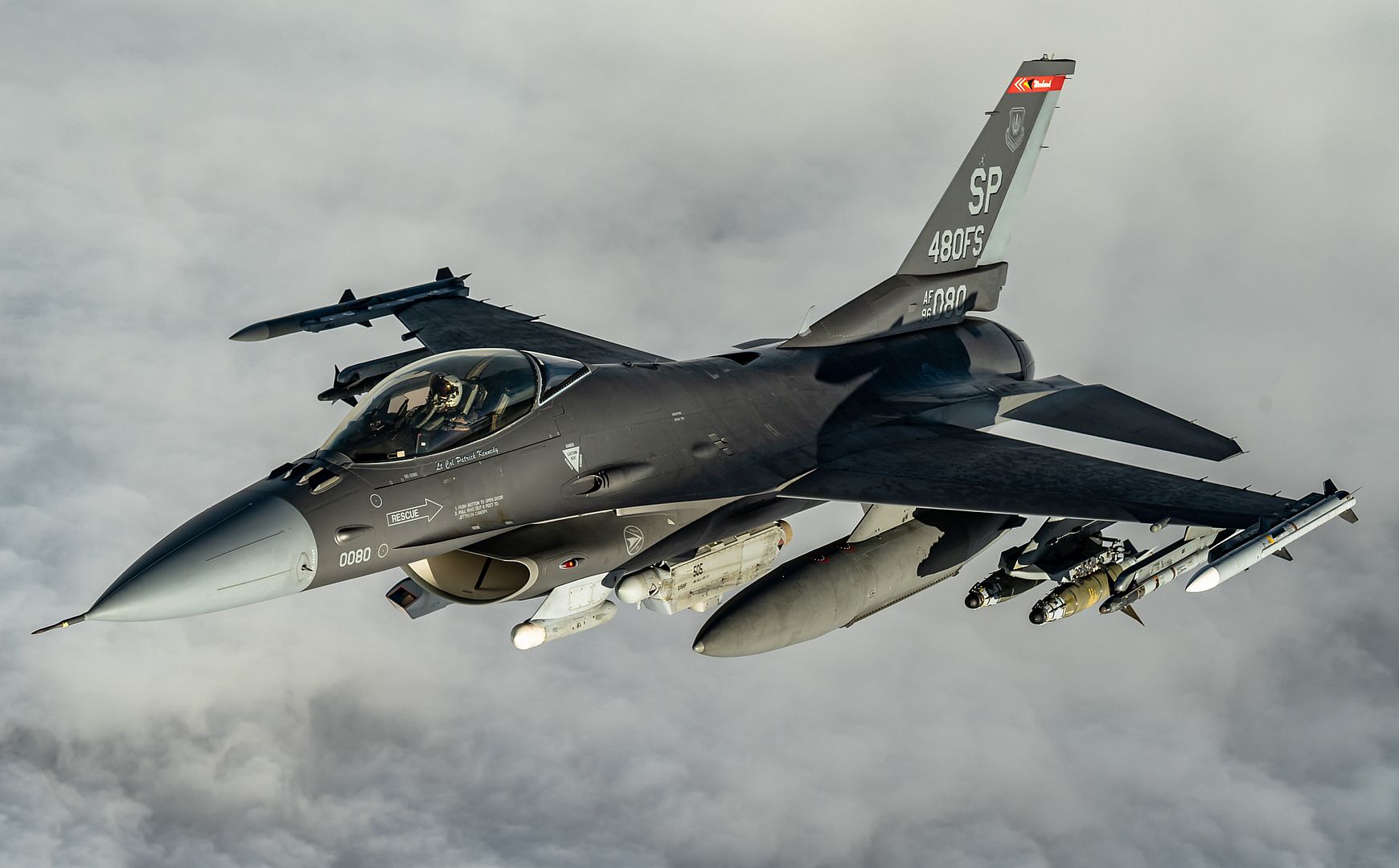
A U.S. Air Force F-15E Strike Eagle departs after receiving fuel from a U.S. Air Force KC-135 Stratotanker, assigned to the 50th Expeditionary Aircraft Refueling Squadron, during an air refueling mission over Southwest Asia, Dec. 22, 2020. The F-15E Strike Eagle is a dual-role fighter designed to perform air-to-air and air-to-ground missions, demonstrating U.S. Air Forces Central?s posture to deter regional aggressors. (U.S. Air Force photo by Staff Sgt. Trevor T. McBride)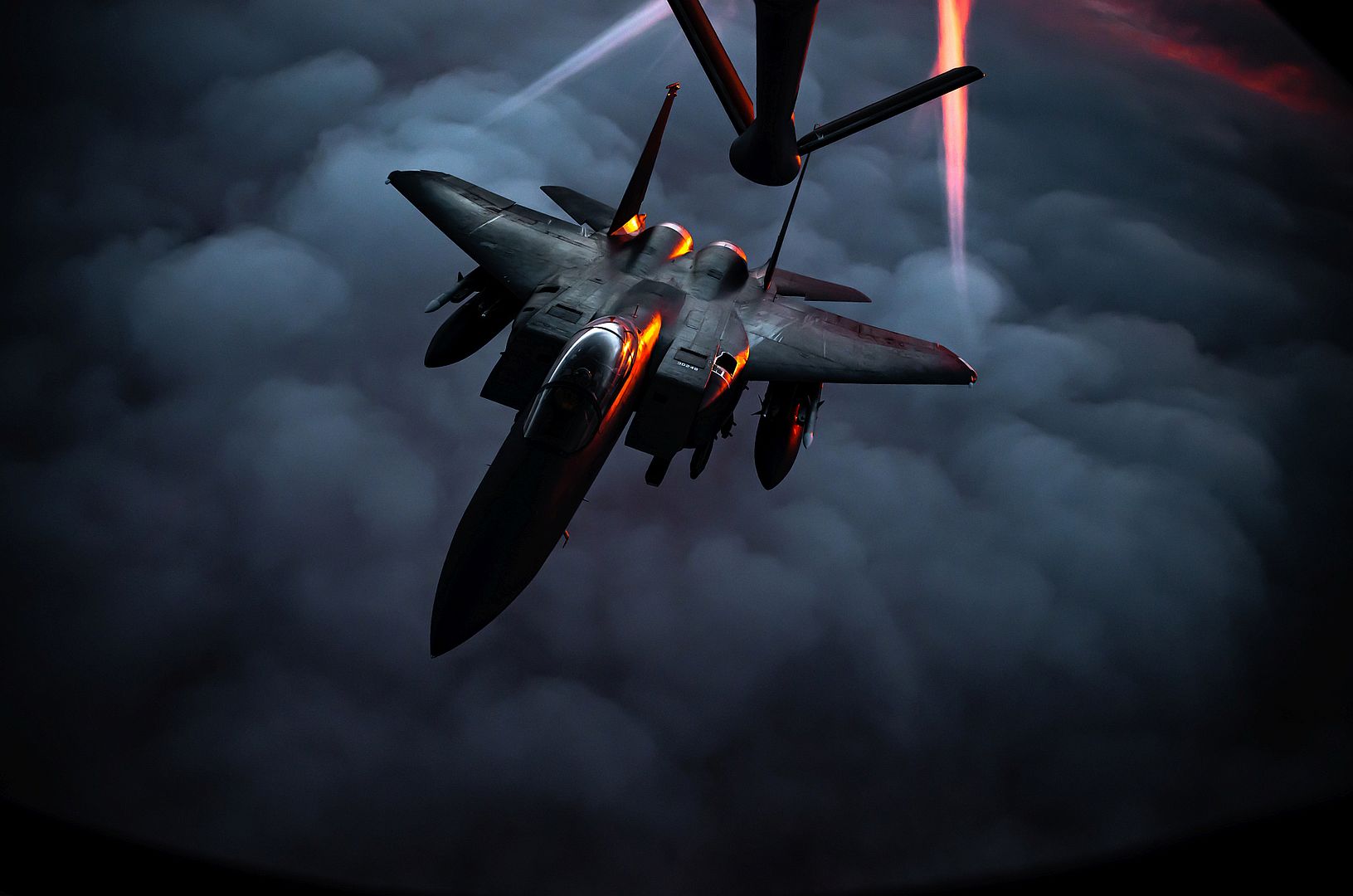
December 23, 2020 Montr?al Aviation, Business Aircraft, Press Release
Bombardier is pleased to announce a firm order for 10 Challenger 350 aircraft in a transaction valued at $267 million U.S., based on 2020 list prices.
?This order highlights the tremendous value customers place on the unmatched capabilities of our aircraft,? said ?ric Martel, President and Chief Executive Officer, Bombardier Inc. ?Bombardier?s newly refreshed portfolio and growing service network position the company well to respond to growing interest in private aviation and the enhanced safety it provides.?
The Bombardier Challenger 350 aircraft holds the coveted title of best-selling super midsize business jet since entering service six years ago, and continues to strengthen its position with performance enhancements and cabin upgrades. Discerning passengers seek out the Challenger 350 business jet thanks to its spacious and sleek design, productive environment, quiet cabin and smooth ride.
With a true seats full, tanks full, 3,200-nautical-mile range, the Challenger 350 business jet can connect New York to Los Angeles or London, and Paris to Dubai nonstop.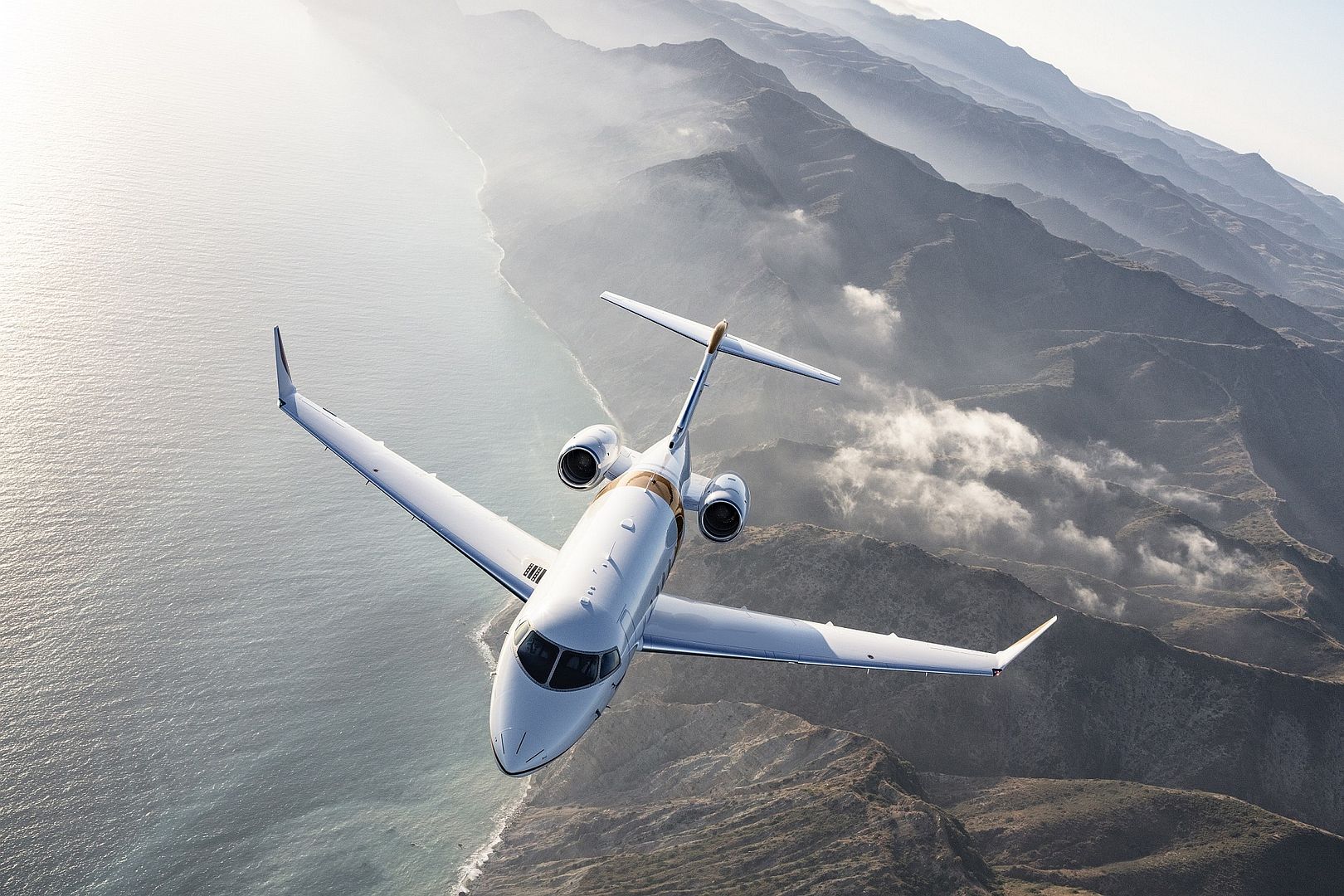
Rome 23 December 2020
The Qatar Emiri Air Force?s NH90 helicopter programme marked a major milestone last week with first flights performed in Italy and France. The first NH90 NATO frigate helicopter (NFH), assembled at Leonardo?s Venice Tessera facility, and the first tactical troop transport (TTH) over-land aircraft, assembled at Airbus Helicopters? Marignane site, took to the air on 15th and 18th of December respectively. The flights allowed crews to evaluate general handling and basic systems and the helicopters performed as expected.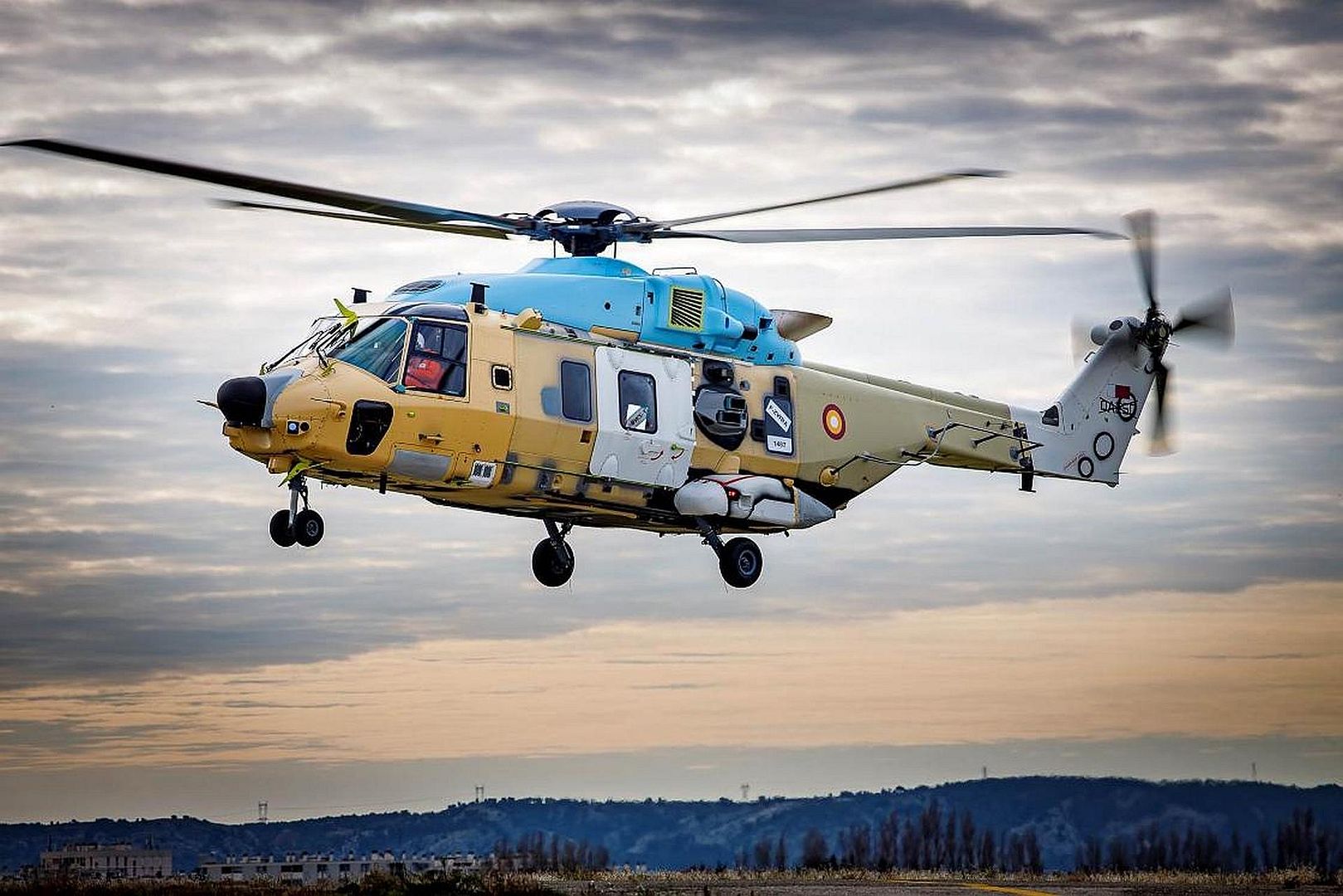
Qatar?s NH90 programme includes 16 NH90 TTHs for land operations, 12 NH90 NFHs for naval missions, a comprehensive support, maintenance & training services package and associated infrastructure. The programme has the potential to be extended in the future with the addition of 6 + 6 units in a mixture of TTH and NFH variants. Leonardo is prime contractor for the overall programme and is also responsible for the final assembly and delivery of the 12 NH90 NFH helicopters from its Venice Tessera facility. The company is also supplying simulators, training aids and an extensive maintenance support and training services package for aircrews and maintenance technicians. Leonardo is providing, contributing to or supporting the integration of various avionics and sensor payloads, including the Leonardo LEOSS-T HD electro-optical system, HD Mission Video Recorder, Automatic Identification System, Tactical video link and Full HD display for cabin consoles. Airbus Helicopters is responsible for carrying out the final assembly of the 16 NH90 TTH aircraft. Acceptance of the first batch of NH90s by the Qatar Emiri Air Force is scheduled to start before the end of 2021, with the last helicopter planned to be delivered in 2025.
Gian Piero Cutillo, Leonardo Helicopters MD, said ?We?re extremely pleased to celebrate this important achievement as we continue to work to deliver this programme. The NH90 is set to provide the Qatar Ministry of Defence, an important and longstanding customer, with outstanding operational capabilities suitable for a range of missions. Together with our industrial partners, we?re committed to completing and introducing this essential defence and security enabler for our customer.?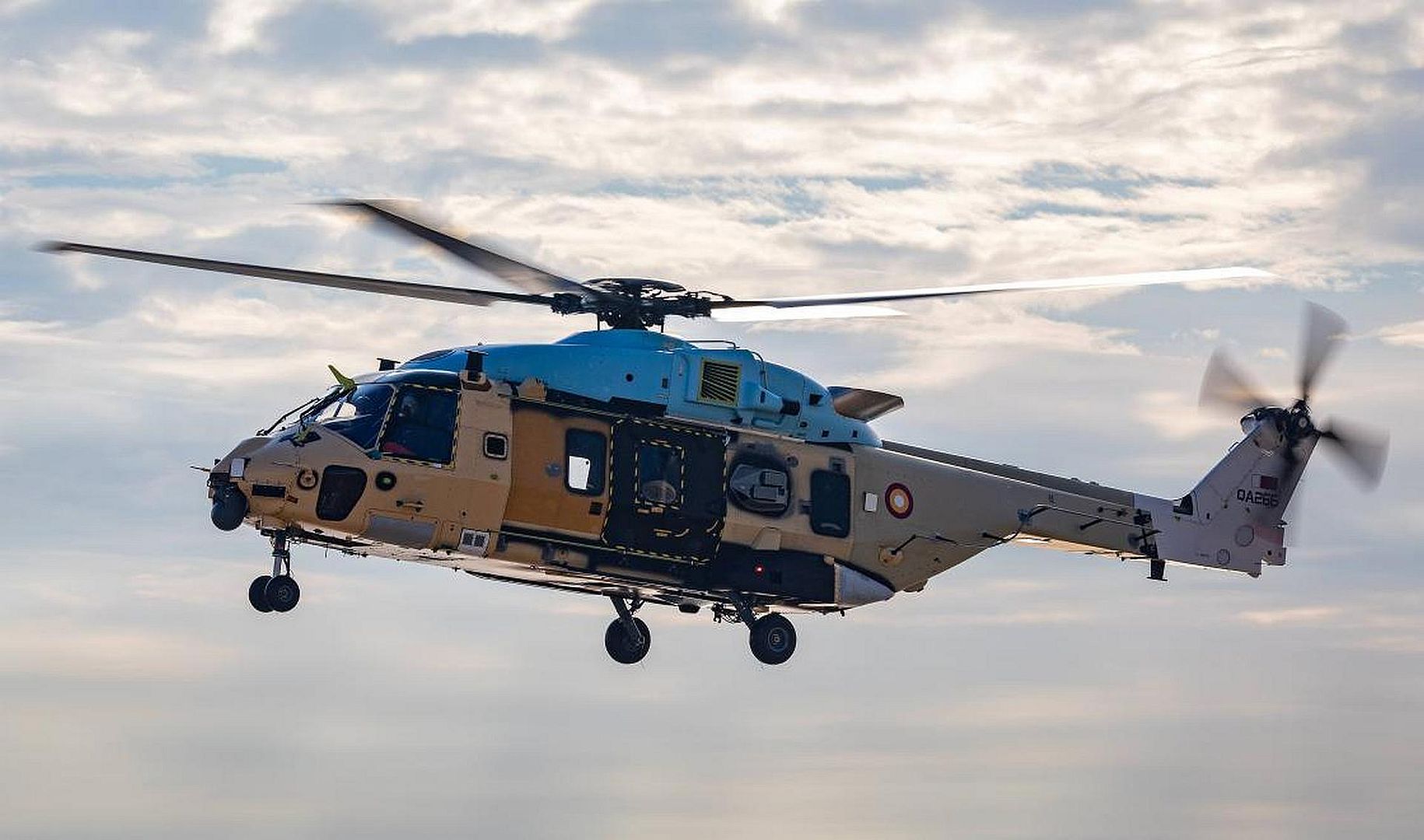
Rome 23 December 2020
Yesterday Leonardo delivered the first two M-345 jet trainer aircraft to the Italian Air Force, which to-date has ordered 18 units from a total requirement for up to 45 aircraft. The new type, designated T-345A by the Italian Air Force, will gradually replace the 137 MB-339s which have been in service since 1982.
Marco Zoff, Leonardo Aircraft Managing Director, said: ?Building on our heritage and expertise in jet trainers, the M-345 will allow our customers to achieve a significant improvement in training effectiveness while at the same time reducing operating costs. This first delivery to the Italian Air Force is a key milestone, the result of a longstanding and productive team working closely together with the operator.?
The new M-345, designed to meet basic and basic-advanced training requirements, will complement the in-service M-346, which is used for advanced pilot training. Leonardo?s integrated training system developed around the M-345 platform, is representative of the company?s technological leadership in training pilots to fly current and future generation aircraft. The system benefits from experience with, and technology developed for, the M-346, which includes a "Live Virtual Constructive" capability. This allows aircraft which are flying live training missions to incorporate simulated "friend" or "foe" elements into scenarios, allowing the pilot to be exposed to the full range of possible operational situations.
The M-345 is a high-performance aircraft which supports a pilot?s transition from basic trainers to latest-generation fighters. The Italian Air Force?s acquisition of the new aircraft is an important step forward in the modernization of its fleet, with the M-345 replacing the MB-339A in Air Force?s second and third military pilot training phases. The M-345 has also been chosen as the new aircraft of the Italian Air Force?s acrobatic team, the ?Frecce Tricolori?.
-
 Main AdminA U.S. Air Force AC-130J Ghostrider receives fuel from a U.S. Air Force KC-135 Stratotanker, assigned to the 340th Expeditionary Aircraft Refueling Squadron, during a night-time air refueling mission over Southwest Asia, Dec. 25, 2020. The KC-135 Stratotanker delivers U.S. Air Forces Central a global aerial refueling capability to support joint and coalition aircraft throughout the U.S. Central Command area of responsibility. (U.S. Air Force photo by Staff Sgt. Trevor T. McBride)
Main AdminA U.S. Air Force AC-130J Ghostrider receives fuel from a U.S. Air Force KC-135 Stratotanker, assigned to the 340th Expeditionary Aircraft Refueling Squadron, during a night-time air refueling mission over Southwest Asia, Dec. 25, 2020. The KC-135 Stratotanker delivers U.S. Air Forces Central a global aerial refueling capability to support joint and coalition aircraft throughout the U.S. Central Command area of responsibility. (U.S. Air Force photo by Staff Sgt. Trevor T. McBride)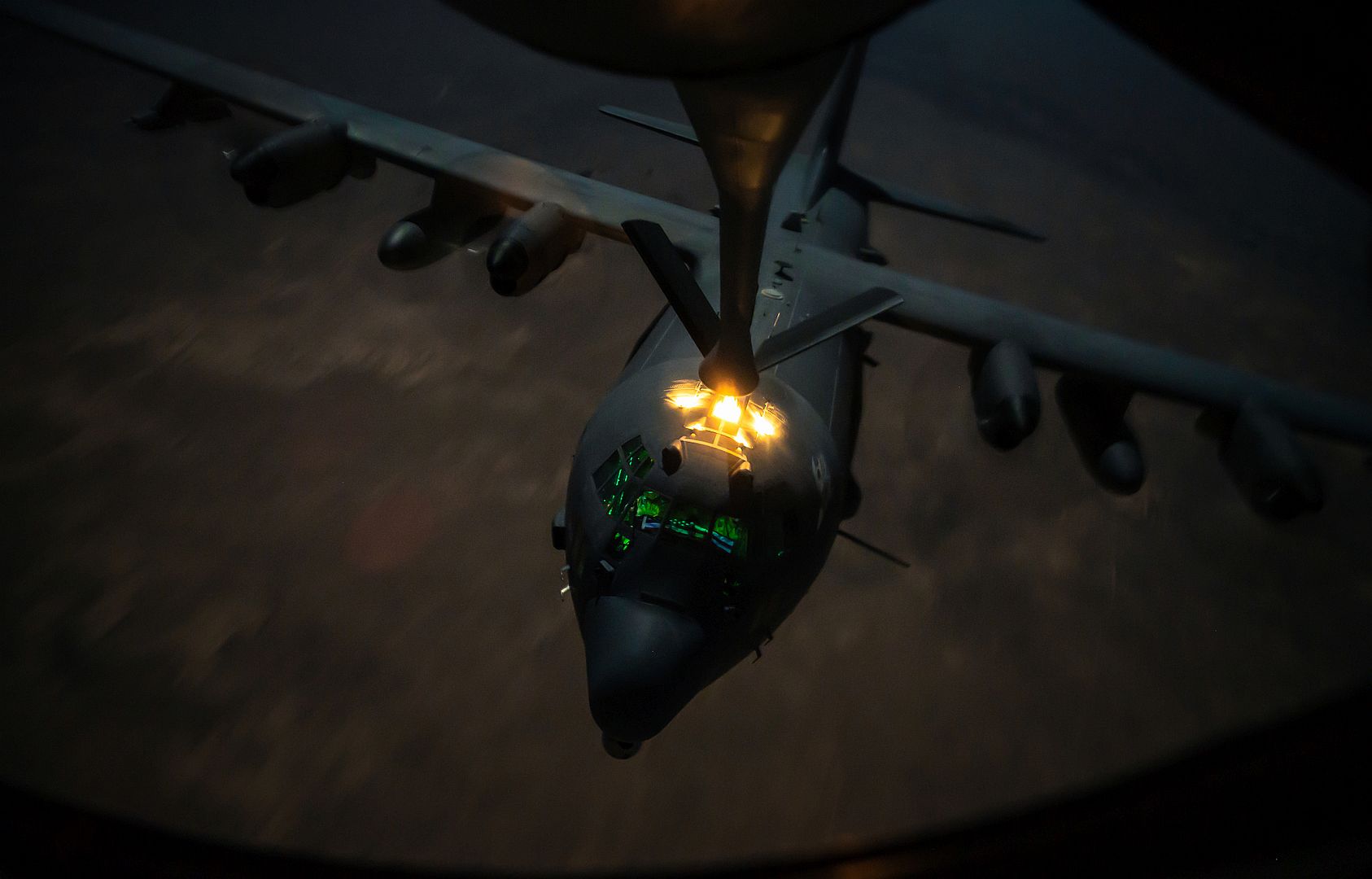
A U.S. Air Force C-17 Globemaster III loadmaster assigned to the 816th Expeditionary Airlift Squadron, completes preflight checks during a mission in Southwest Asia, Dec. 25, 2020. The 816th EAS, deployed with U.S. Air Forces Central, is responsible for delivering cargo and passengers to U.S. and coalition forces' bases, throughout the U.S. Central Command area of responsibility. (U.S. Air Force photo by Master Sgt. Joey Swafford)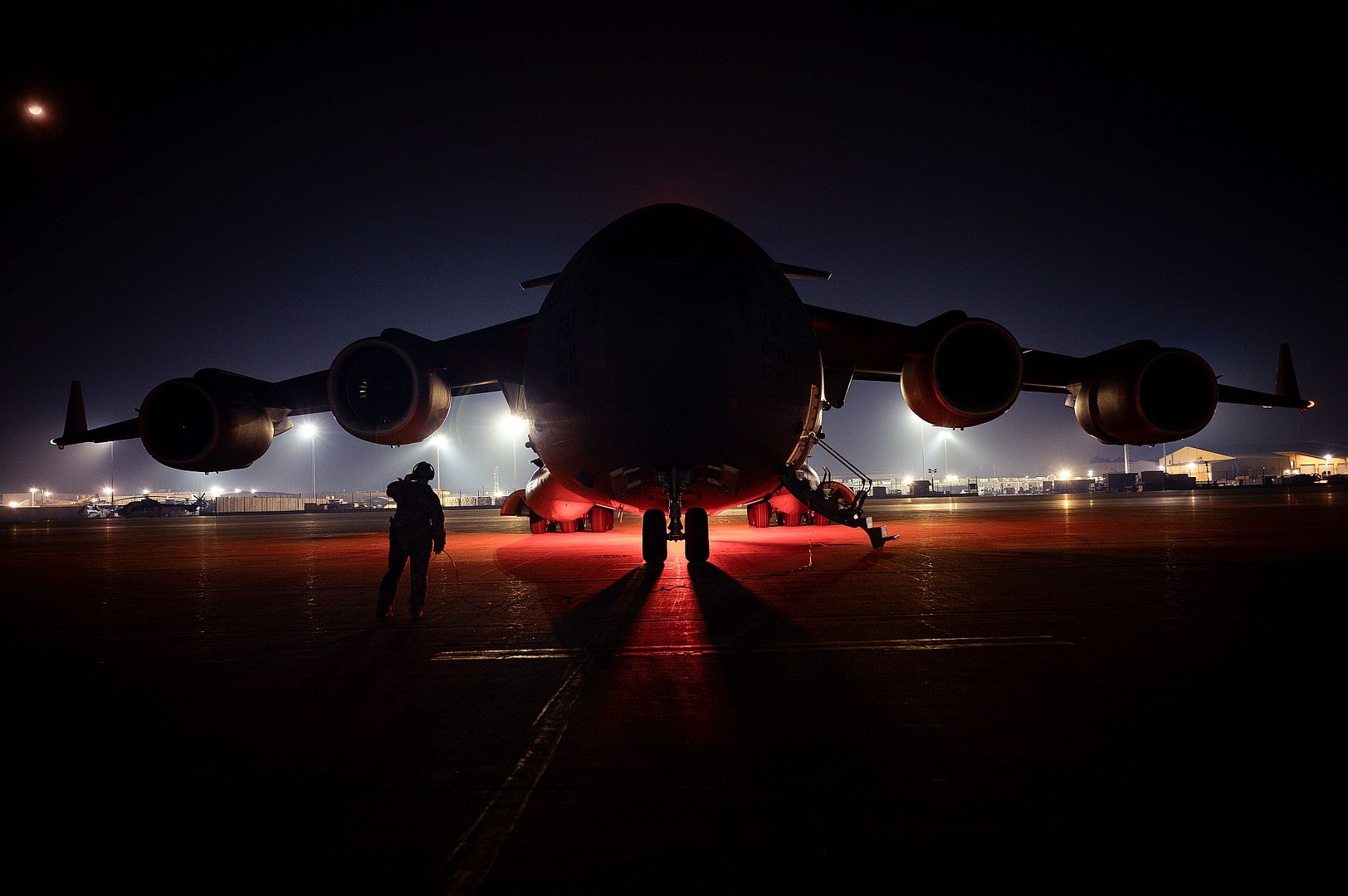
INDIAN OCEAN (Dec. 28, 2020) An F/A-18E Super Hornet, from the ?Kestrels? of Strike Fighter Squadron (VFA) 137, launches off of the flight deck of the aircraft carrier USS Nimitz (CVN 68) to provide close-air support to Operation Octave Quartz. The mission of OOQ is to relocate U.S. Department of Defense forces in Somalia to other East Africa operating locations while maintaining pressure on violent extremists and supporting partner forces. (U.S. Navy photo by Mass Communication Specialist 3rd Class Cheyenne Geletka/Released)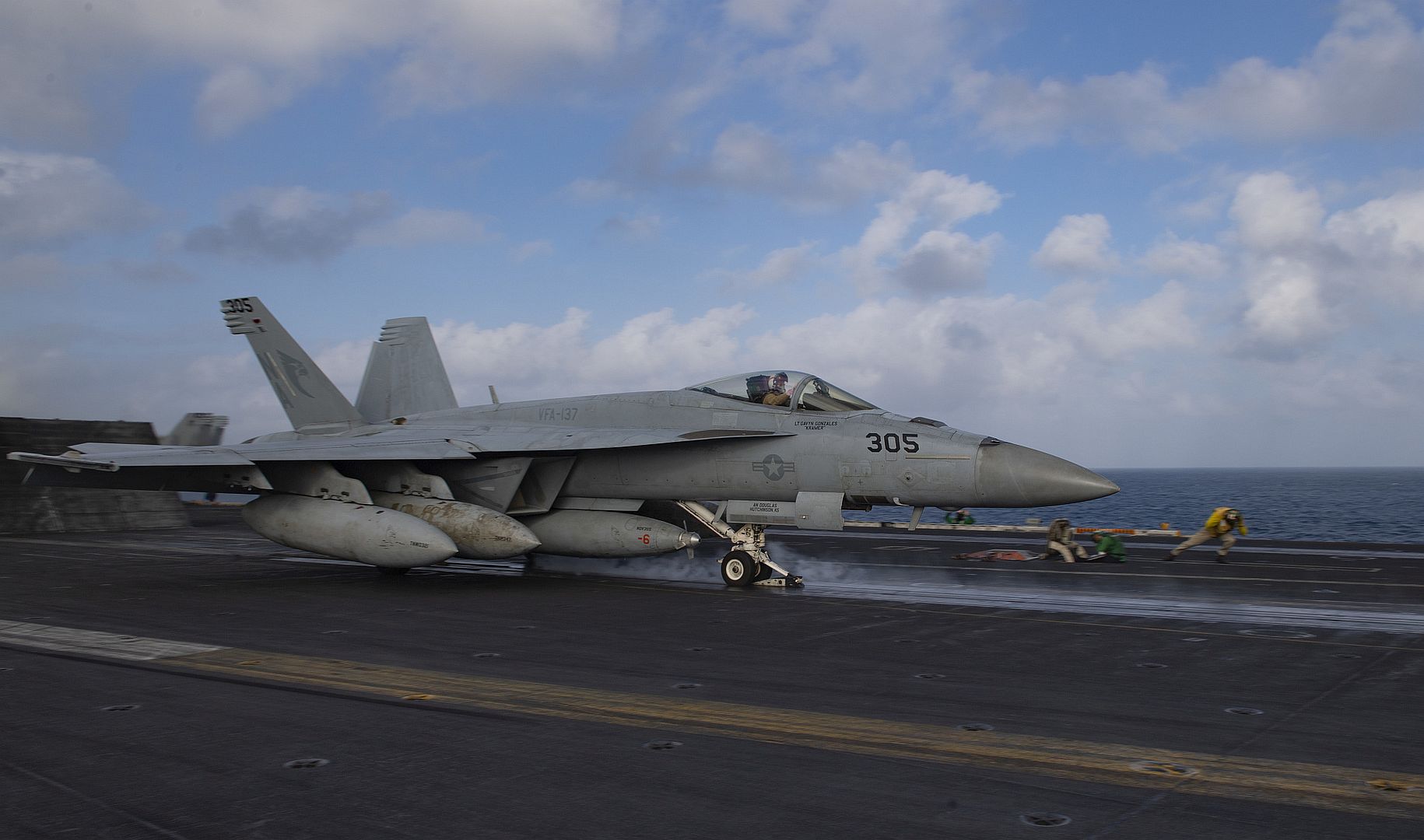
Two F-16 Fighting Falcons navigated by Airmen assigned to the 24th Tactical Air Support Squadron taxi in after their fini flight prior to the inactivation ceremony of the 24th TASS at Nellis Air Force Base, Nevada, Dec. 23, 2020. Fini-flight, or final flight, is a tradition that started during the Vietnam era when a pilot completed 100 missions. (U.S. Air Force photo by Tech. Sgt. Alexandre Montes)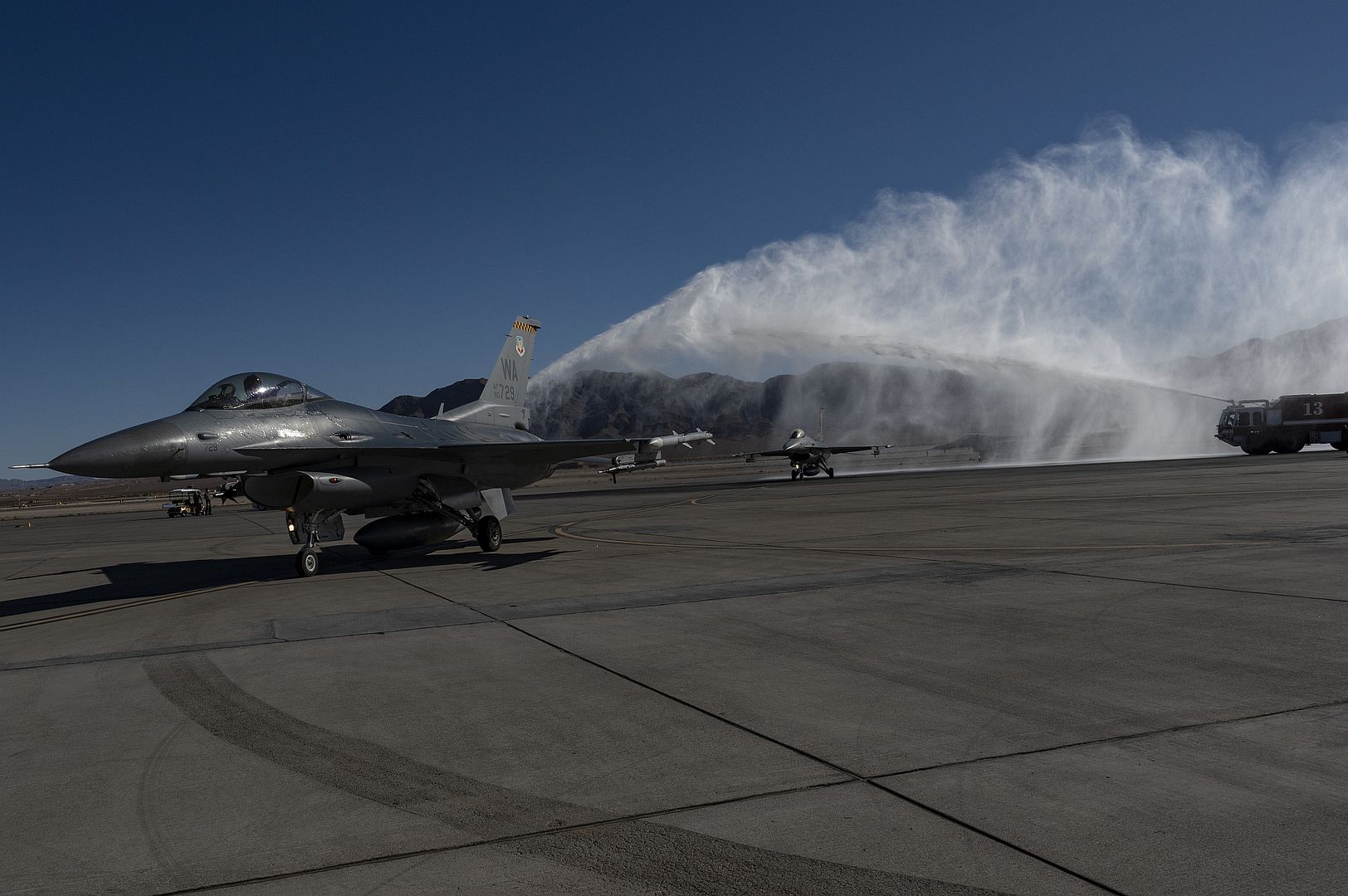
29.12.2020
Ka-27M helicopters from the naval aviation and air defense of the Black Sea Fleet conducted an exercise to search for a mock enemy submarine in the Black sea.
As part of the exercise, helicopter crews took off from one of the airfields in the Crimea and worked out a set of measures to search for and detect a mock enemy submarine.
The role of the enemy at the exercise was played by one submarine of the Fleet's formation.
During the exercise, Ka-27M helicopters used a drop-down sonar station that can detect and determine the coordinates of various underwater targets. Naval aviation helicopter crews successfully completed the search task and passed the data to the tactical group of anti-submarine ships.
The exercise was held in accordance with the plan of combat training of the Black Sea Fleet forces.
(Photo courtesy of the Ministry of Defence of the Russian Federation)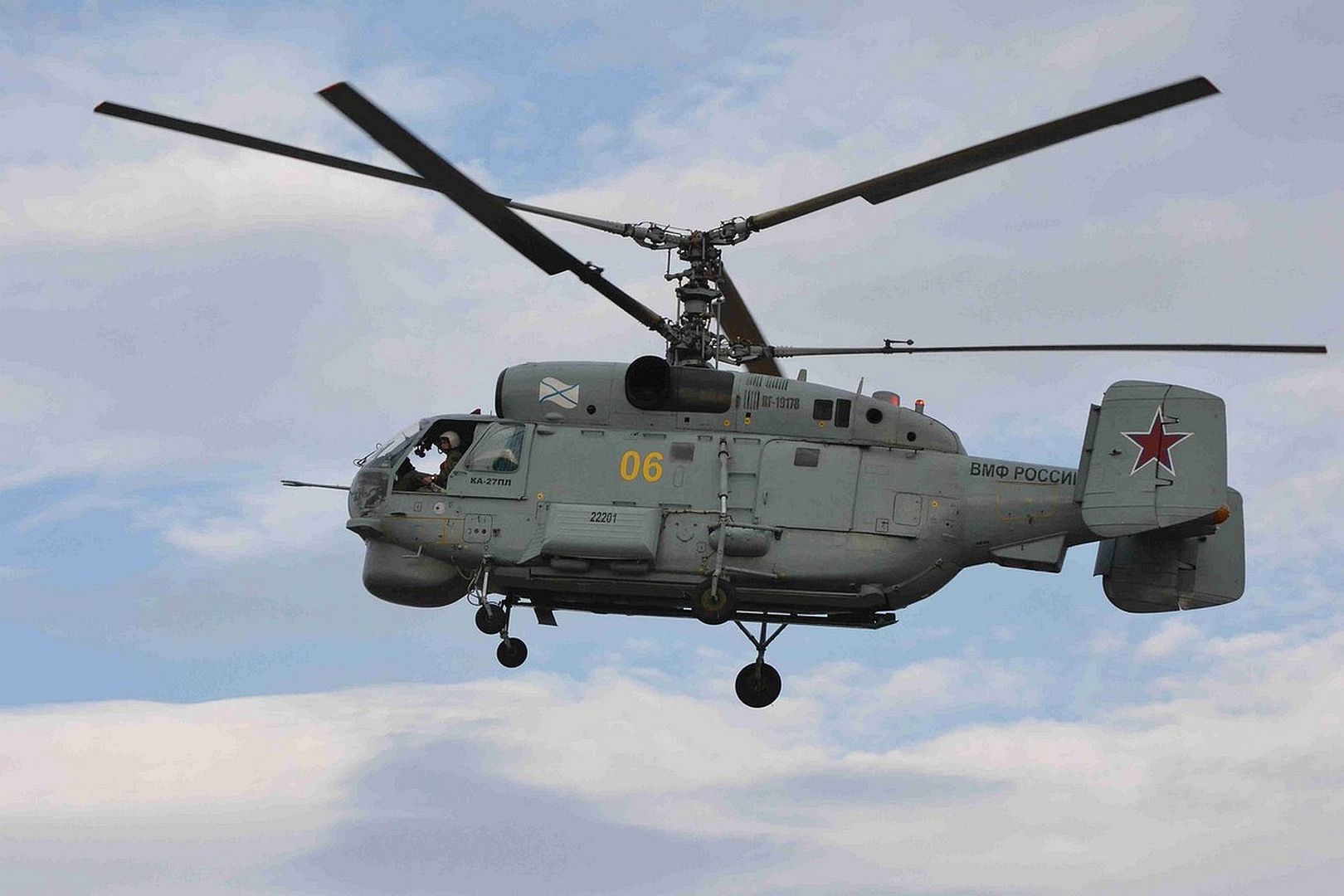
Toulouse, 28 December 2020 ? New Caledonia?s Aircalin has taken delivery of its first A320neo. The aircraft joins two A330neo already delivered under the carrier?s fleet modernisation plan.
With its new fleet the airline benefits from the lowest operating costs in the respective size categories, as well as the unique commonality between variants of the Airbus Family.
Aircalin?s A320neo is powered by Pratt & Whitney PW1000 engines and configured in a single class layout with 168 seats.
With the A320neo, Aircalin will be able to increase capacity on its flights and open new routes across the Pacific region.
The A320neo Family offers the widest single-aisle cabin in the sky and incorporates the latest technologies, including new generation engines and Sharklets, delivering a 20 per cent reduction in fuel consumption, as well as 50 per cent less noise compared to previous generation aircraft.
At the end of November 2020, the A320neo Family had received 7,455 firm orders from over 120 customers worldwide.
Post a reply
- Go to Previous topic
- Go to Next topic
- Go to Welcome
- Go to Introduce Yourself
- Go to General Discussion
- Go to Screenshots, Images and Videos
- Go to Off topic
- Go to Works in Progress
- Go to Skinning Tips / Tutorials
- Go to Skin Requests
- Go to IJAAF Library
- Go to Luftwaffe Library
- Go to RAF Library
- Go to USAAF / USN Library
- Go to Misc Library
- Go to The Ops Room
- Go to Made in Germany
- Go to Campaigns and Missions
- Go to Works in Progress
- Go to Juri's Air-Raid Shelter
- Go to Campaigns and Missions
- Go to Works in Progress
- Go to Skinpacks
- Go to External Projects Discussion
- Go to Books & Resources
